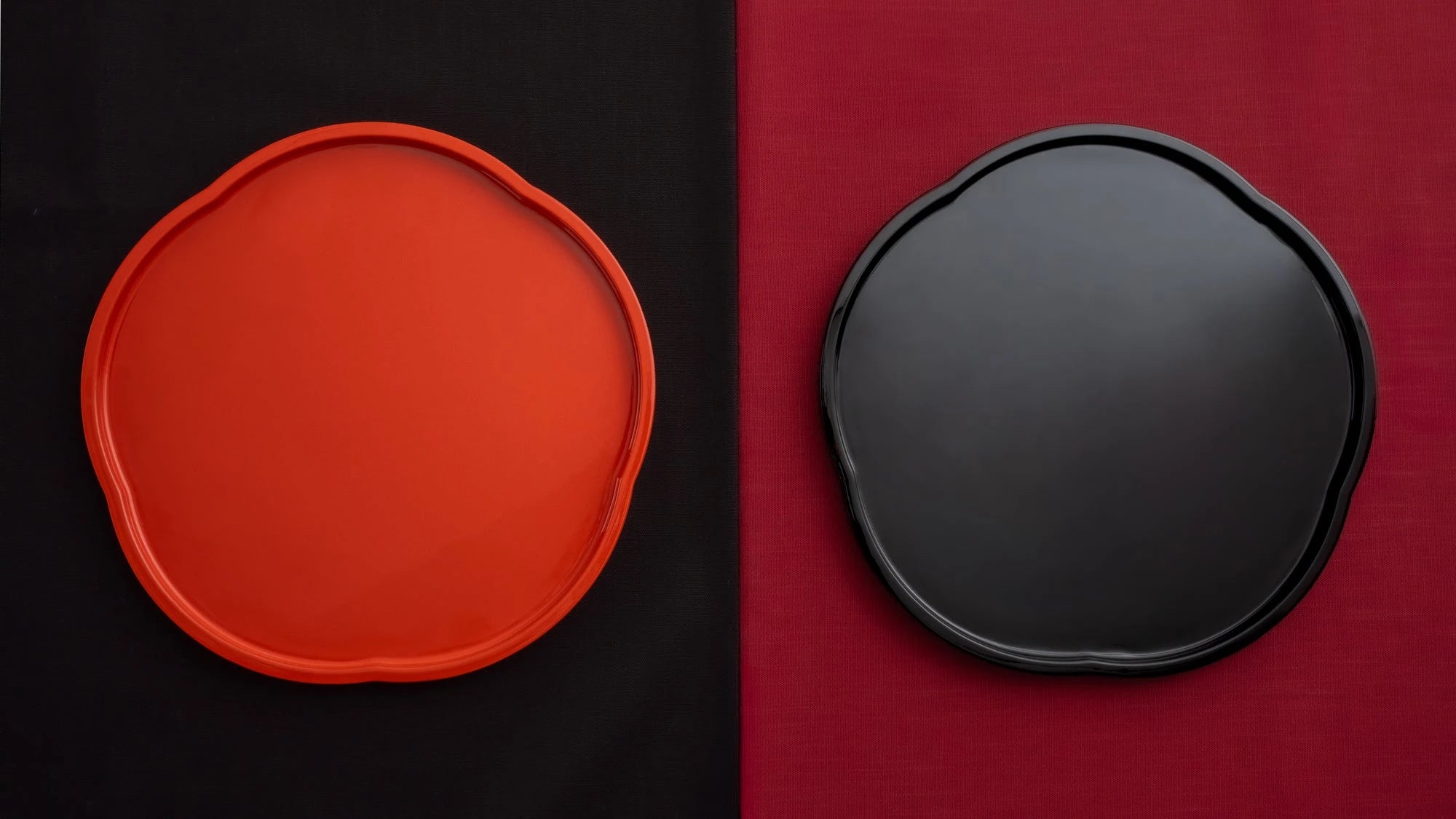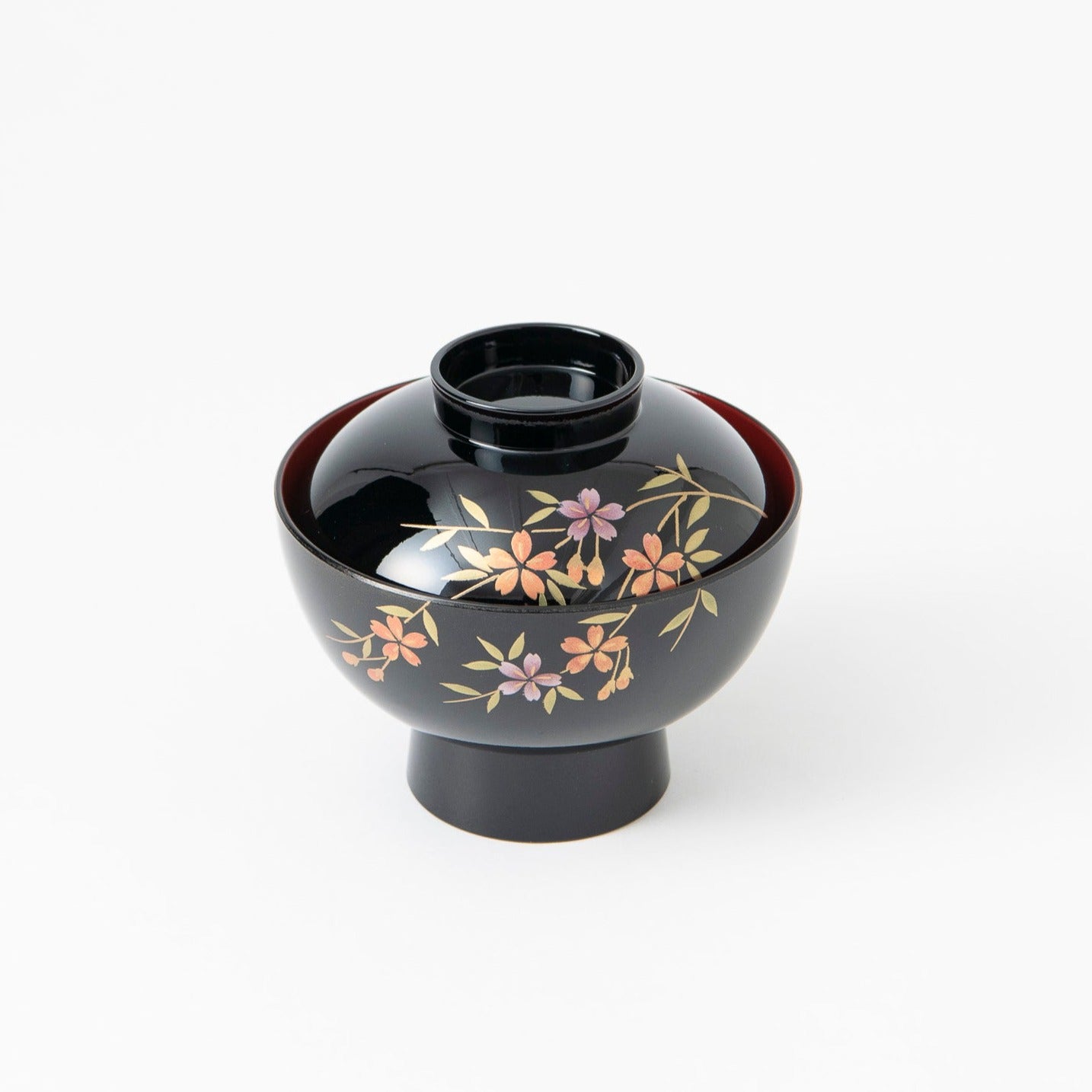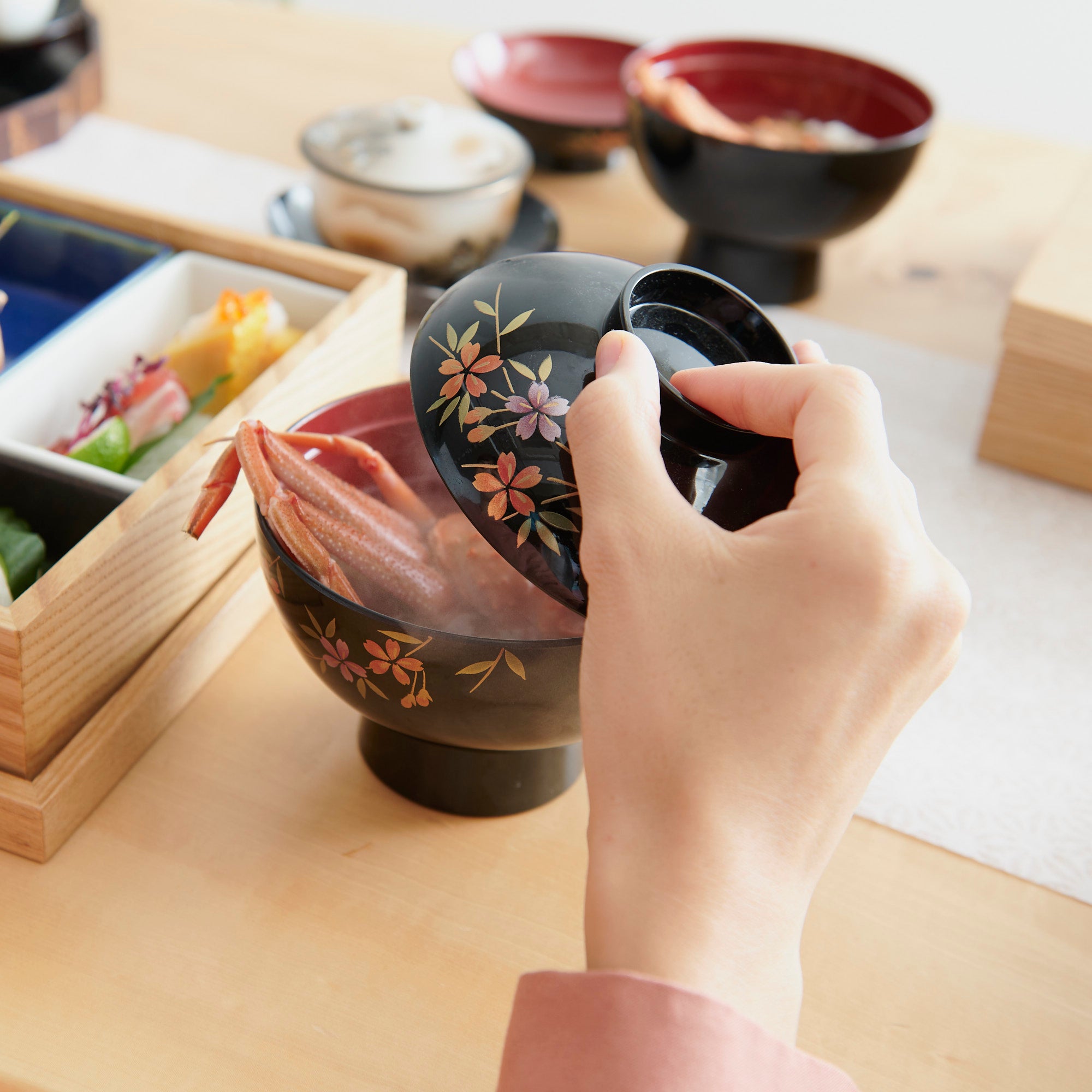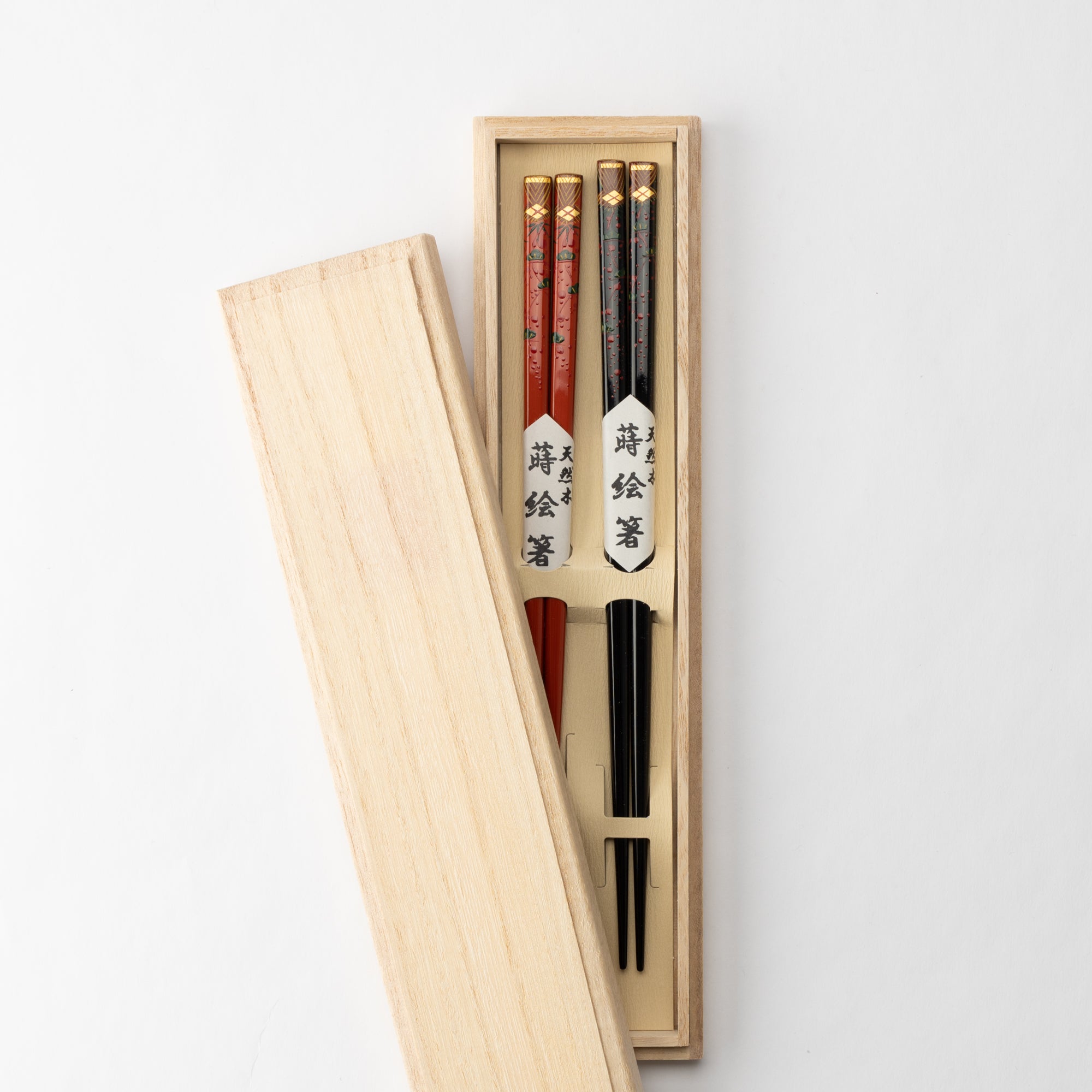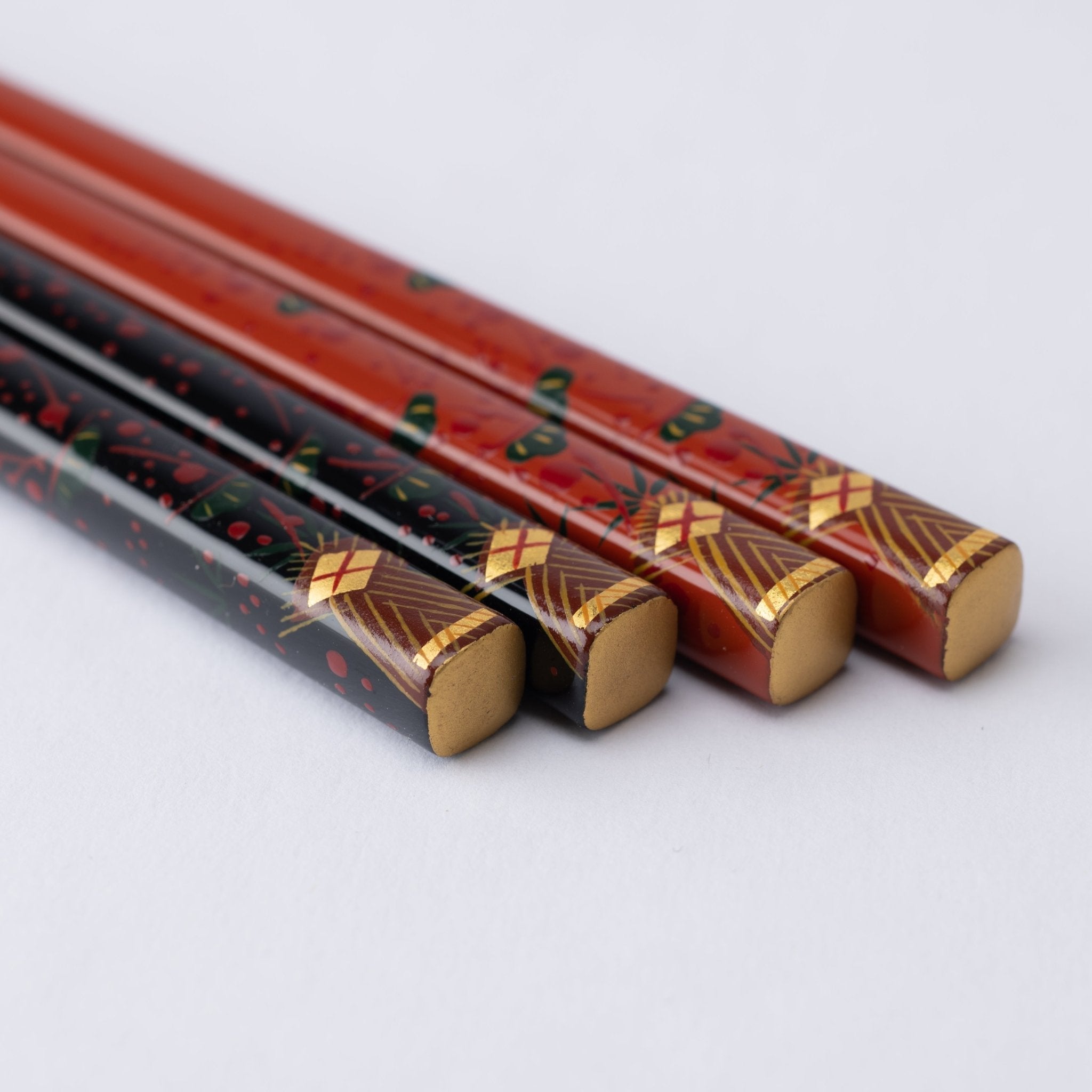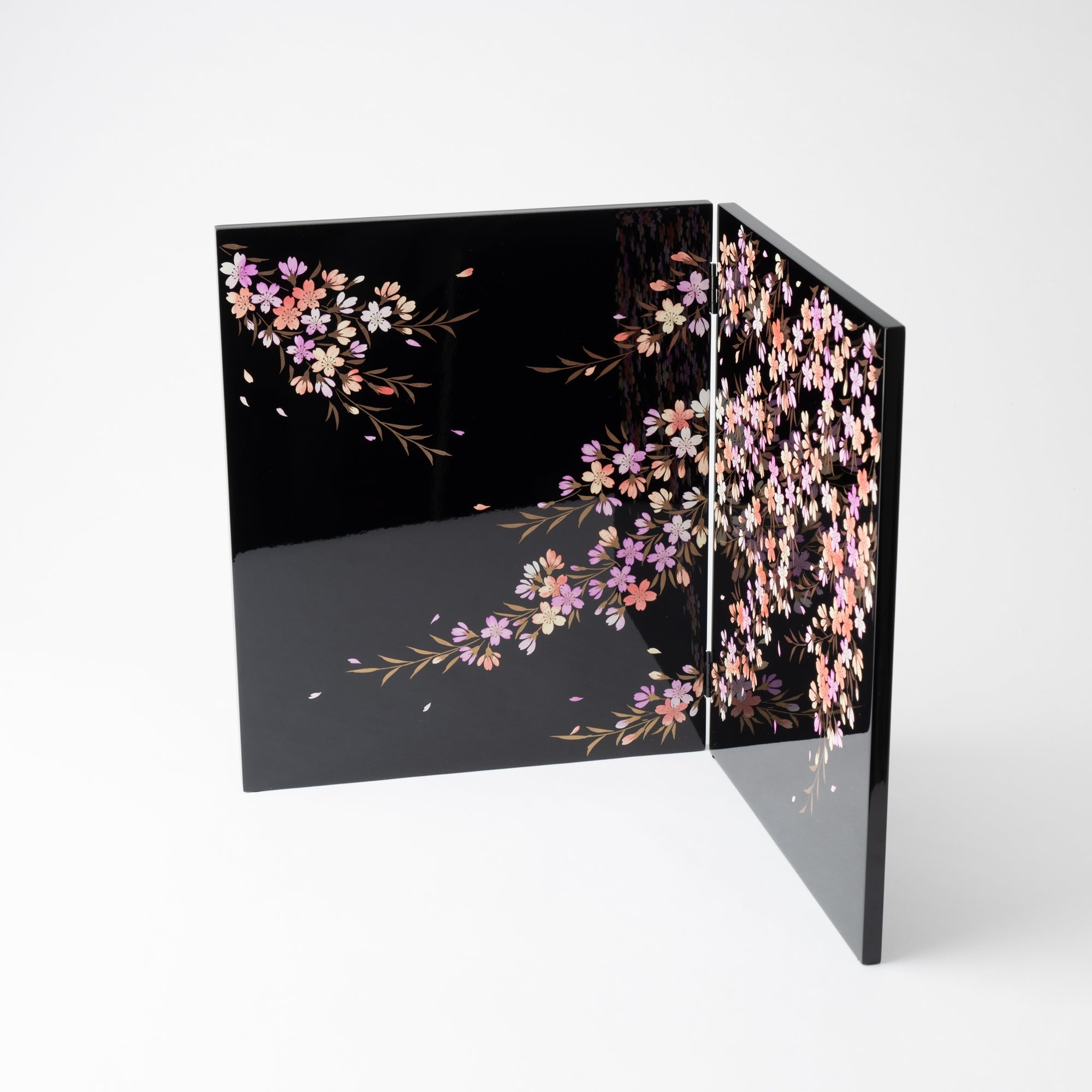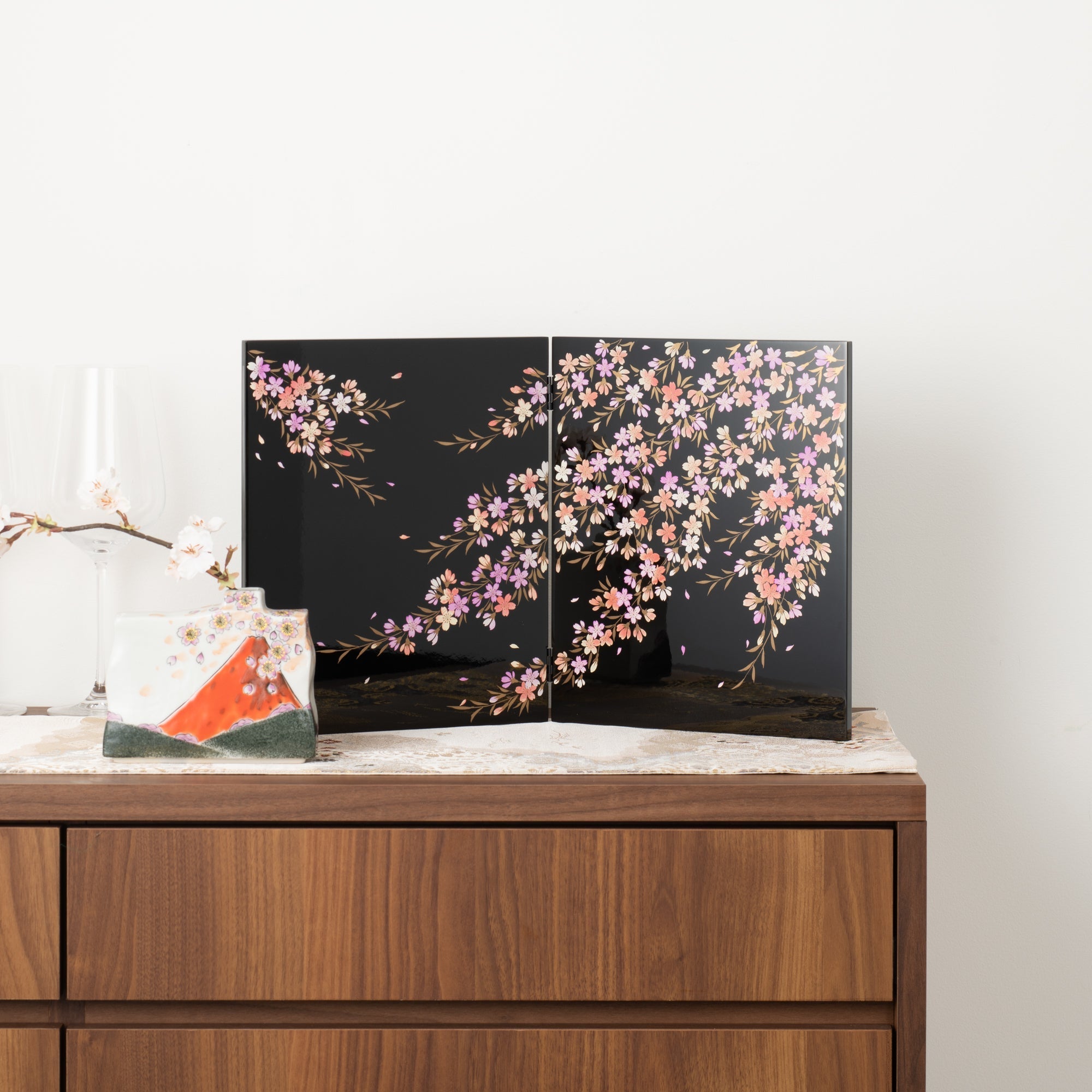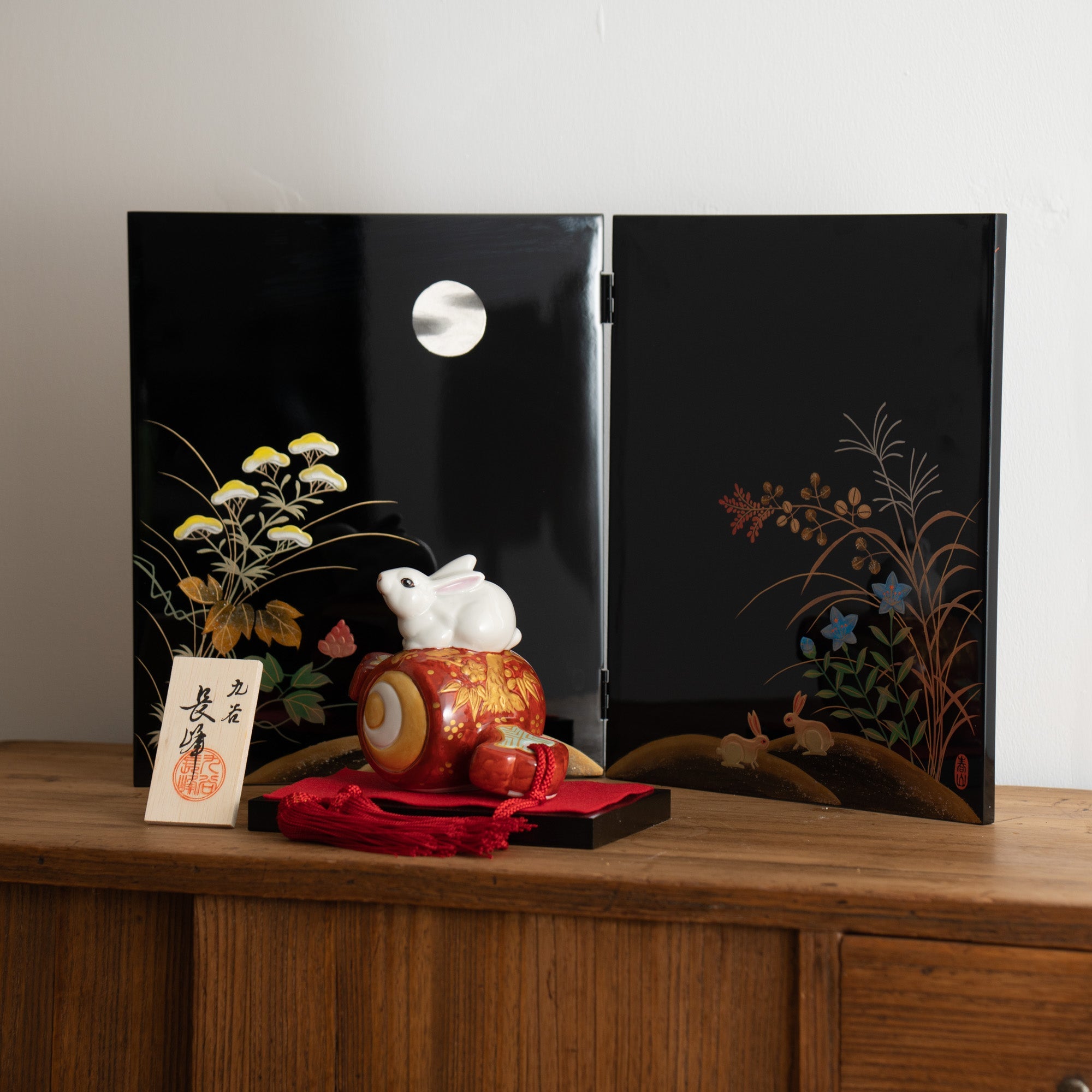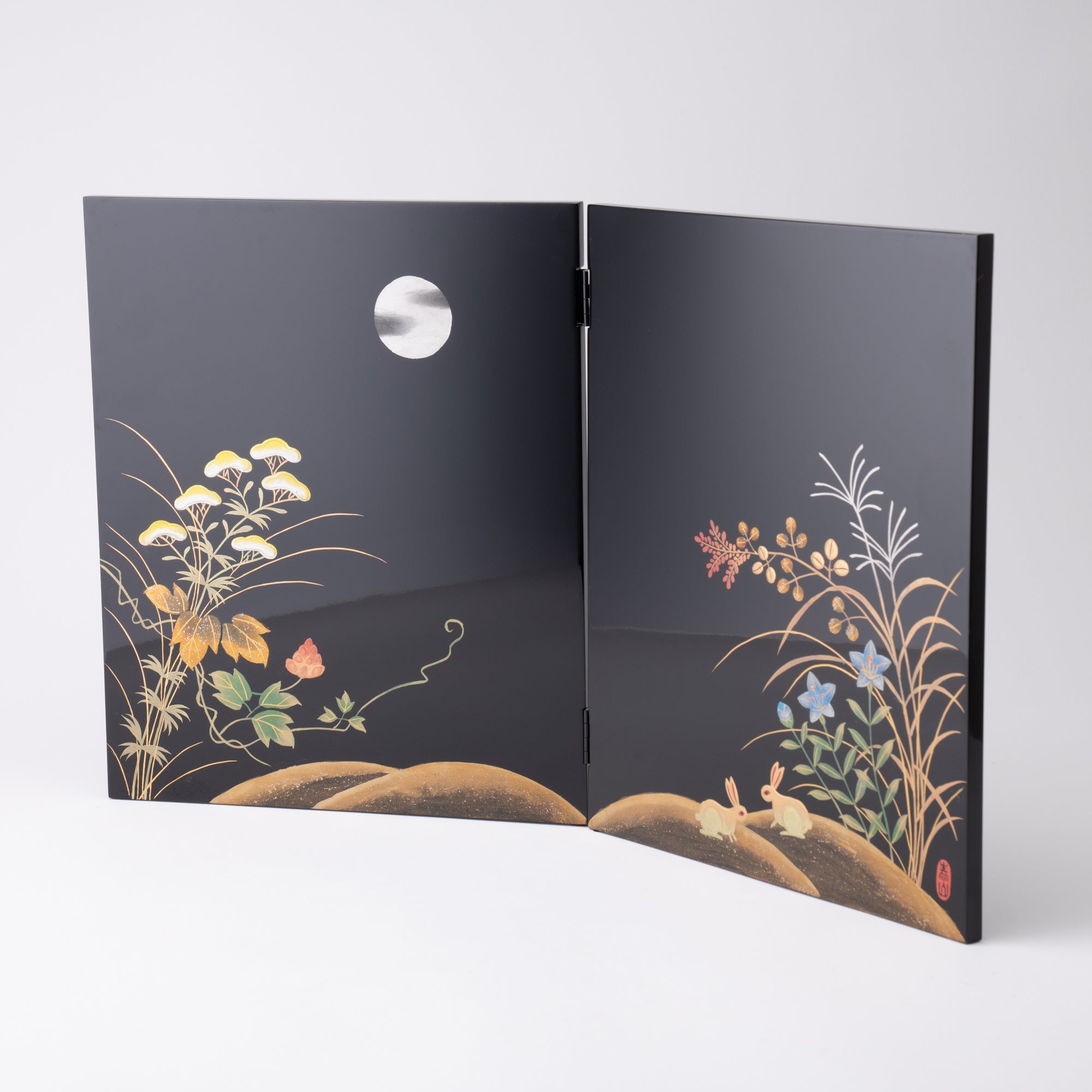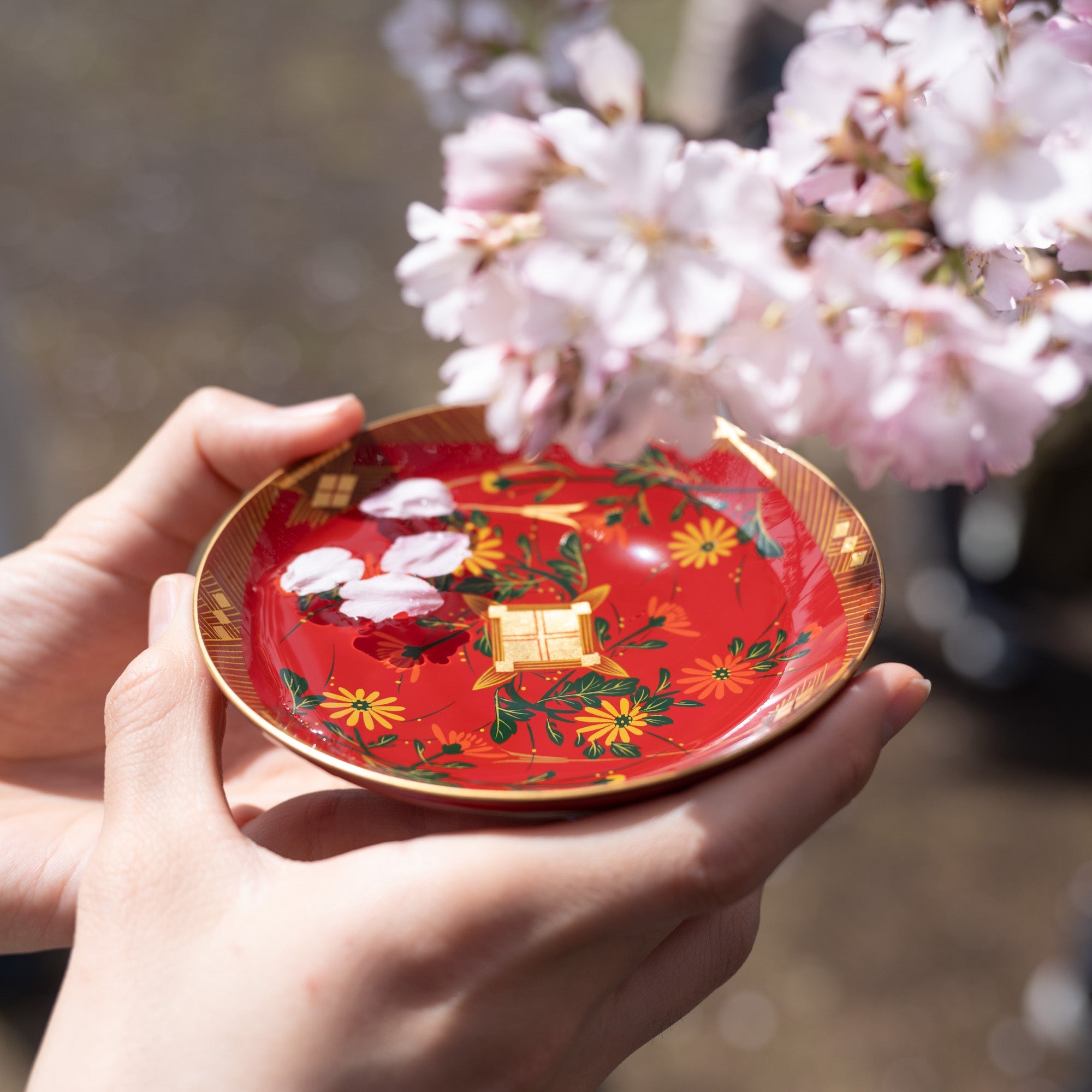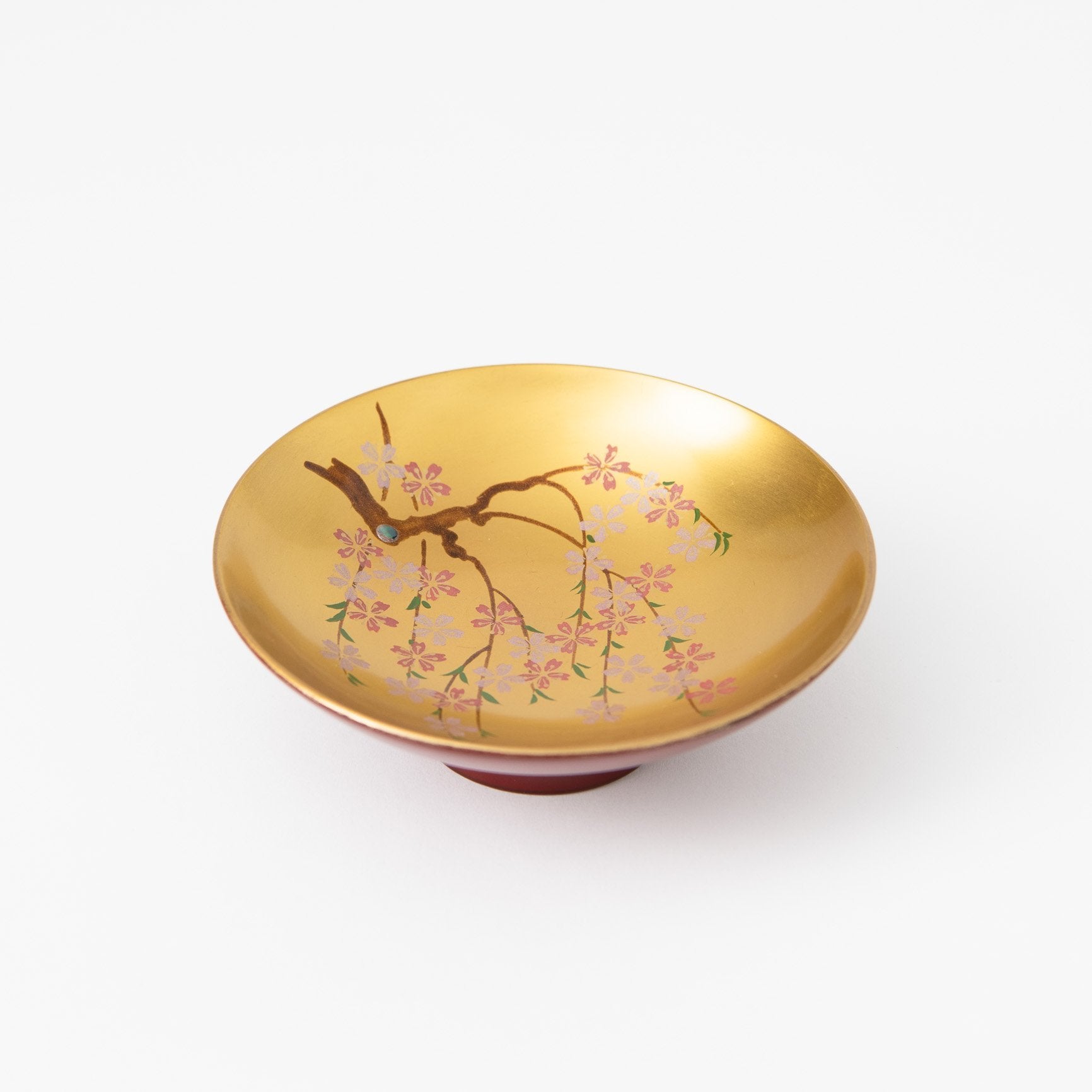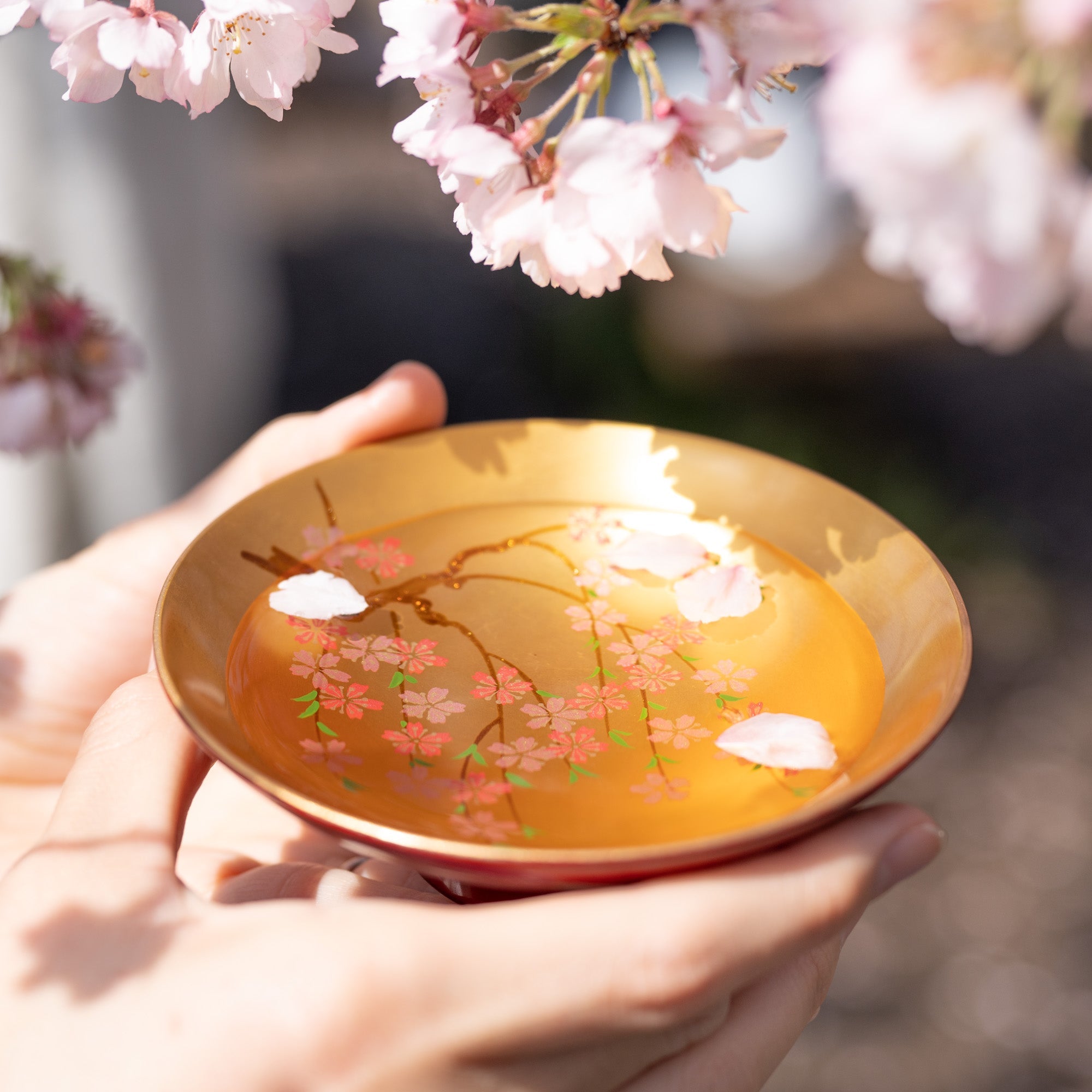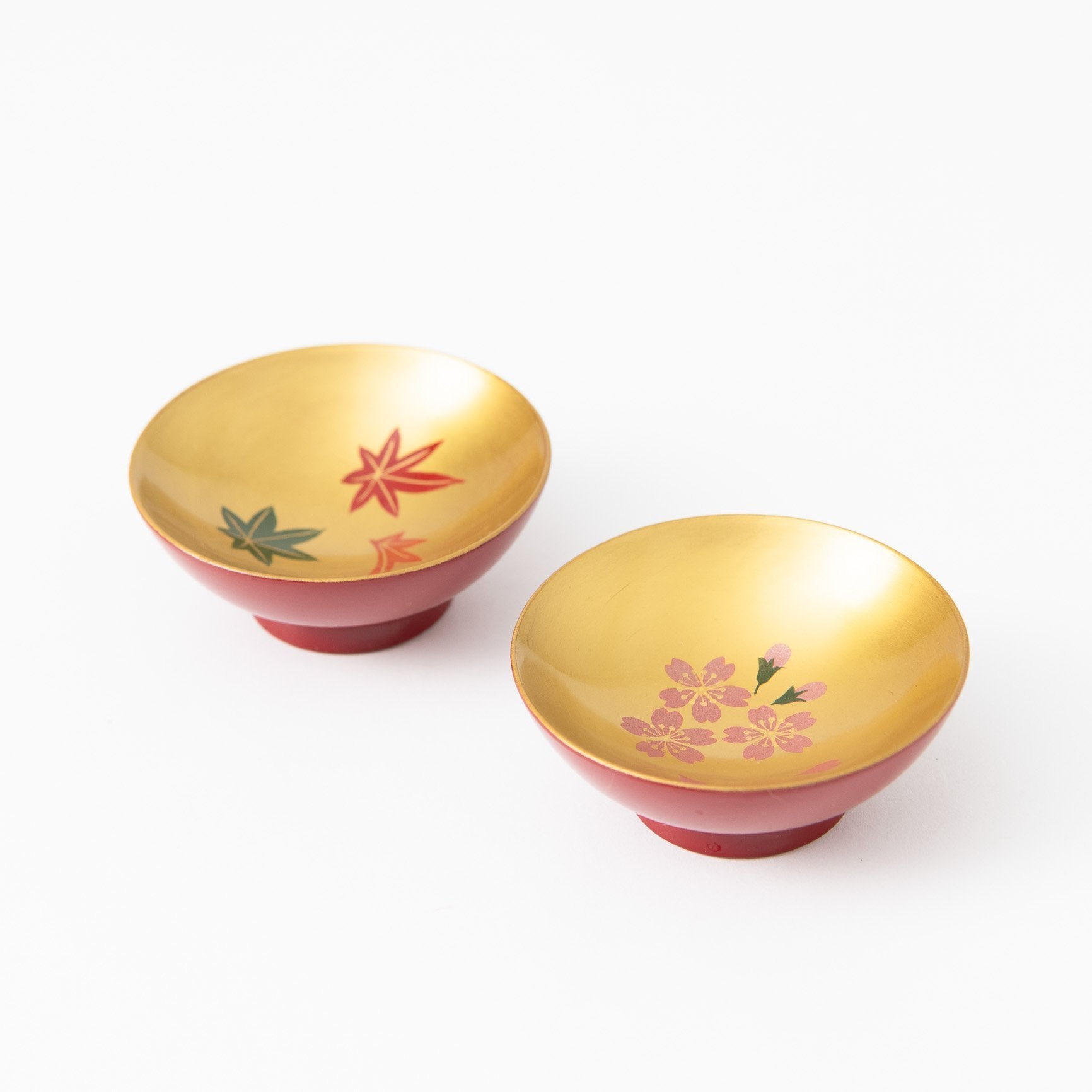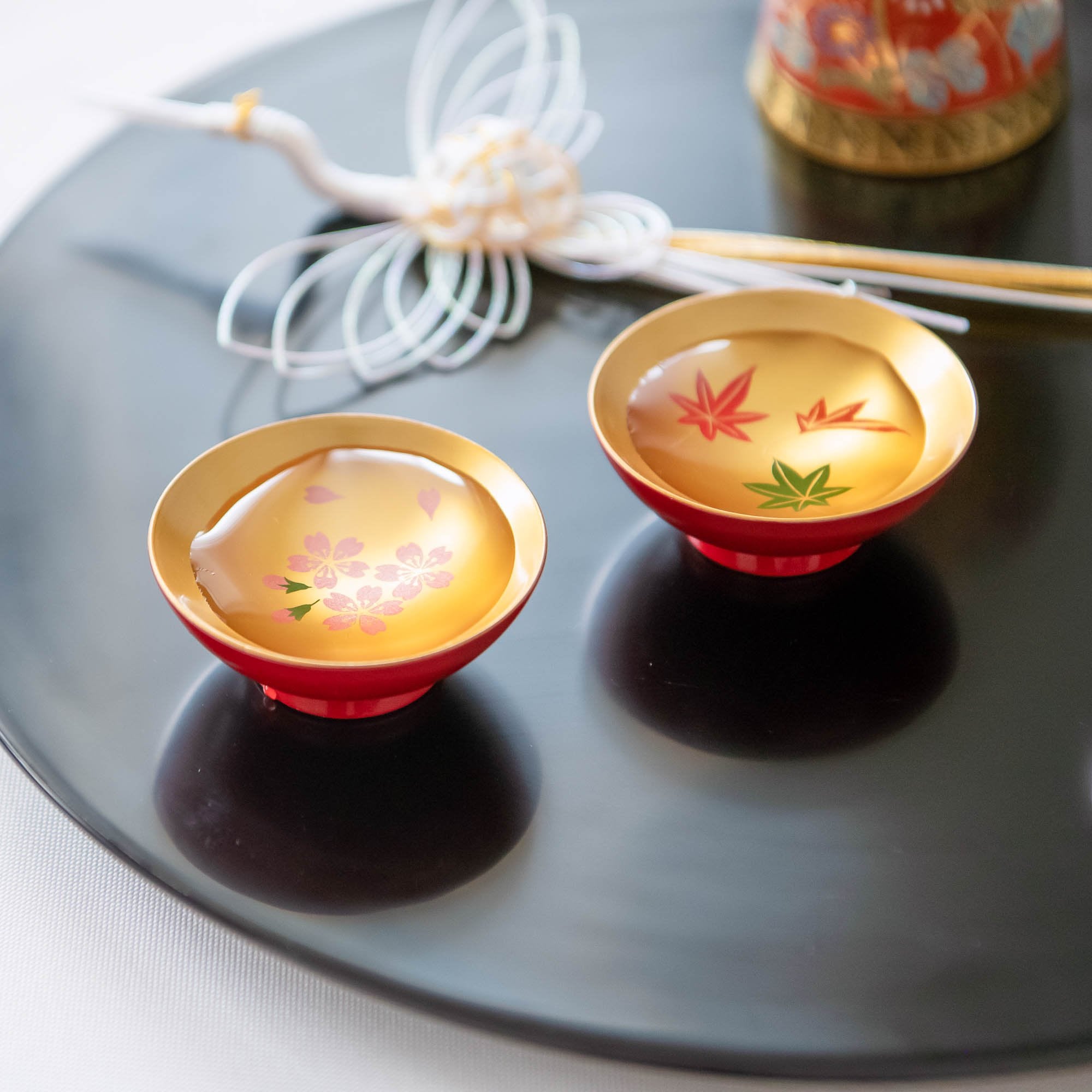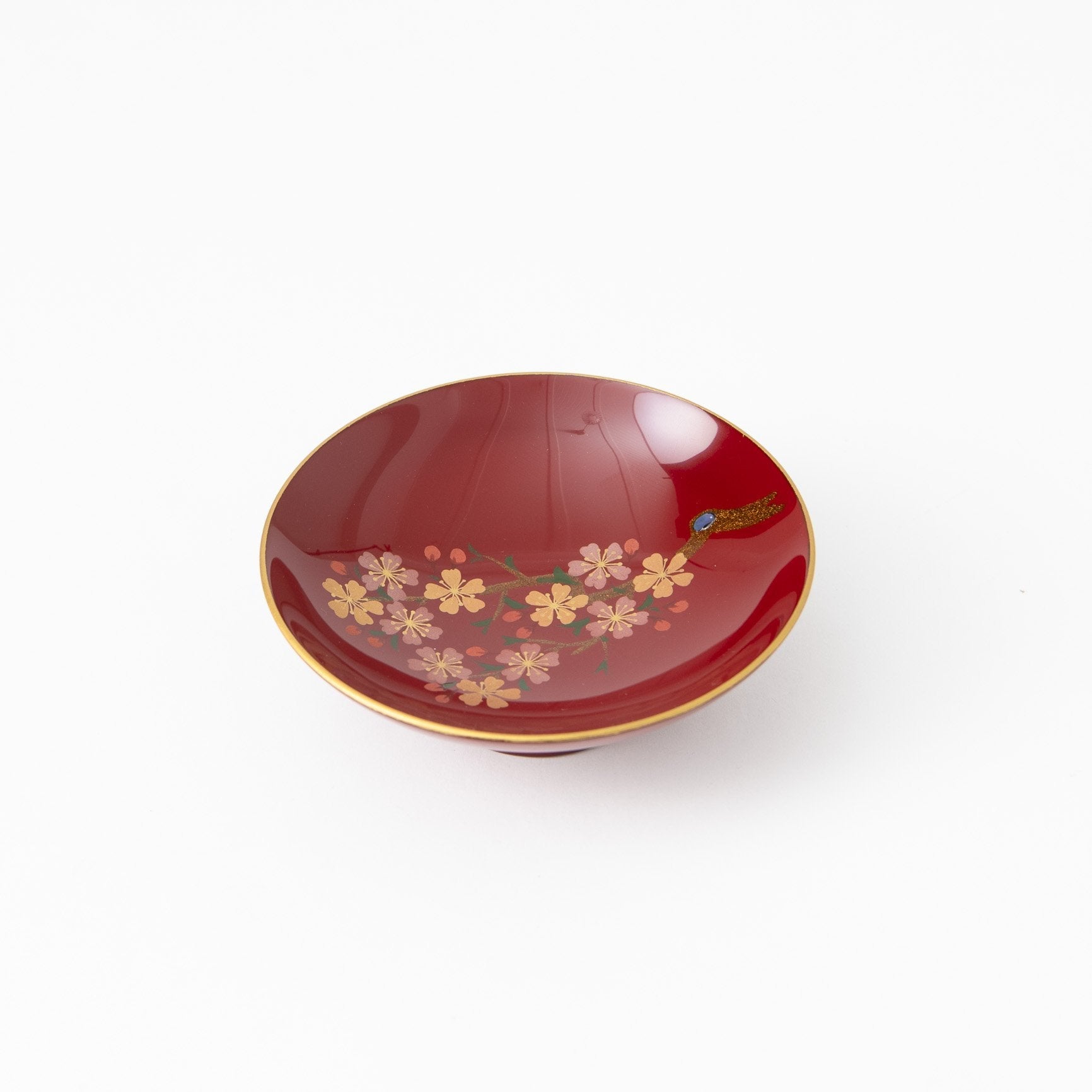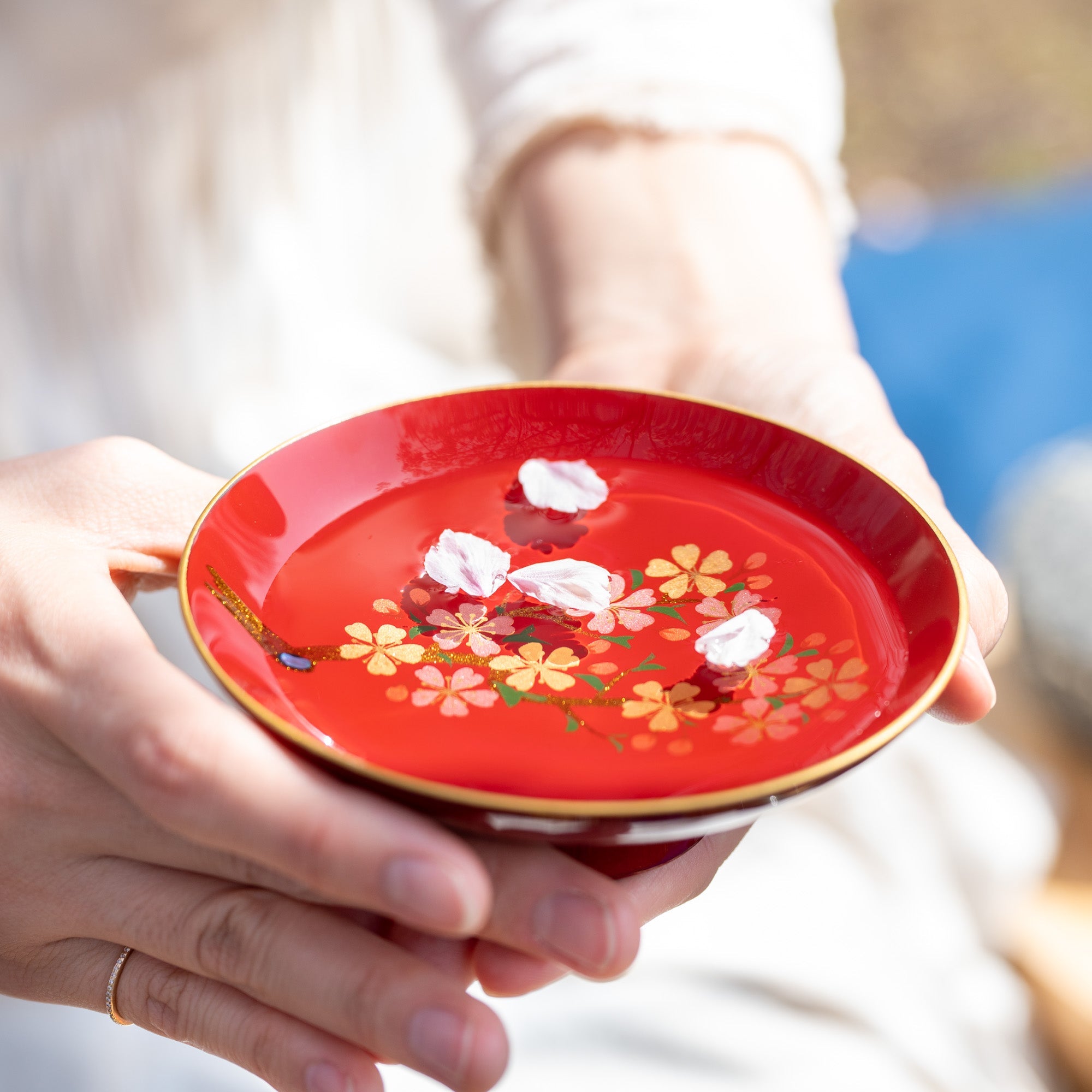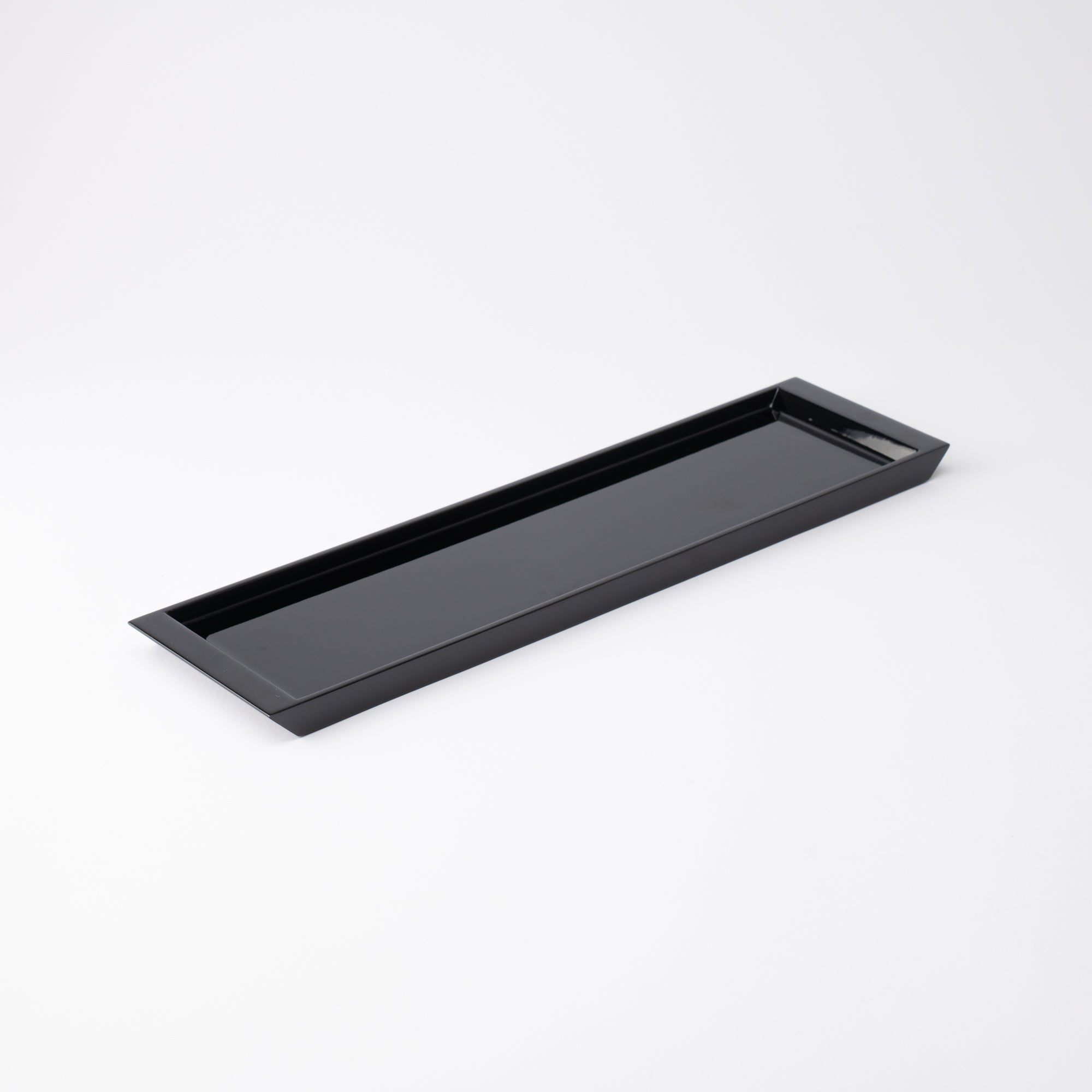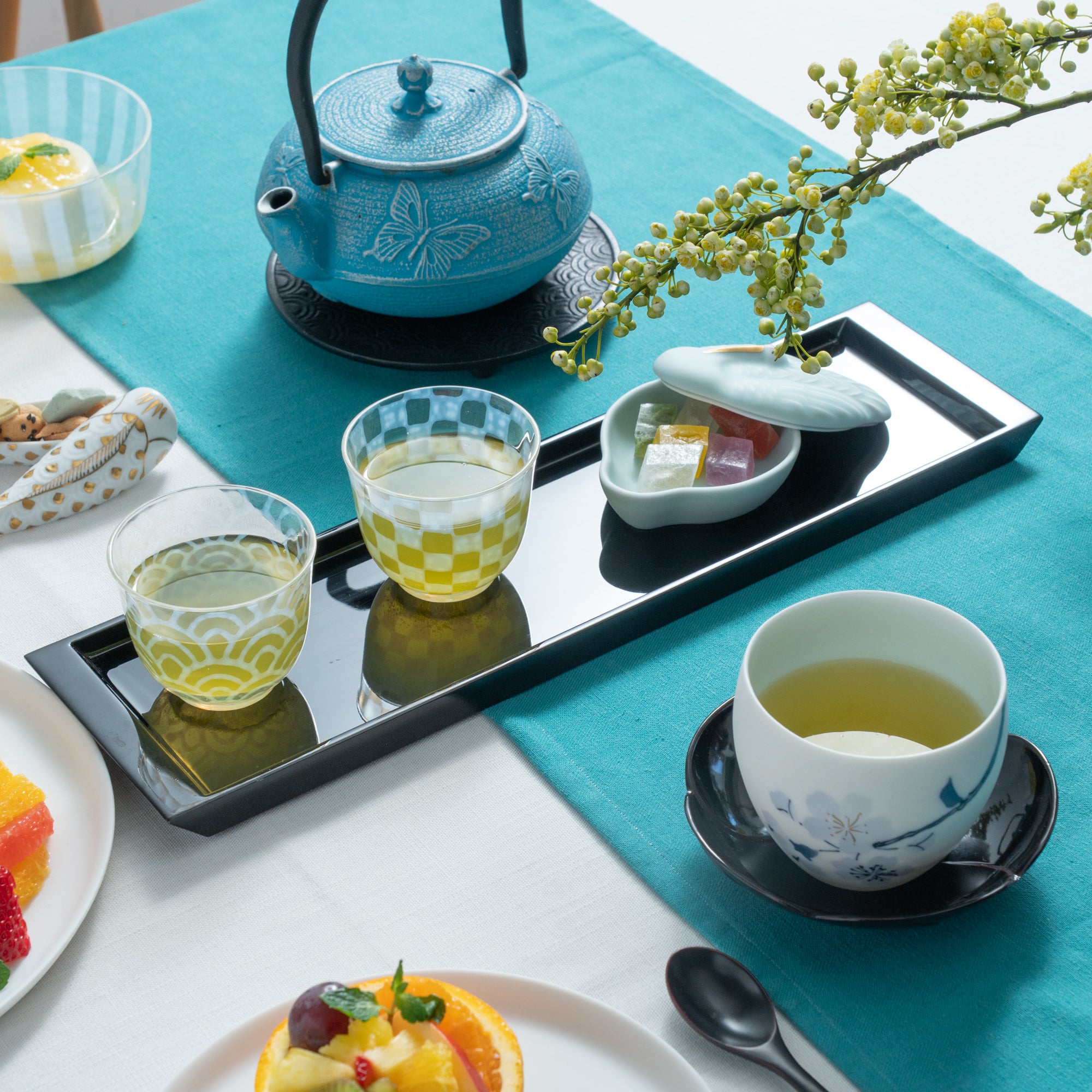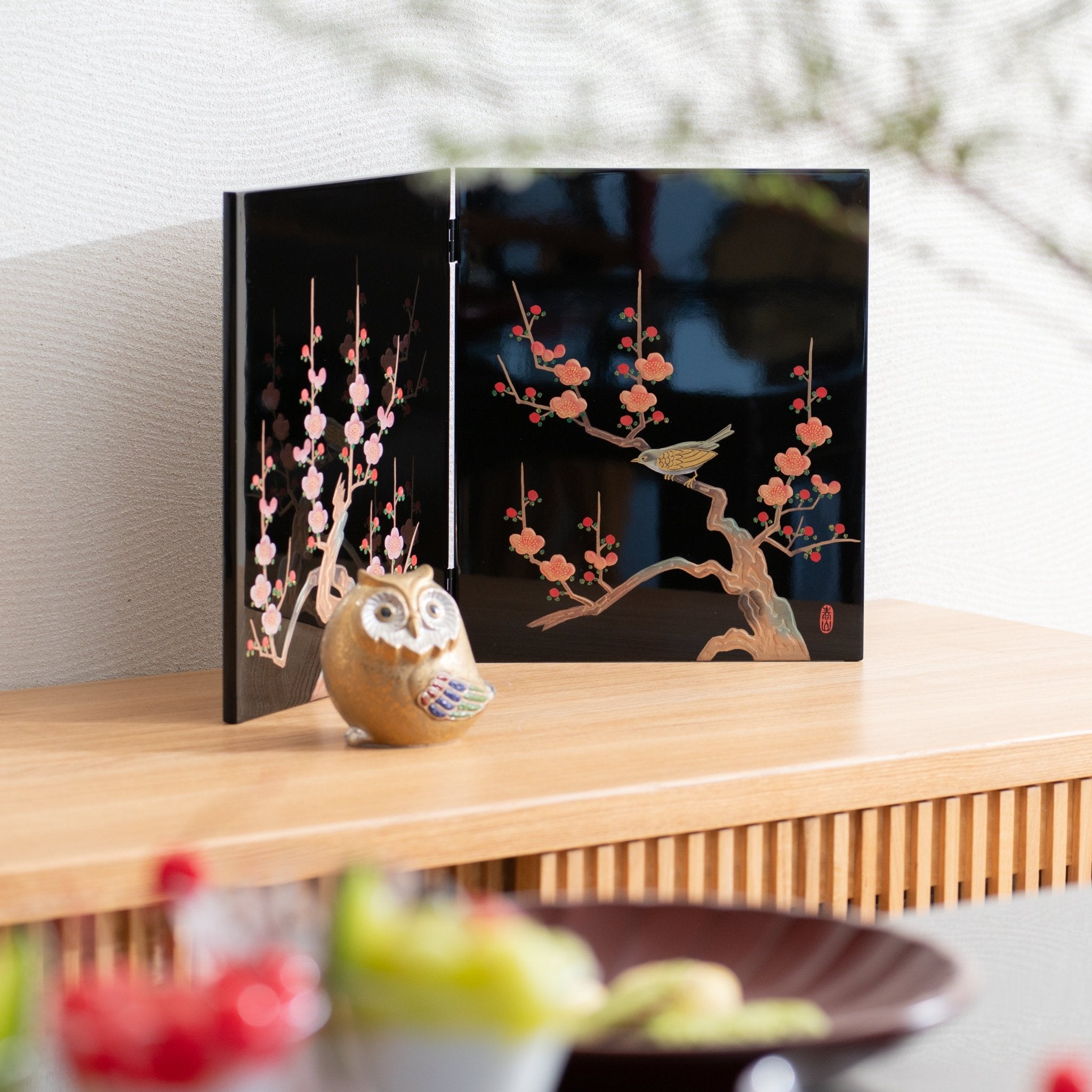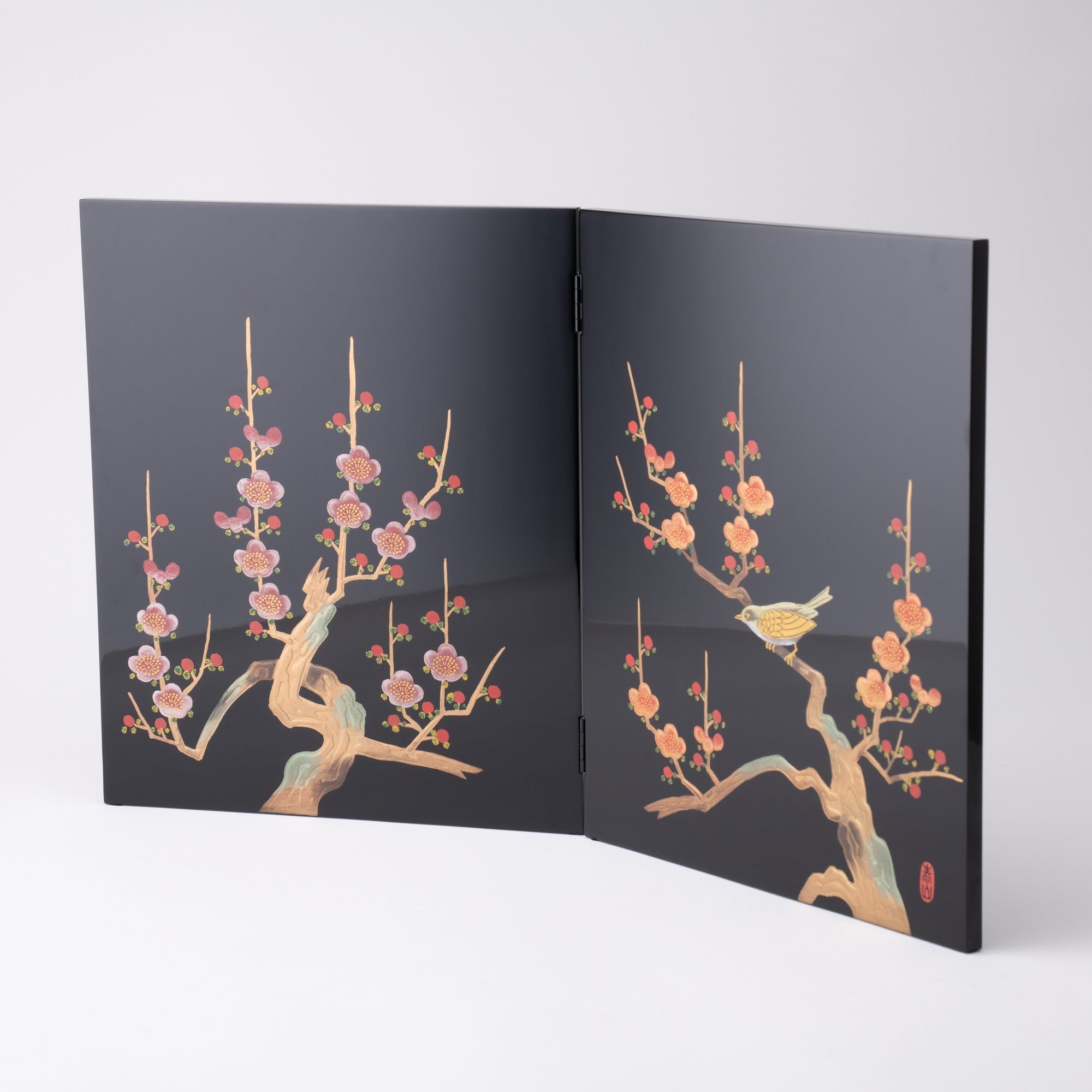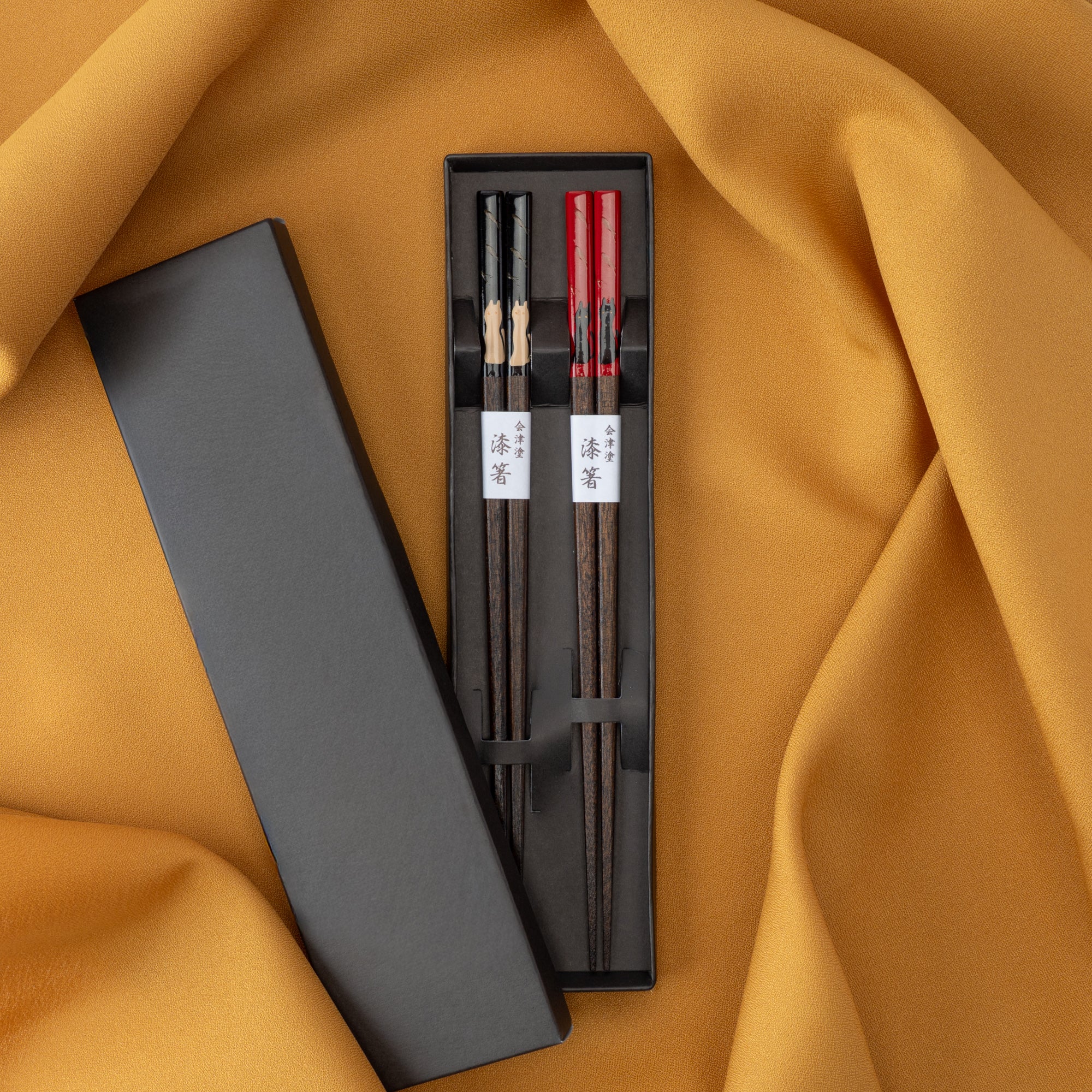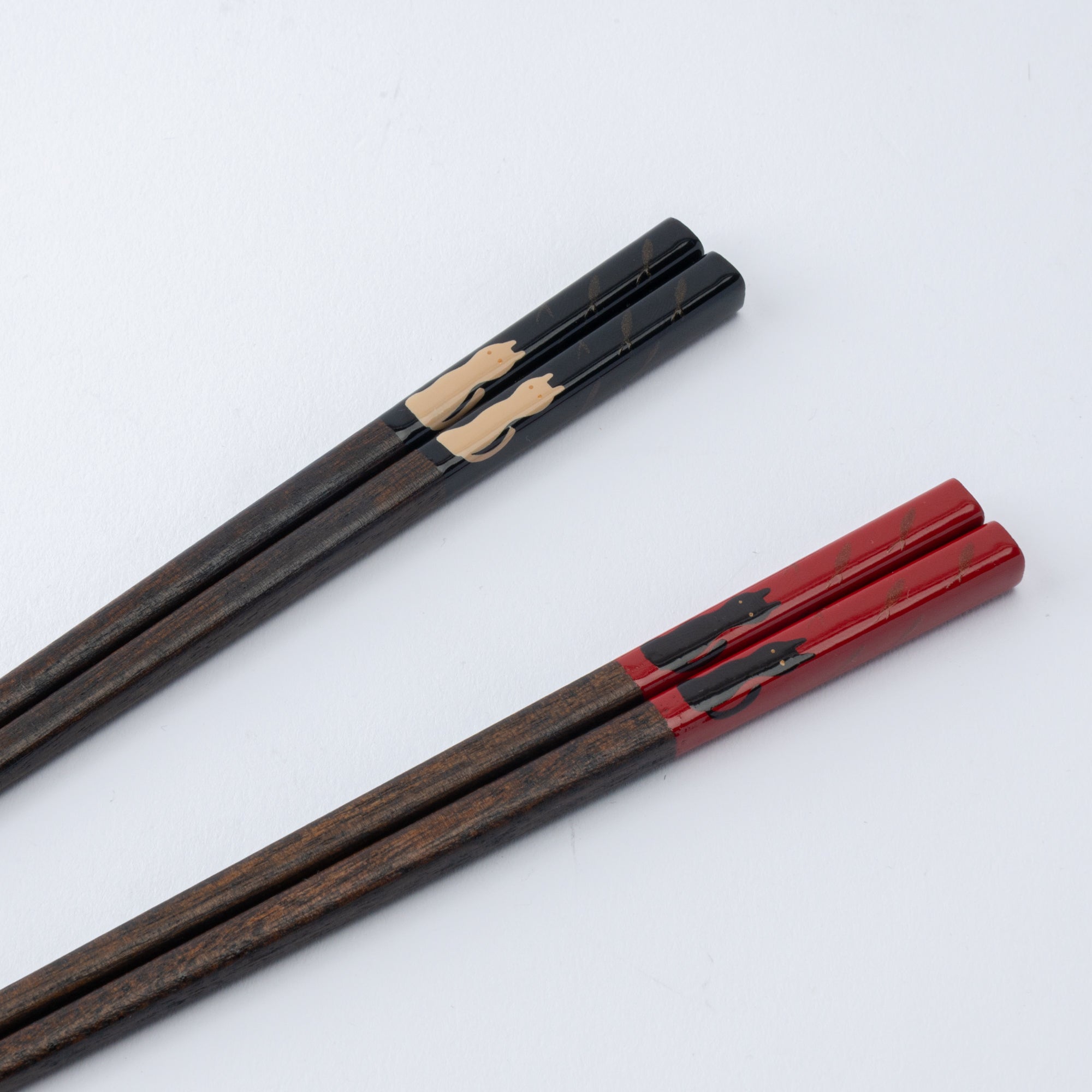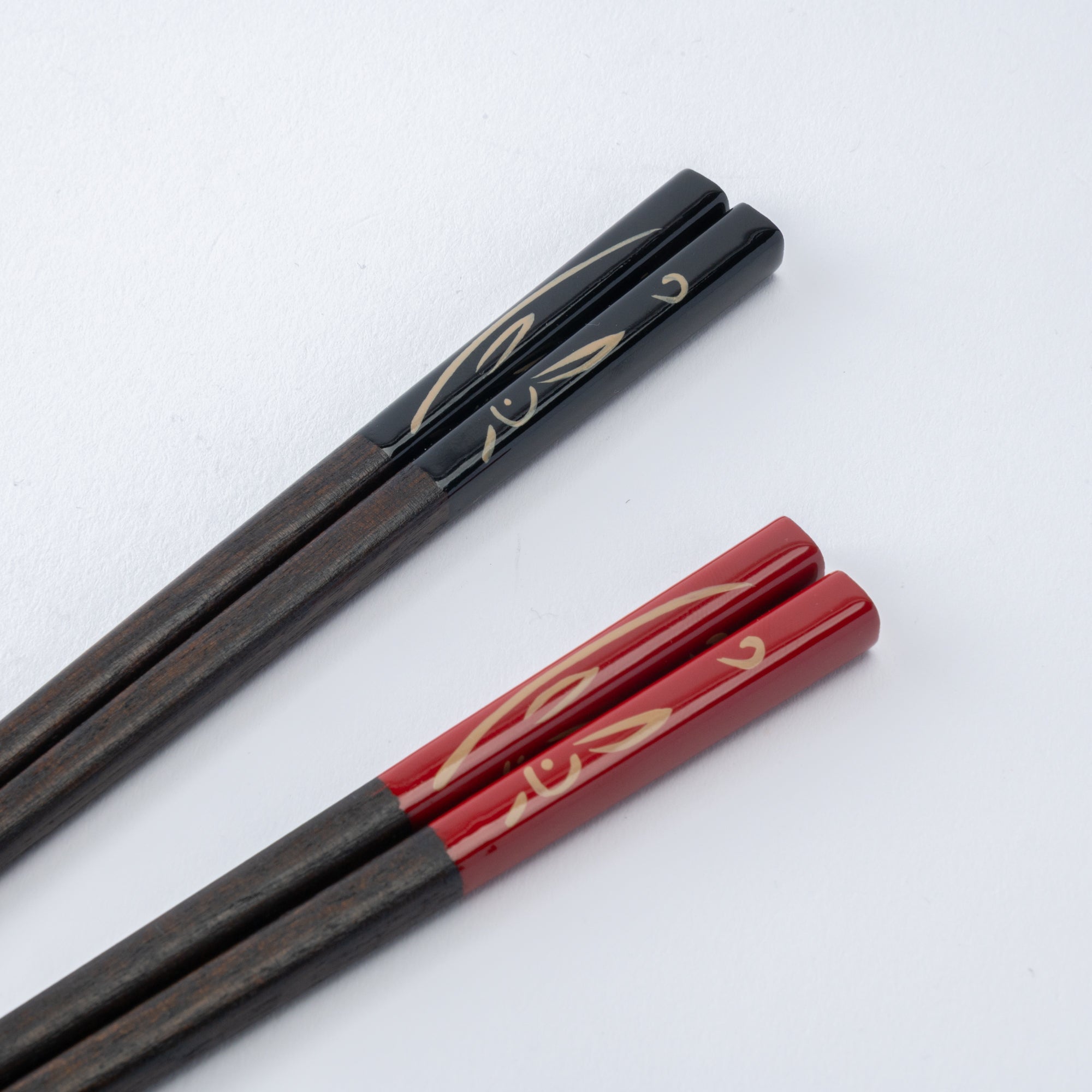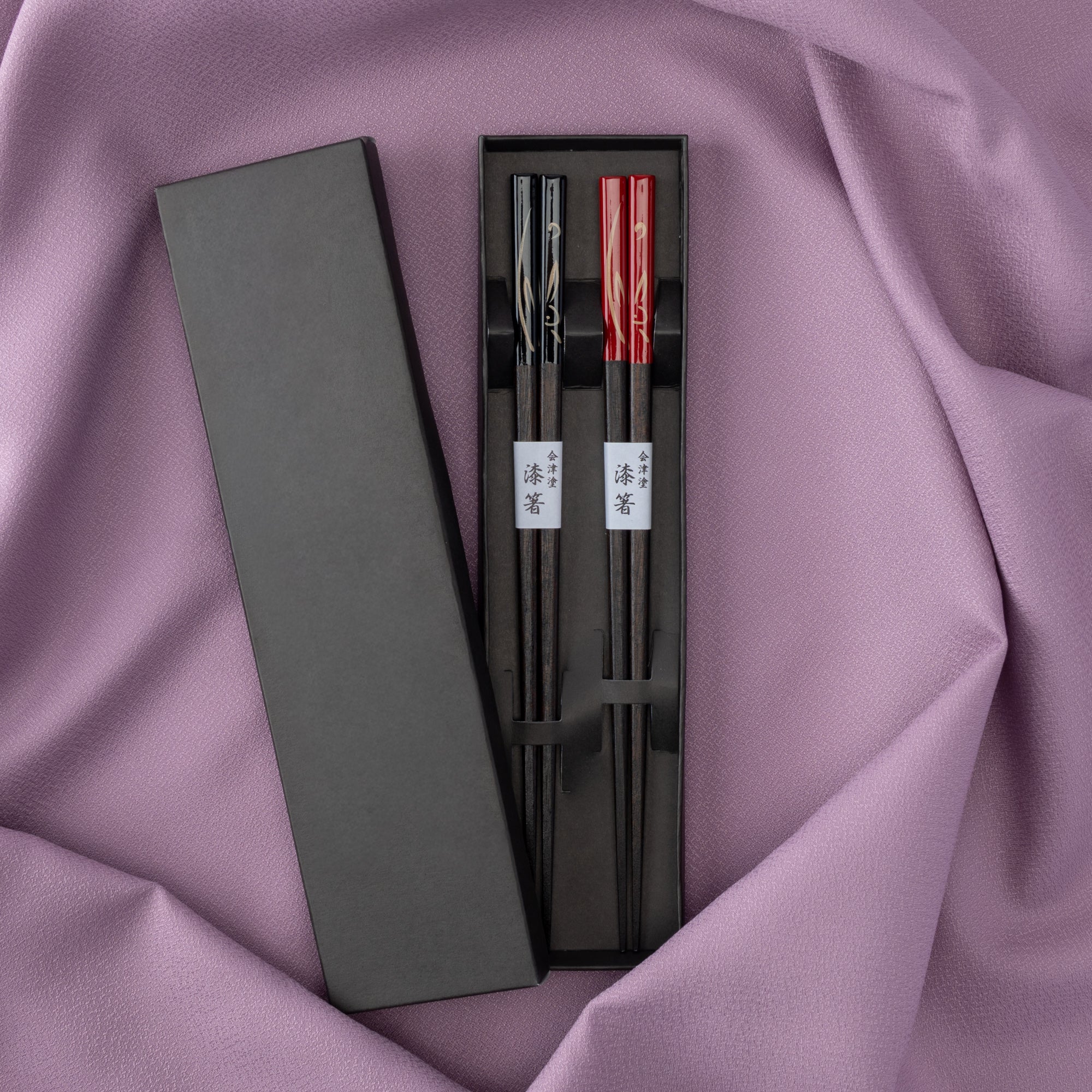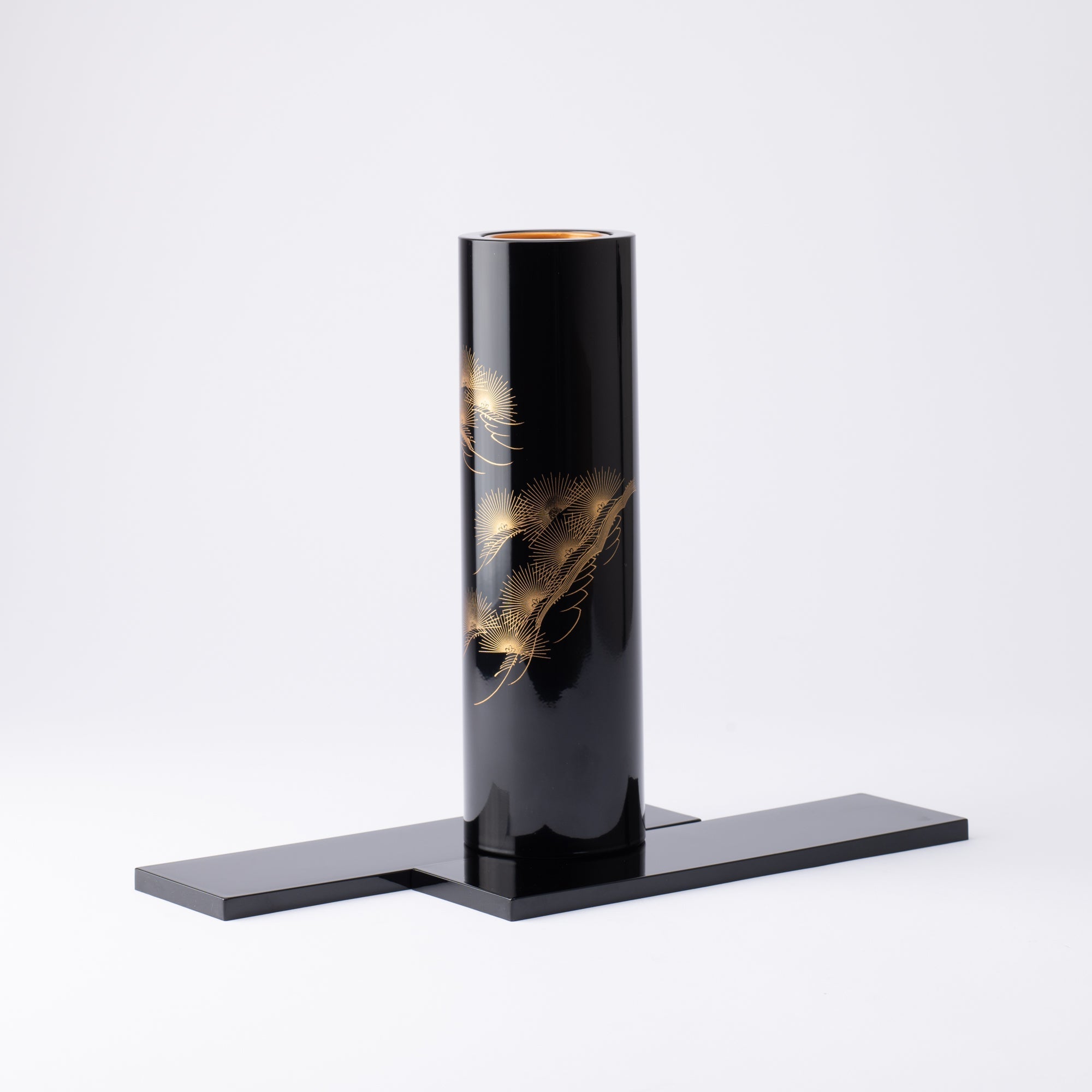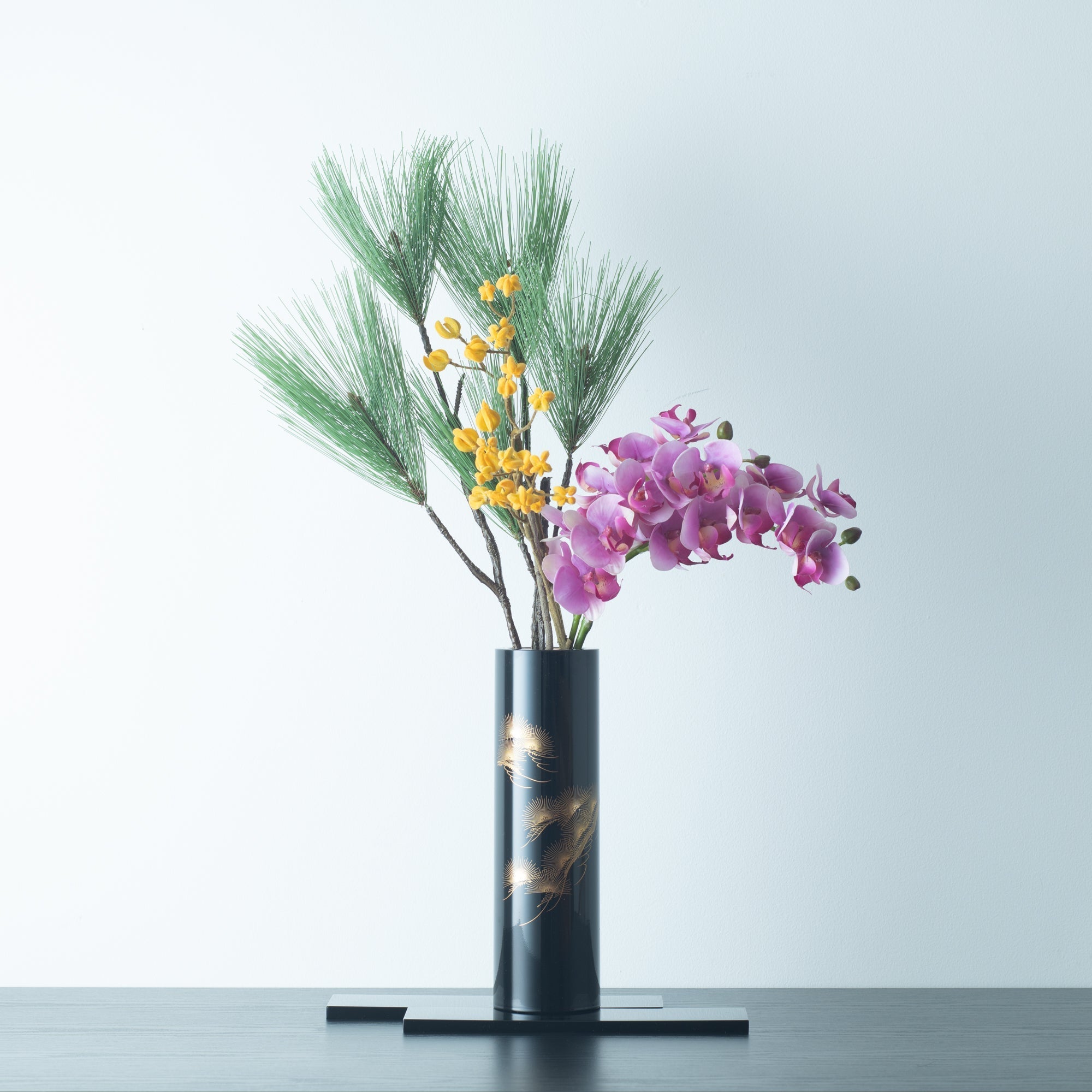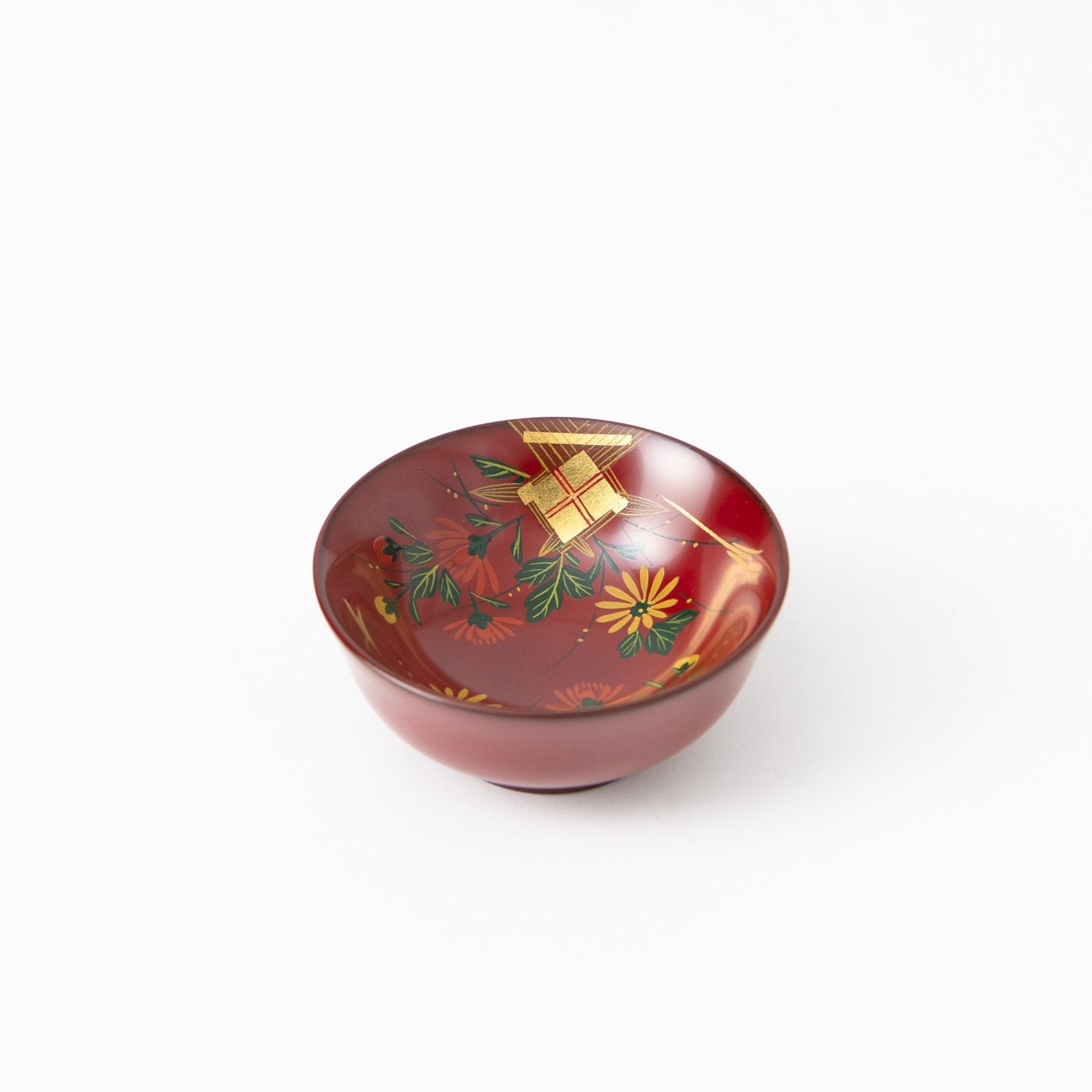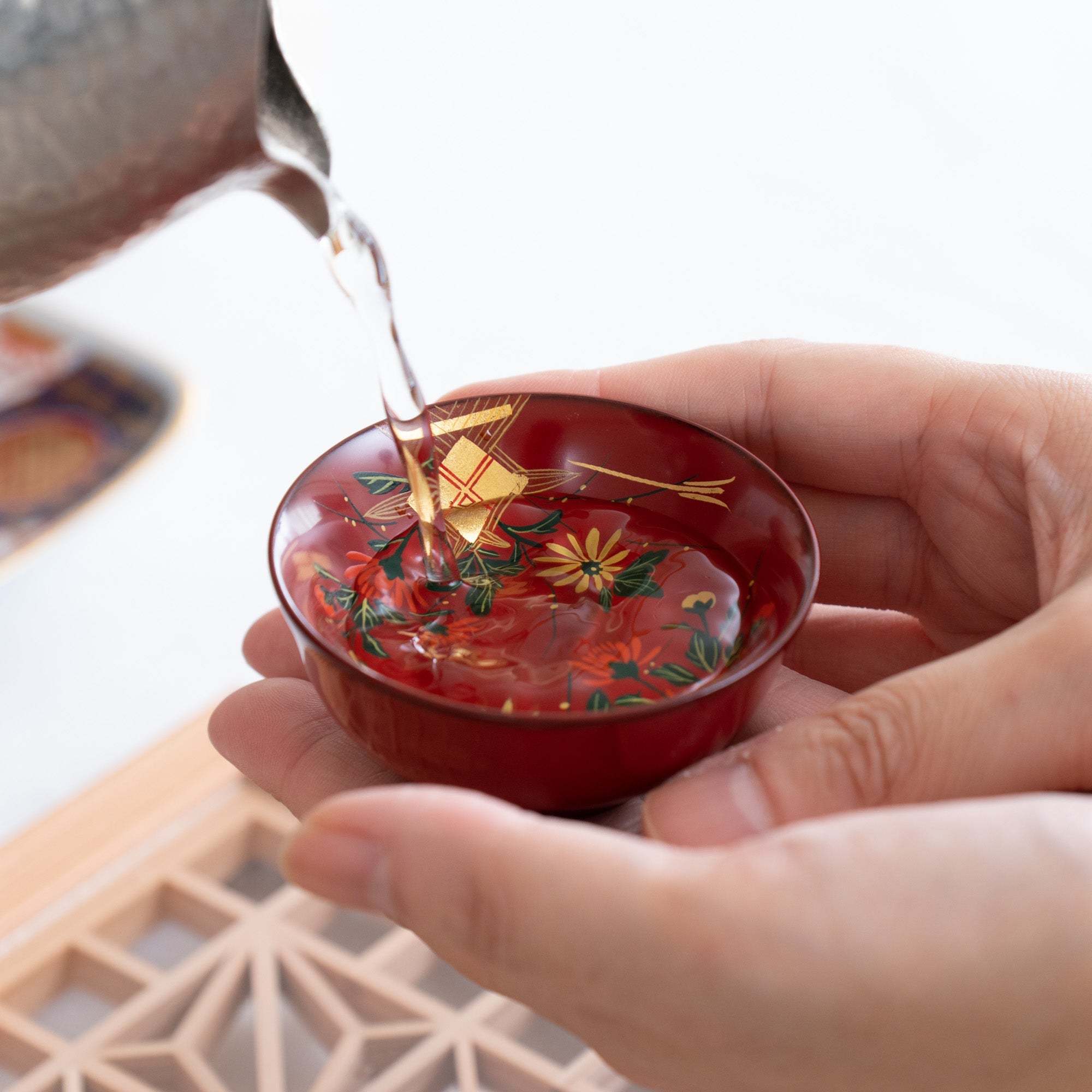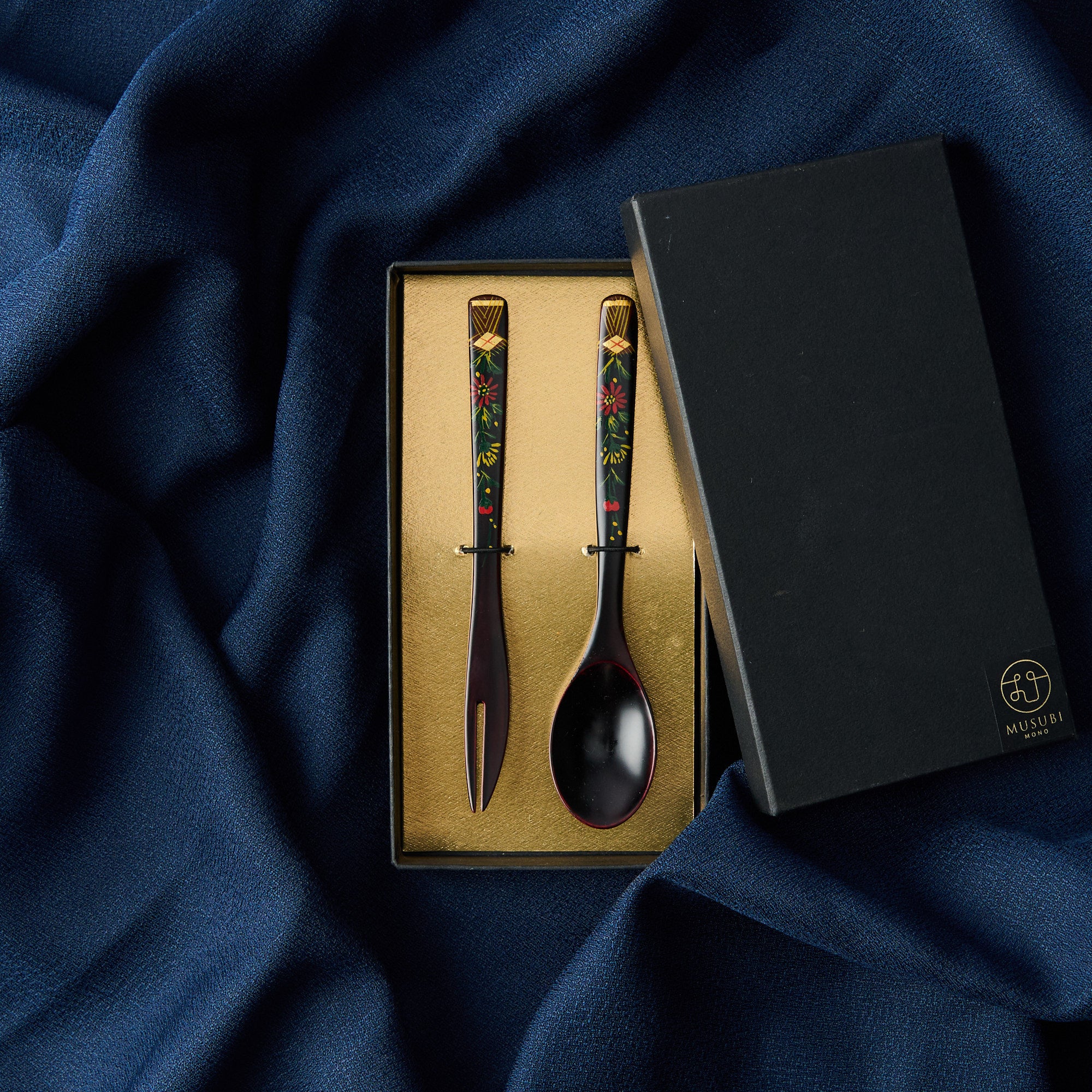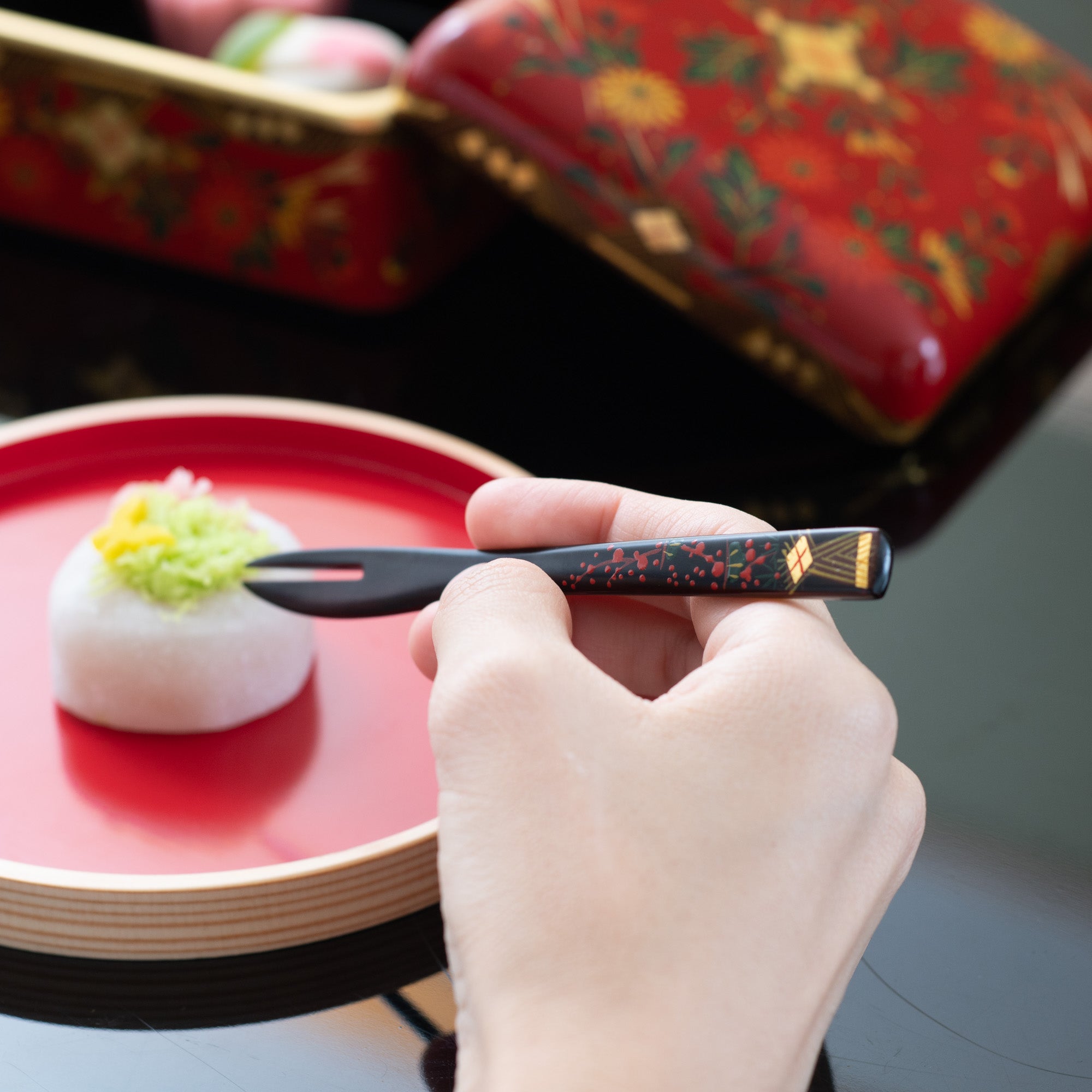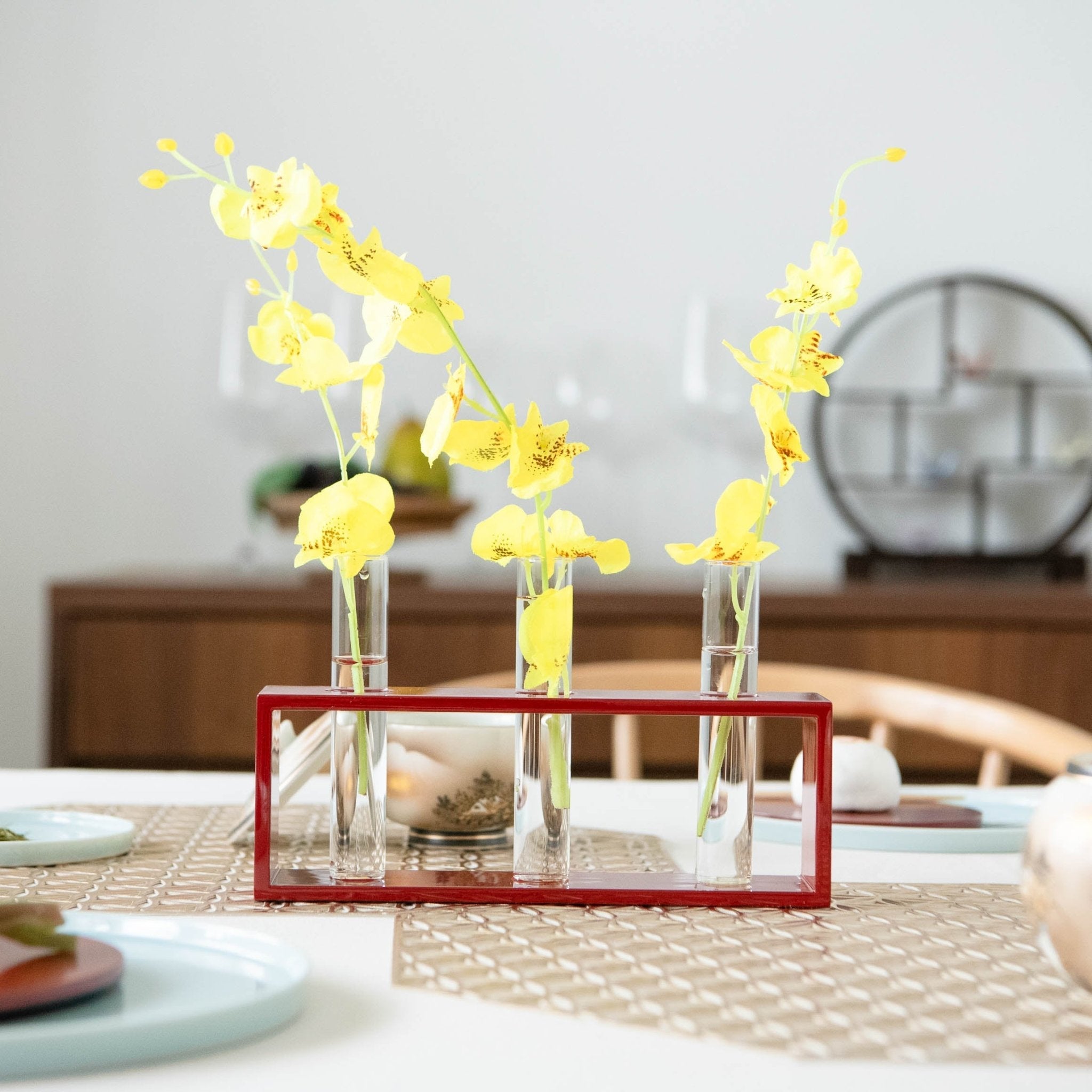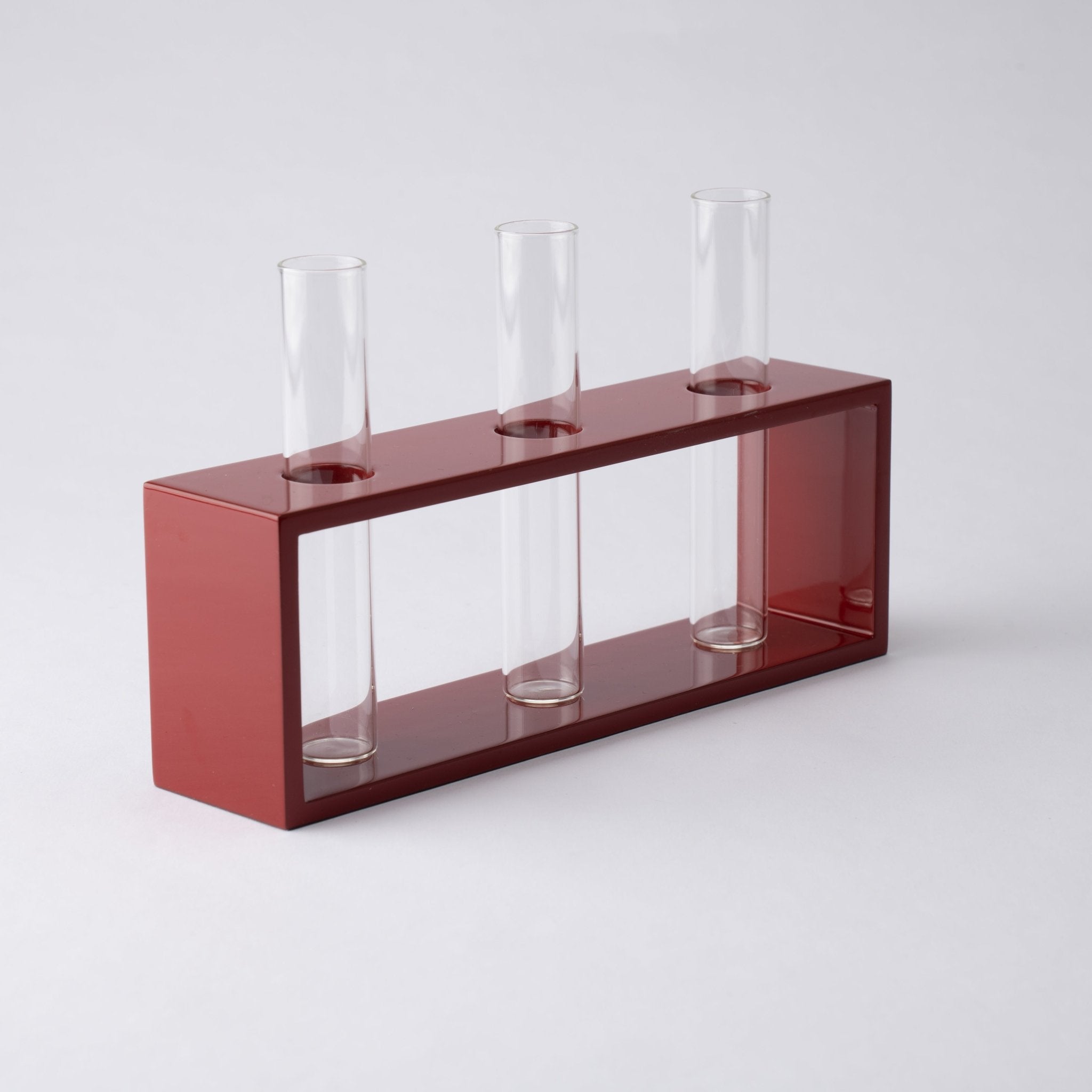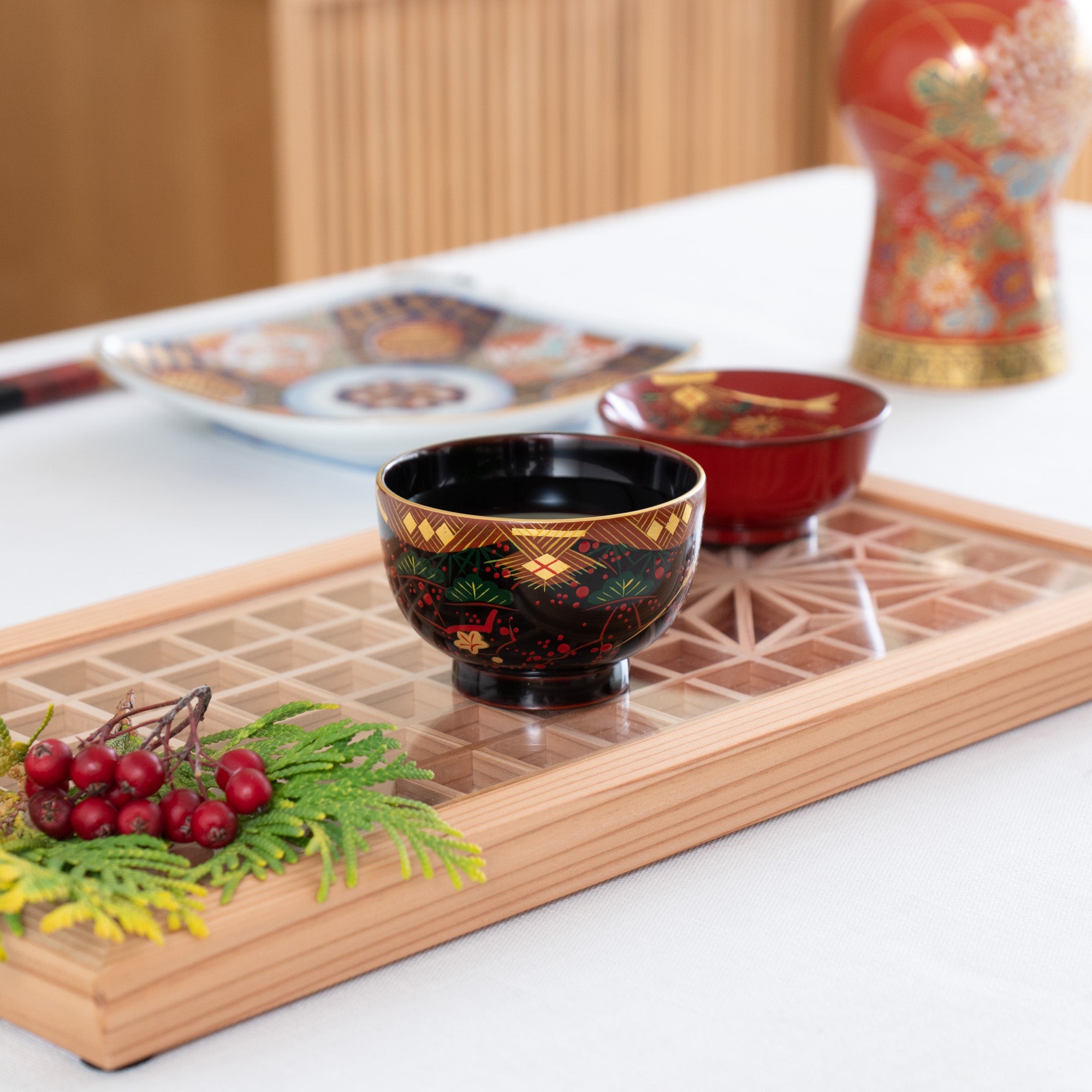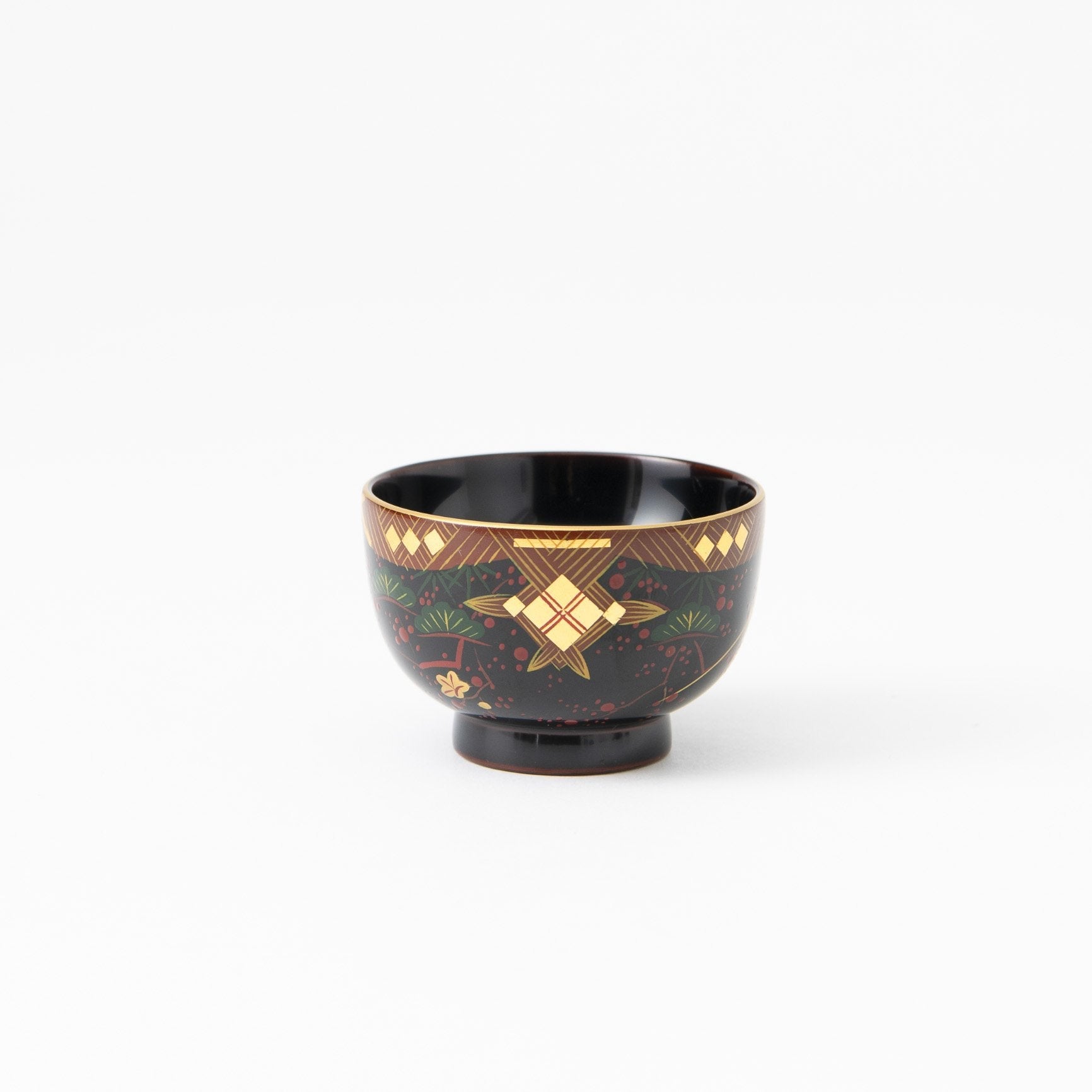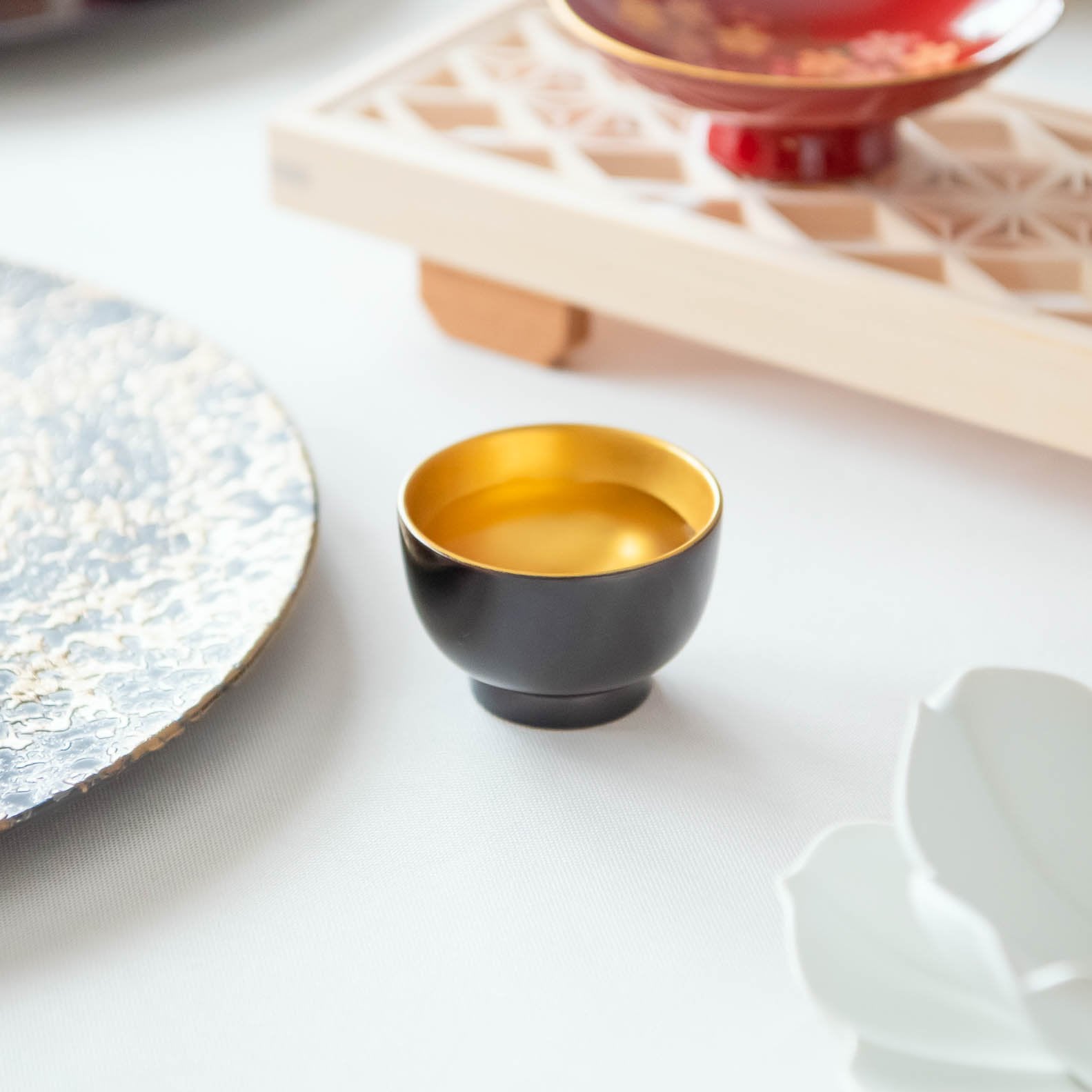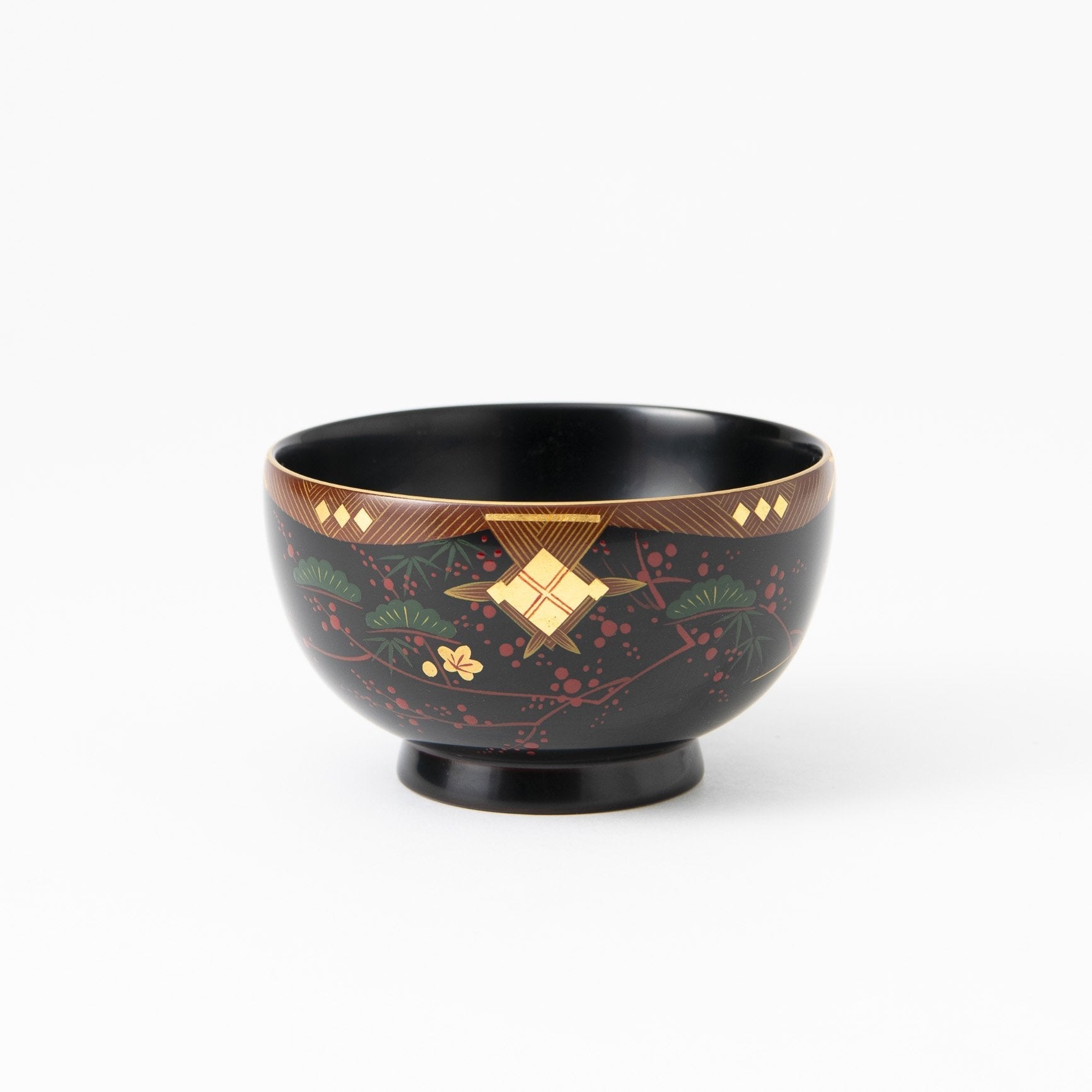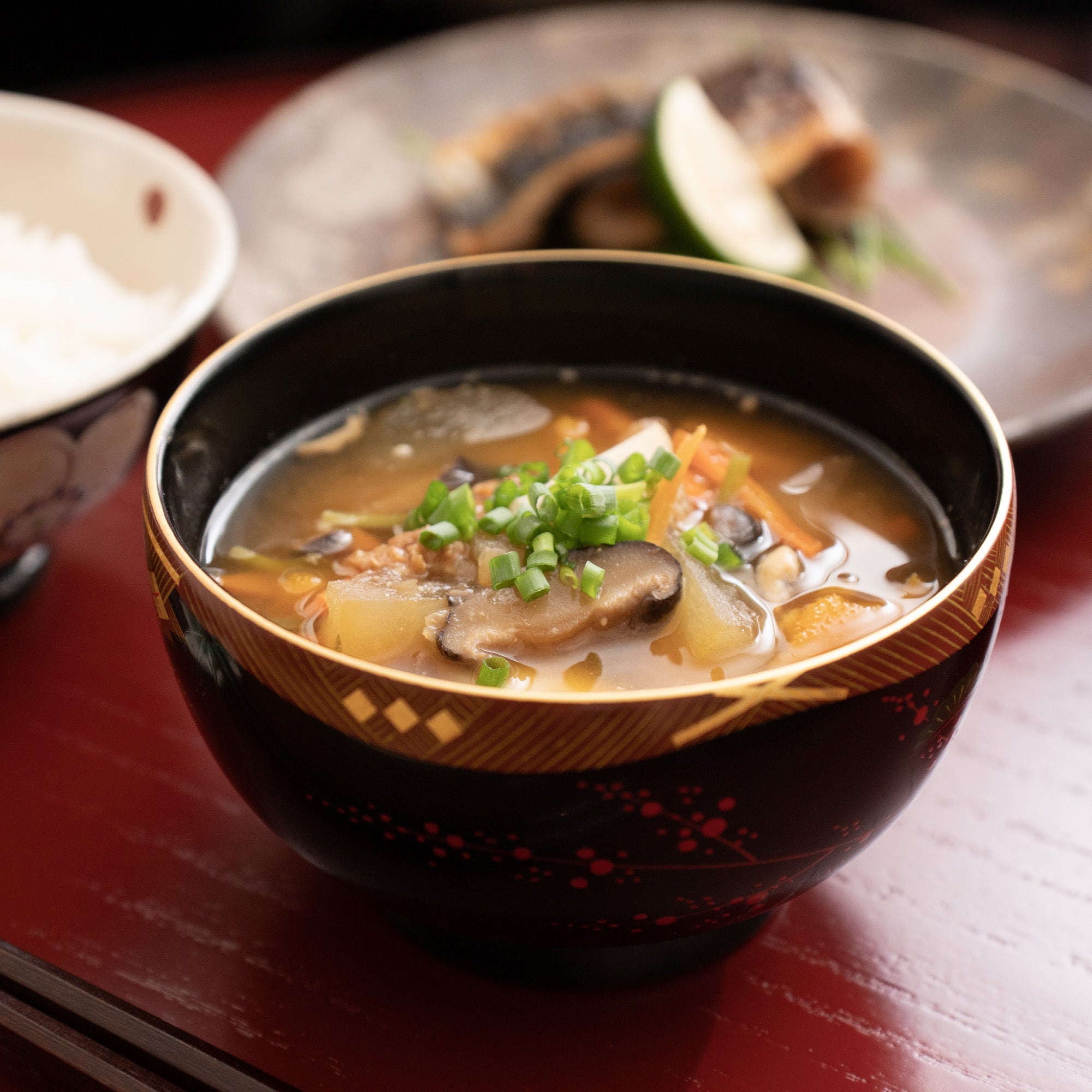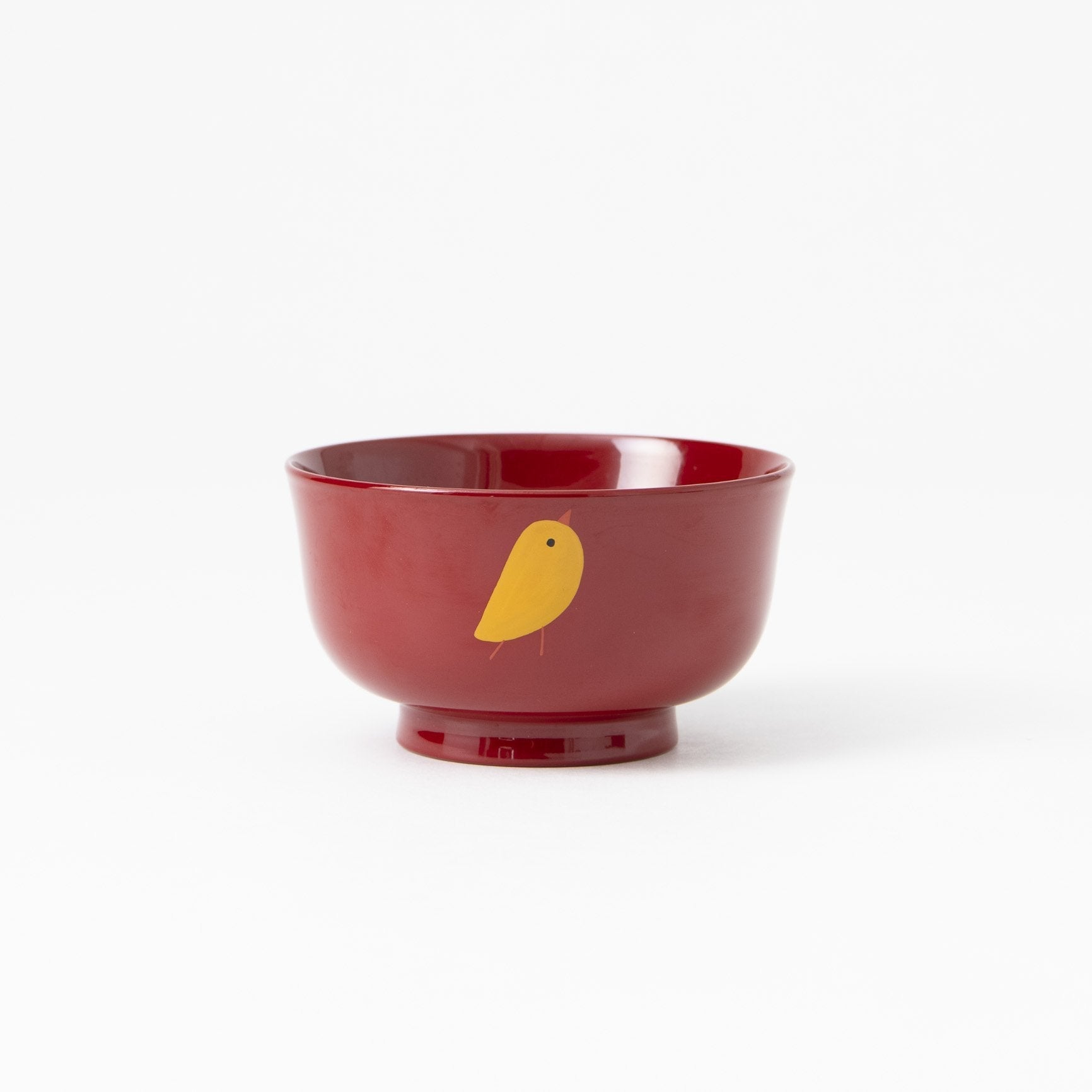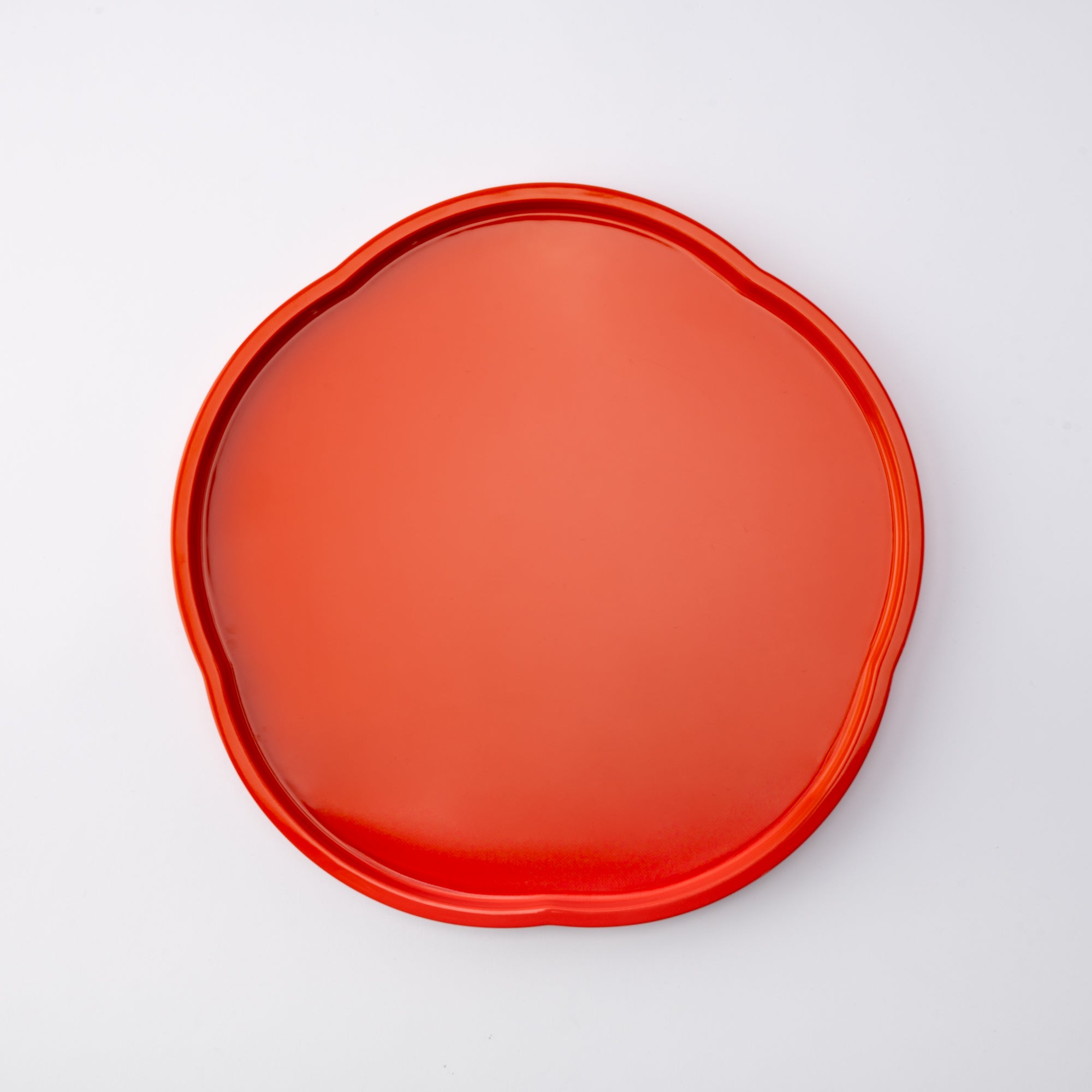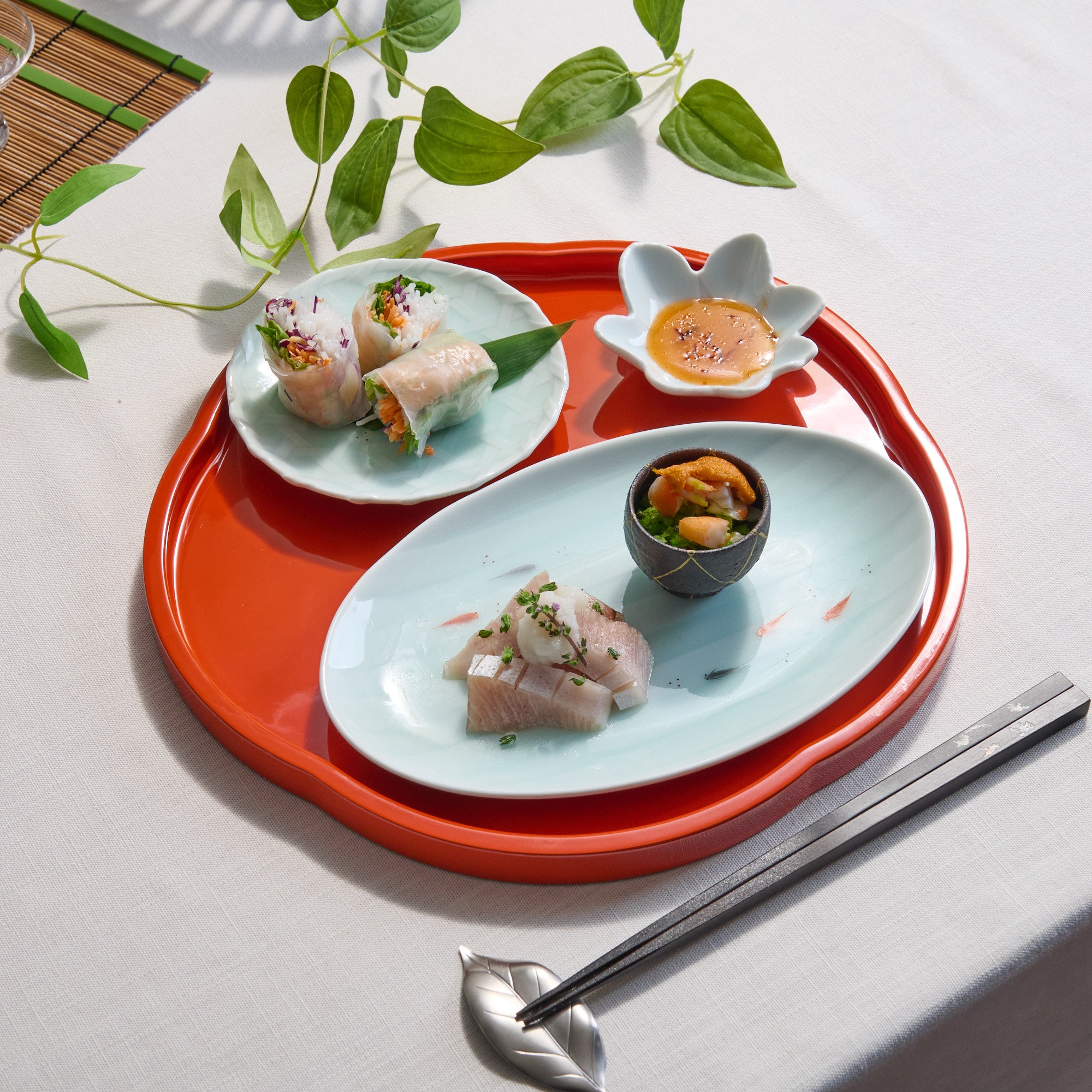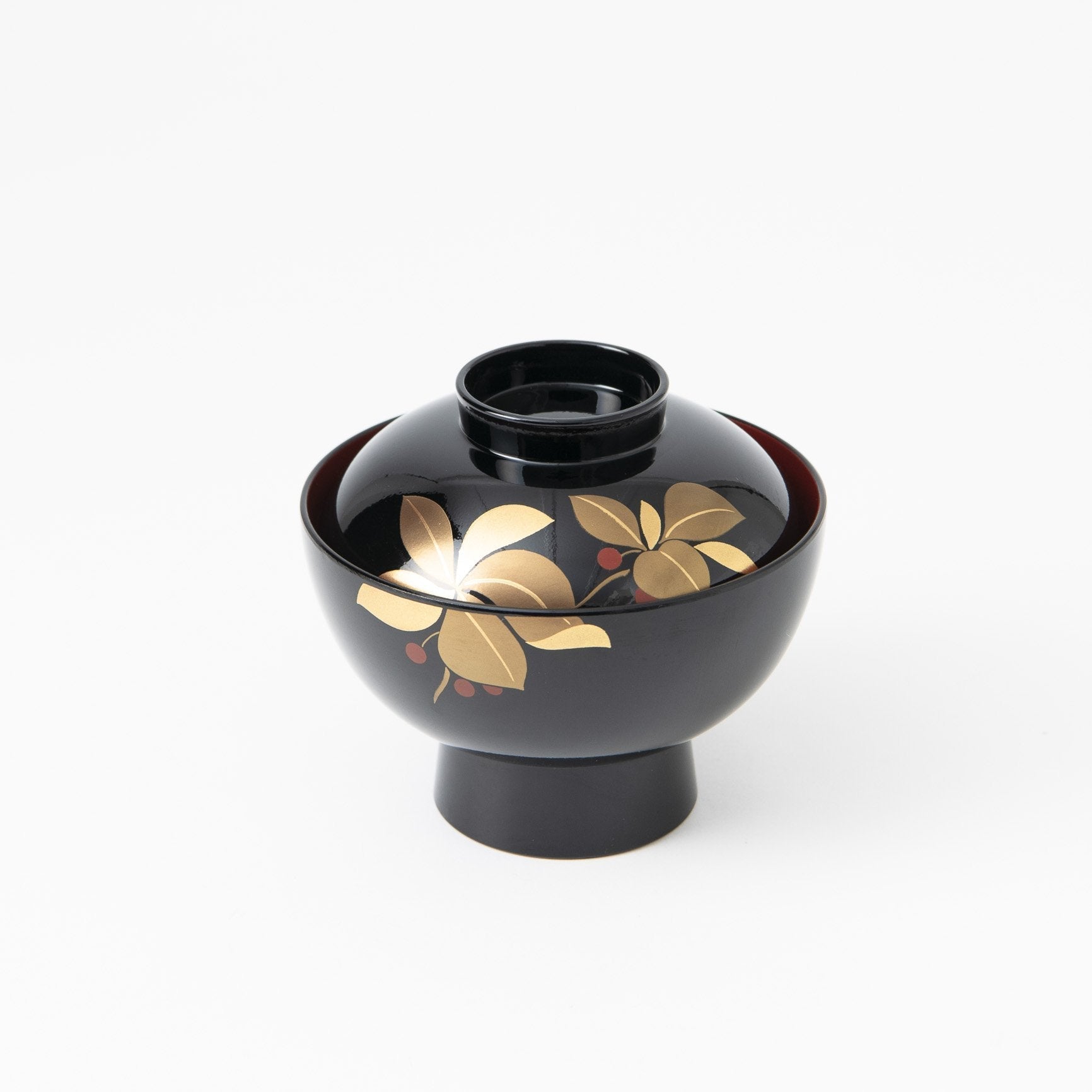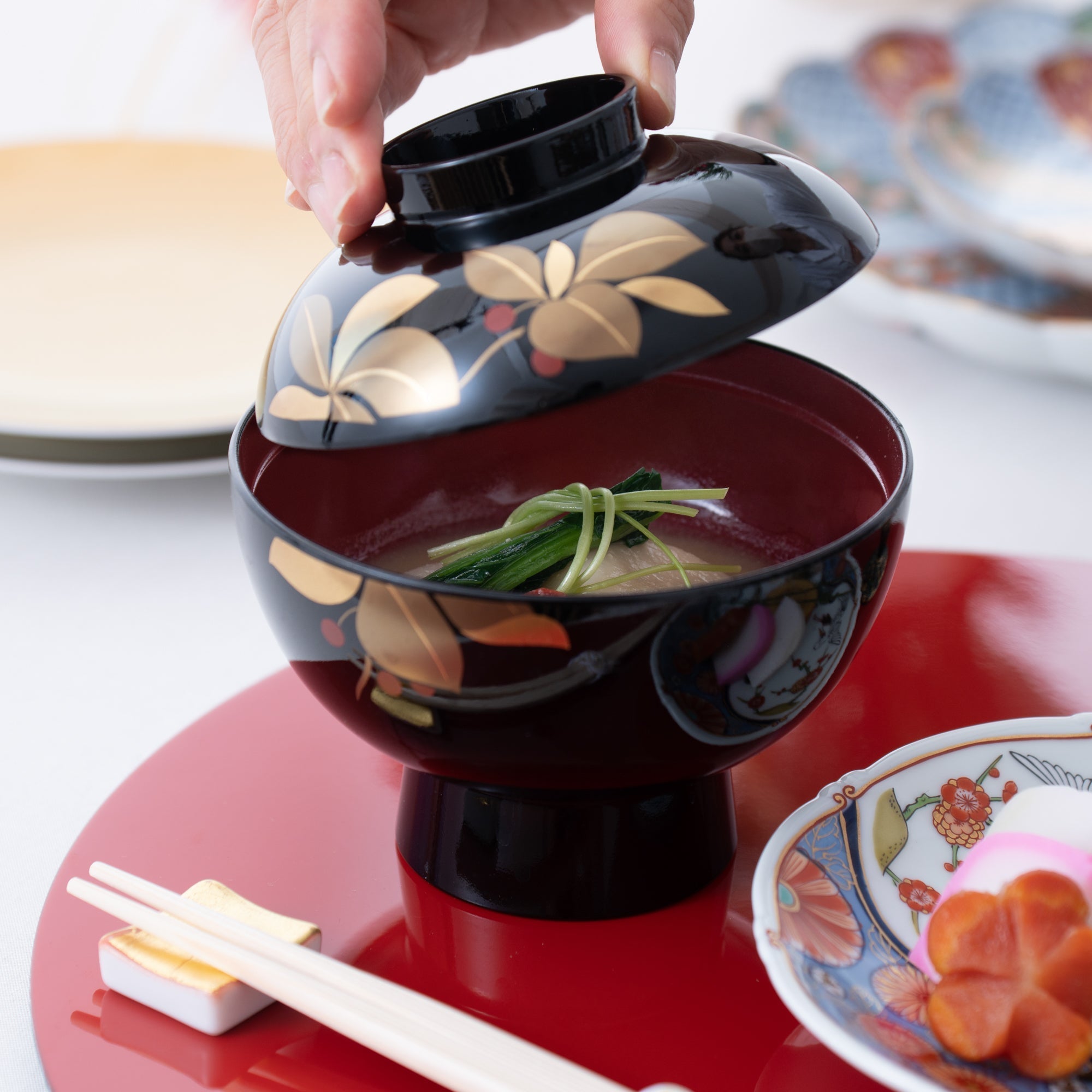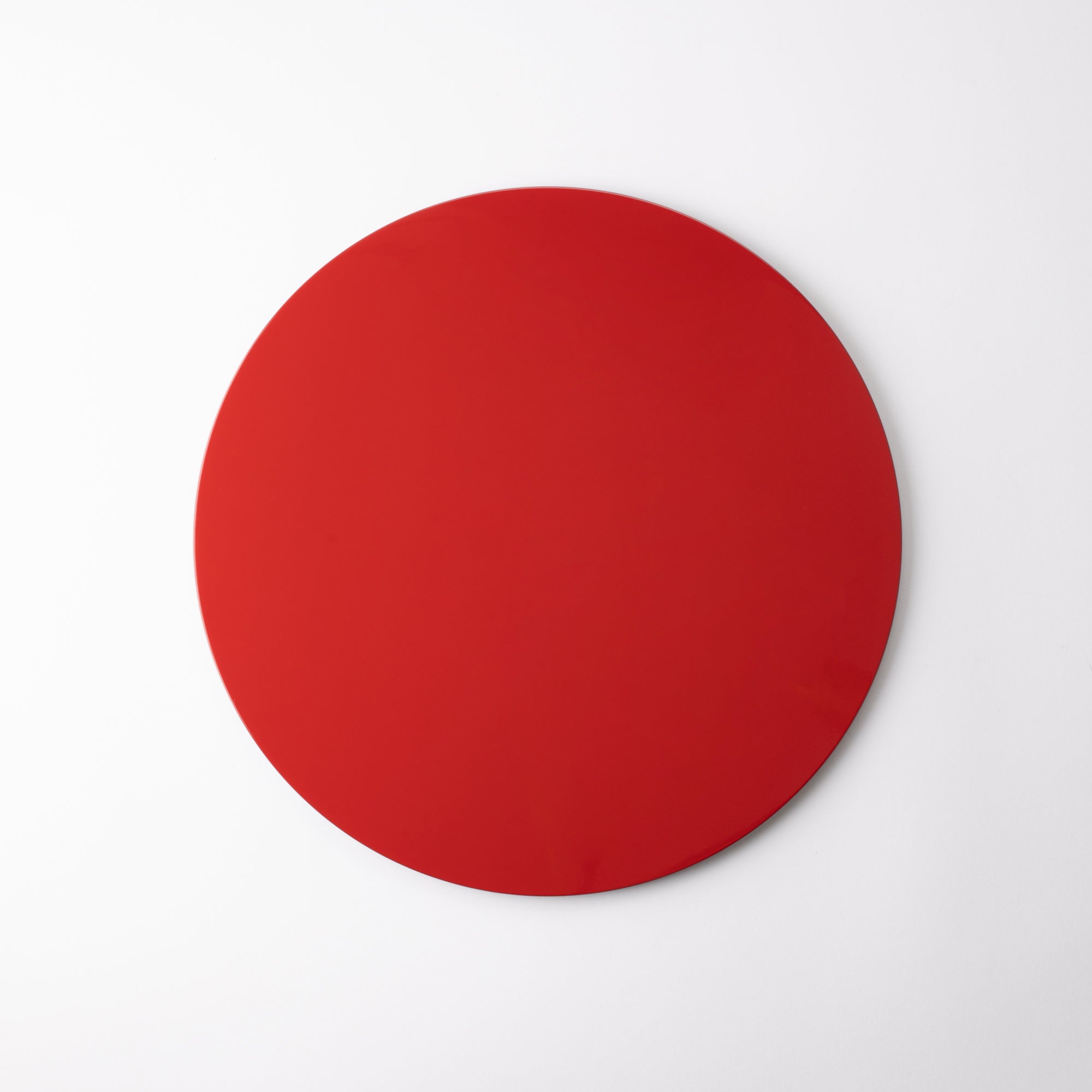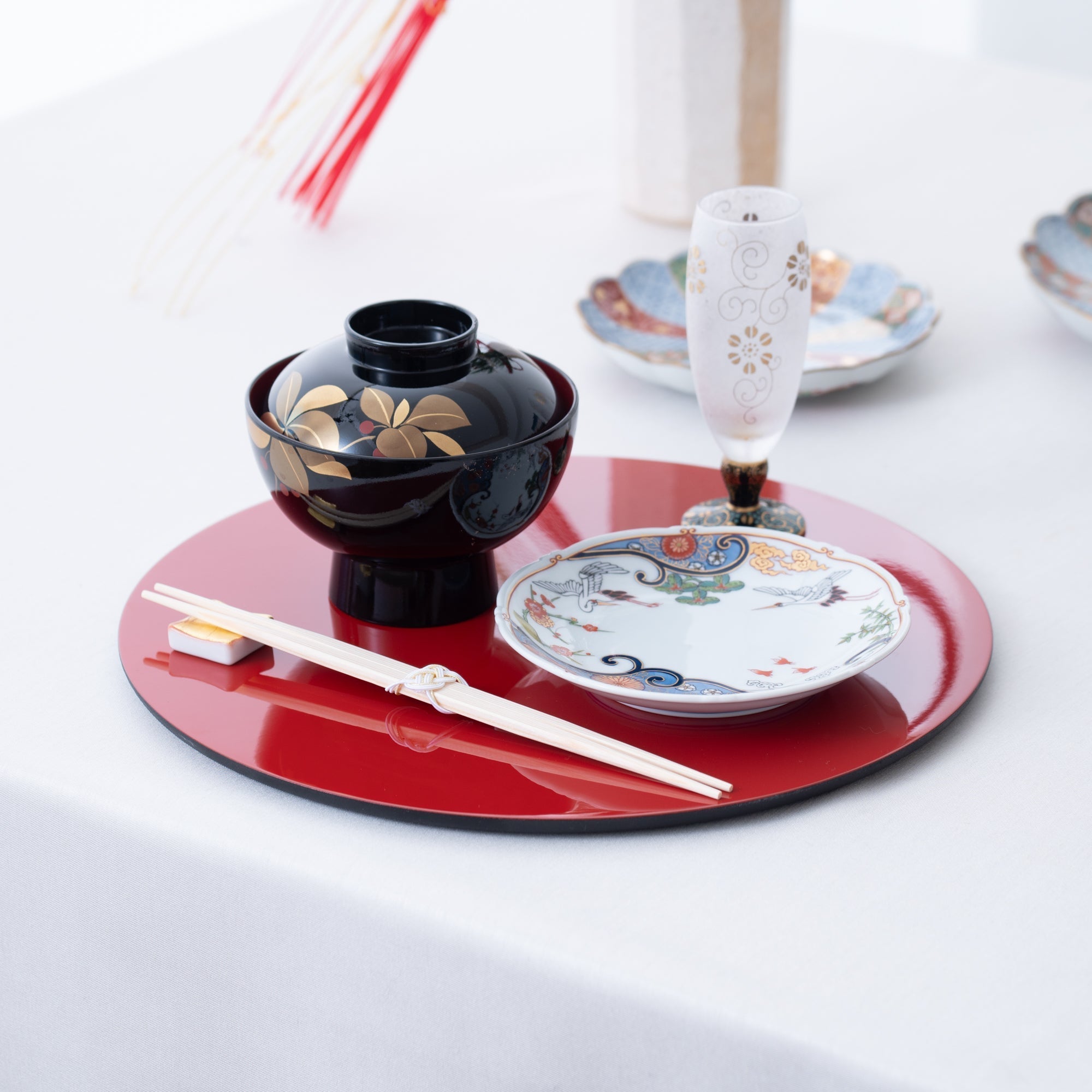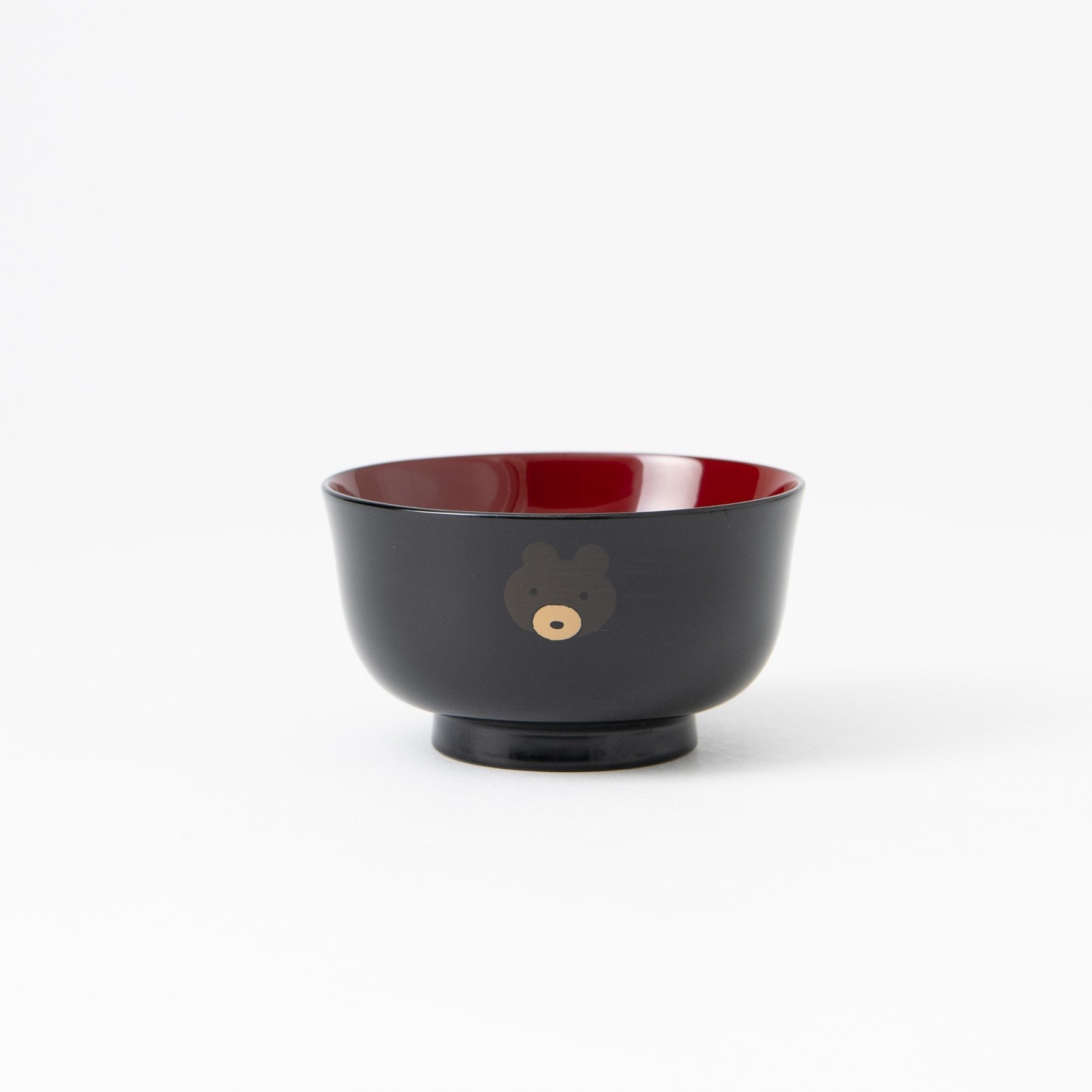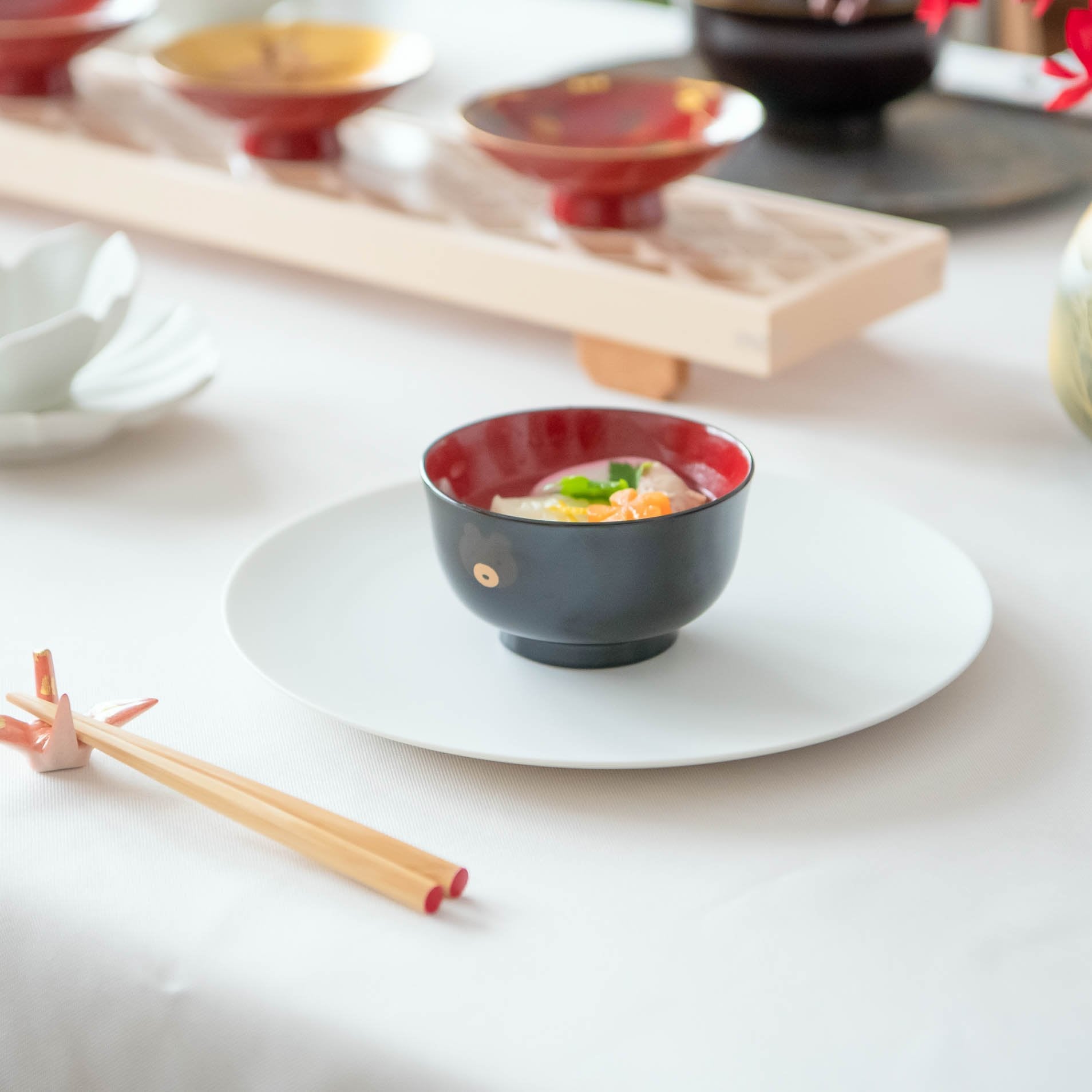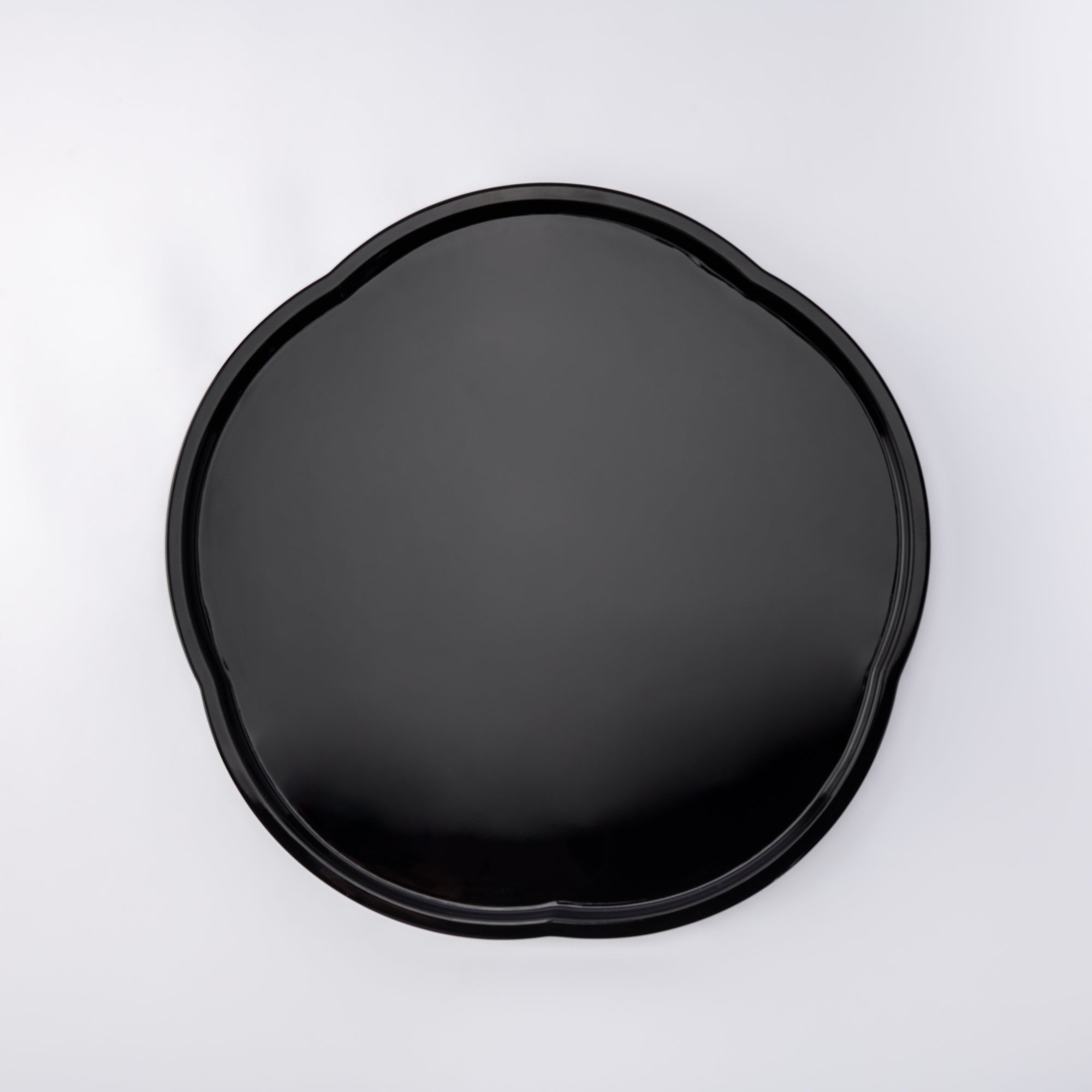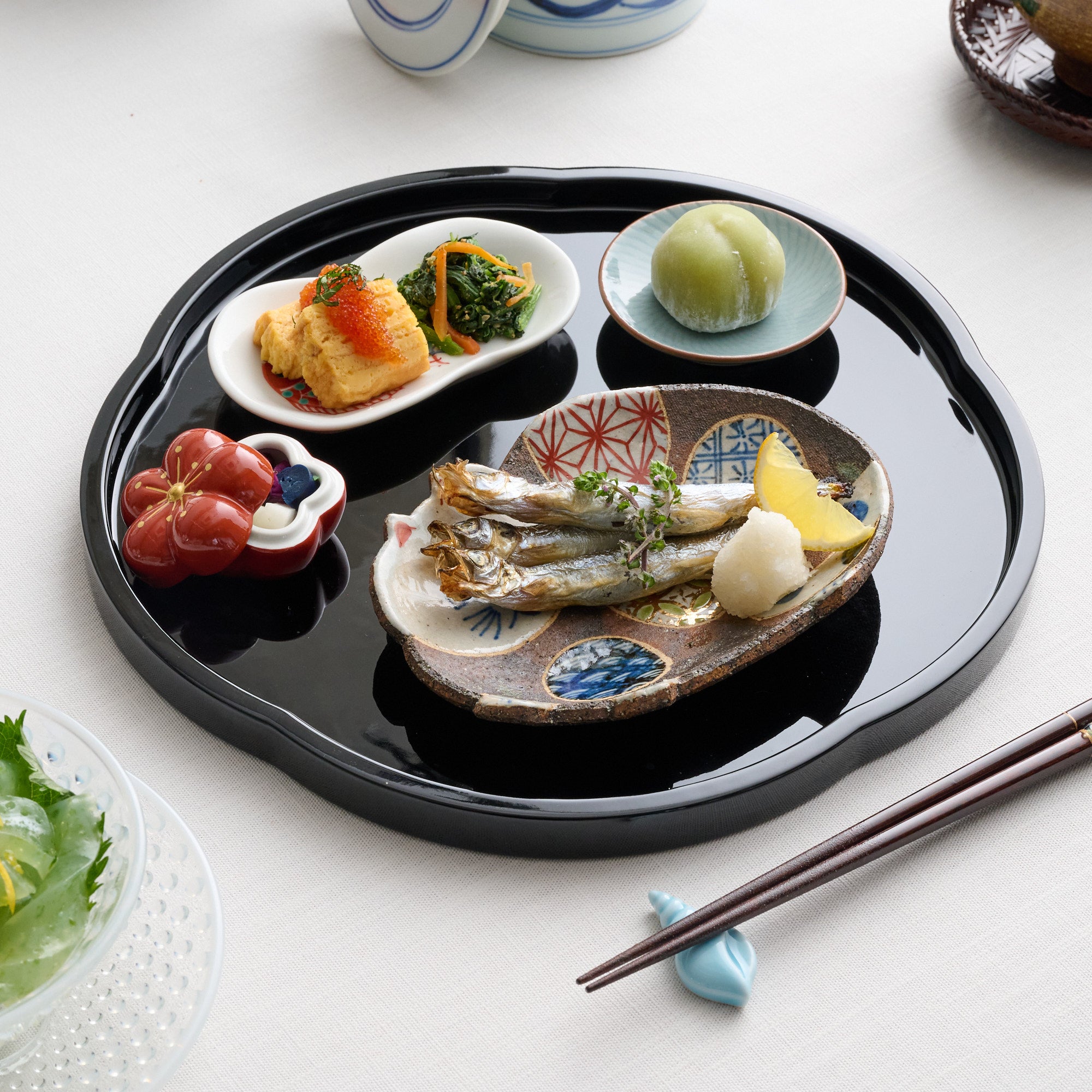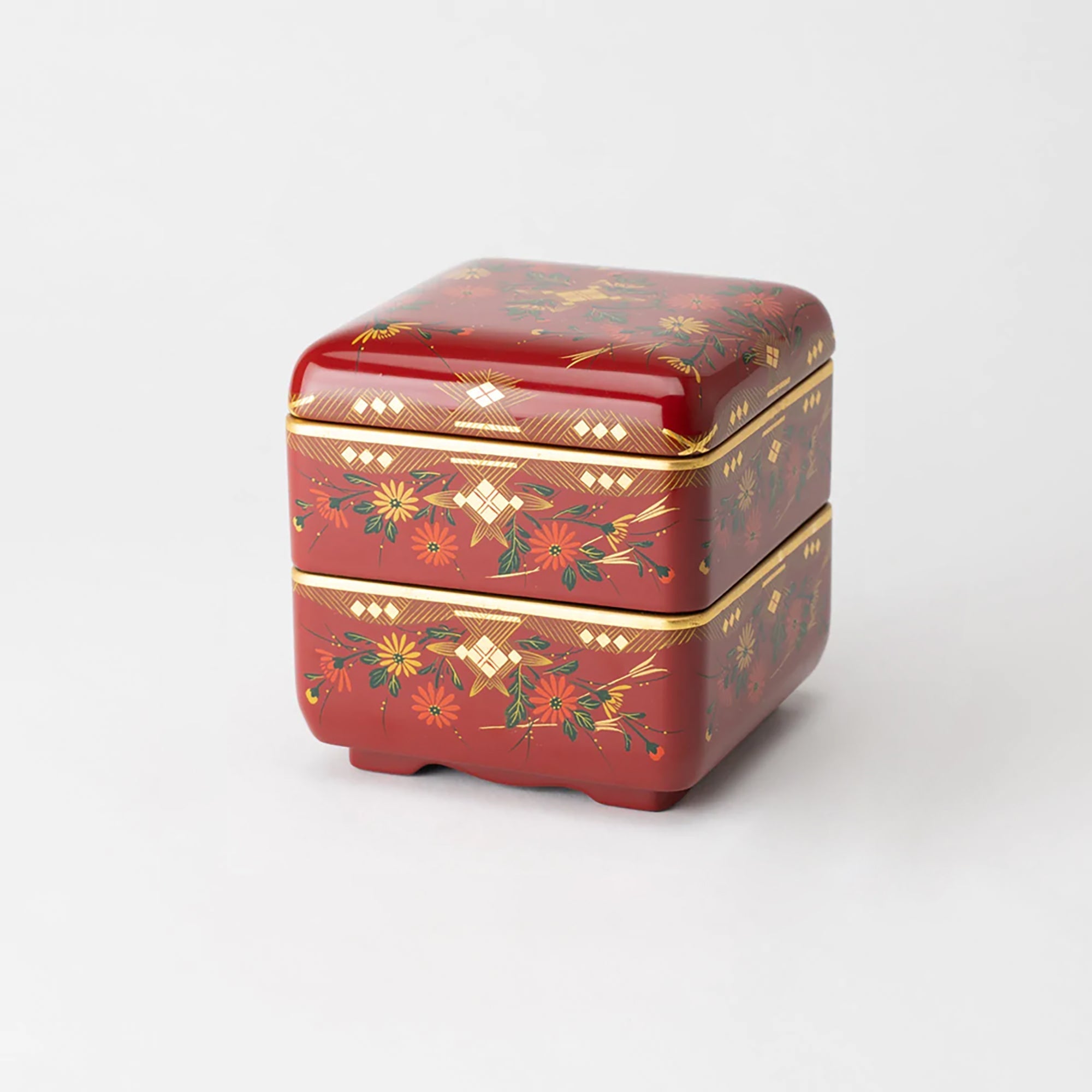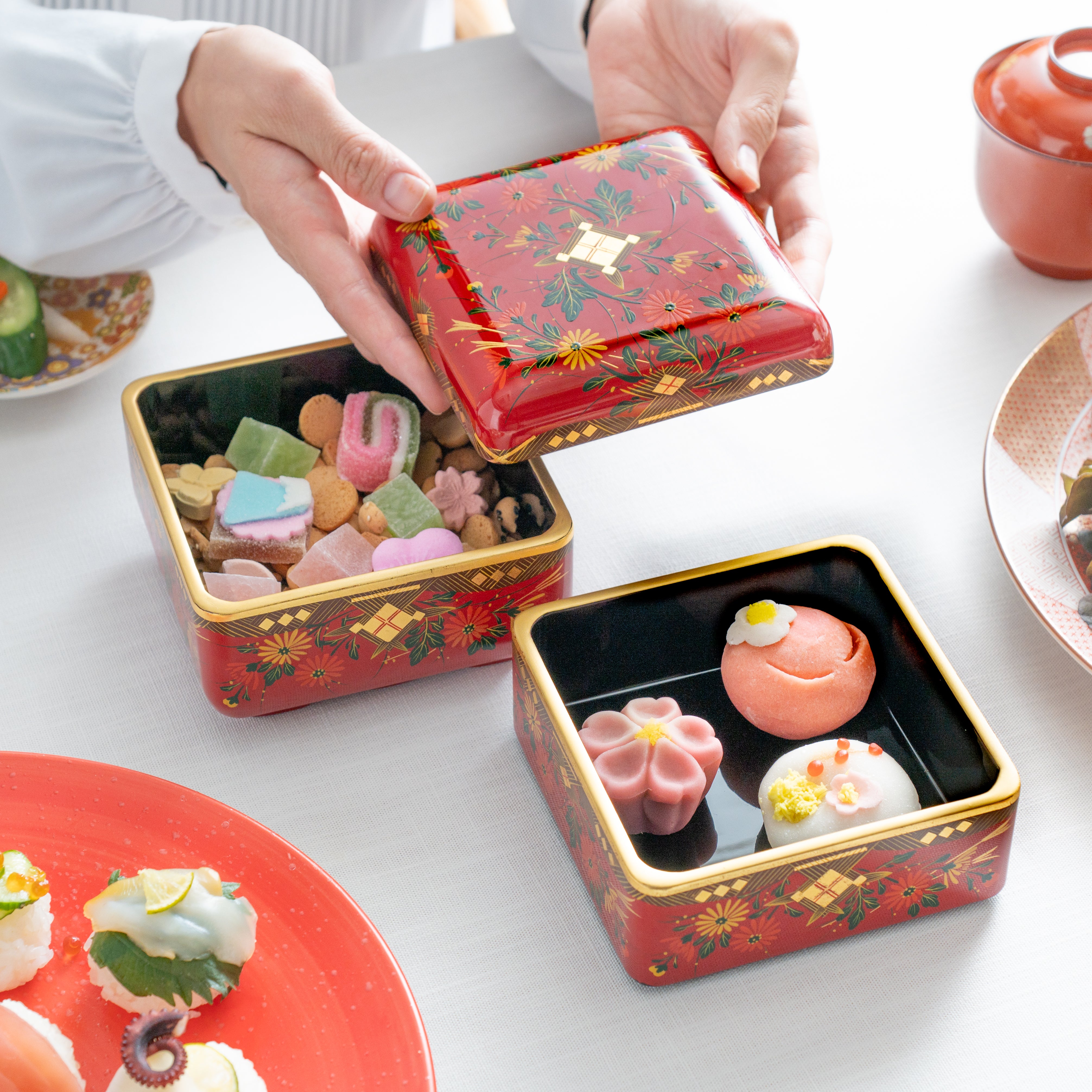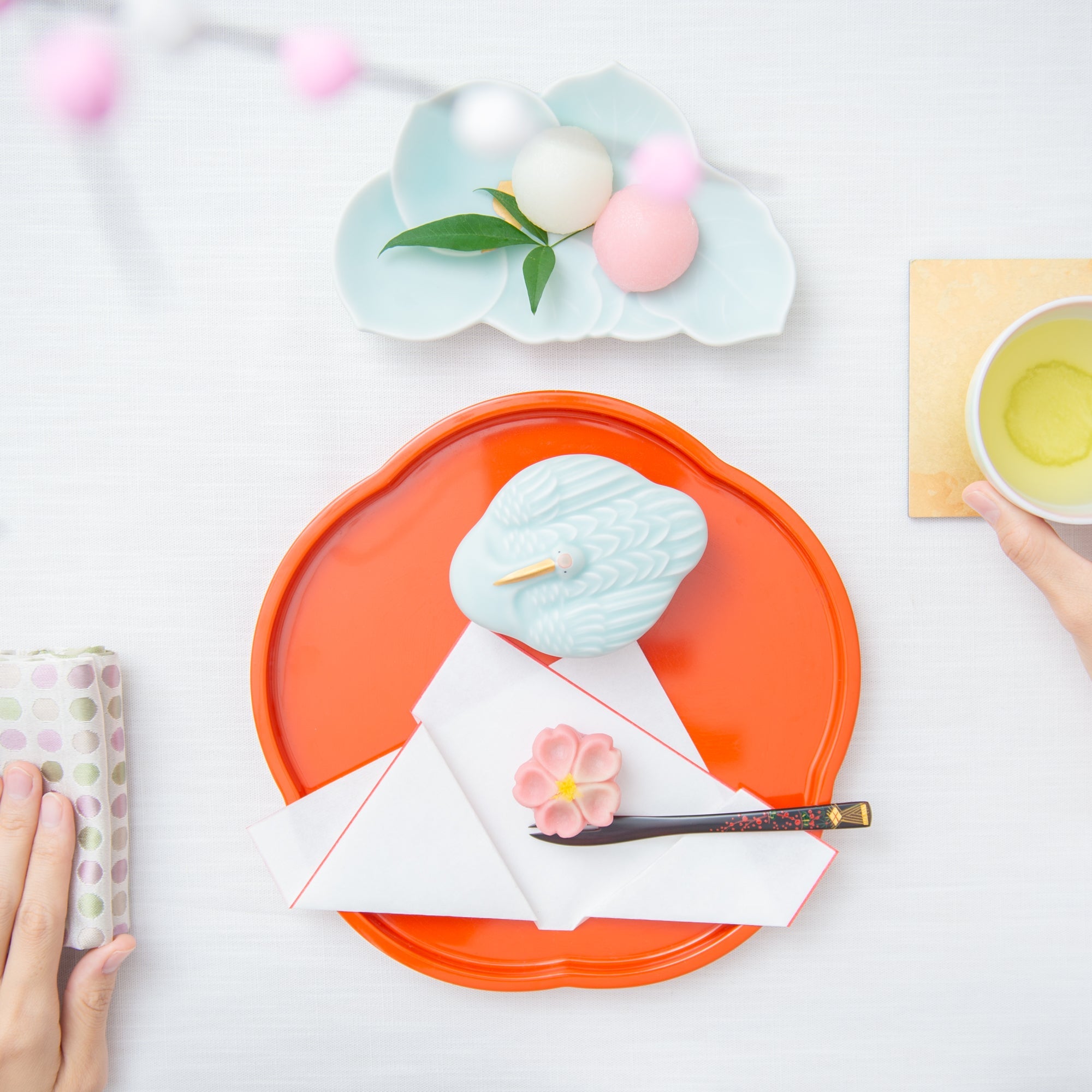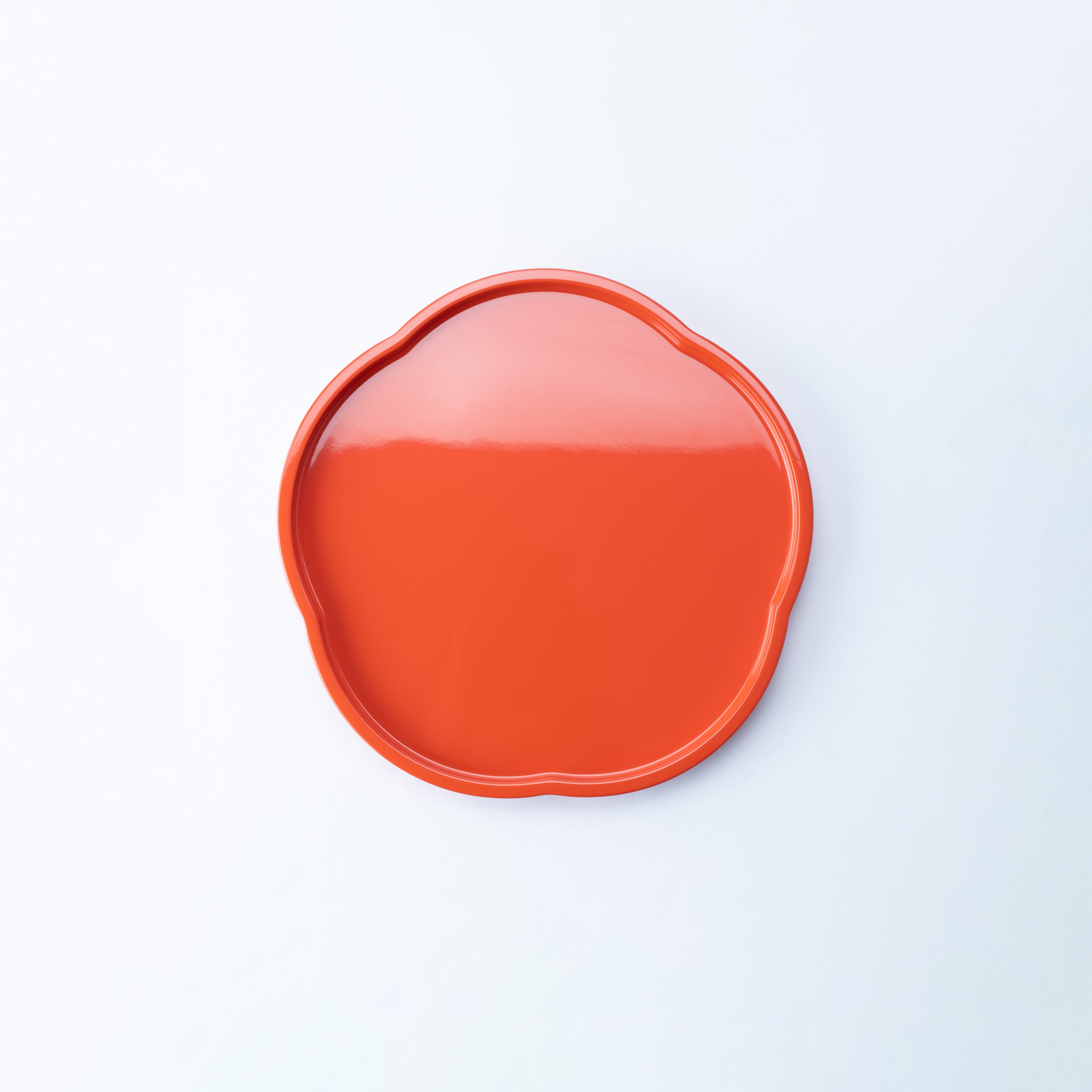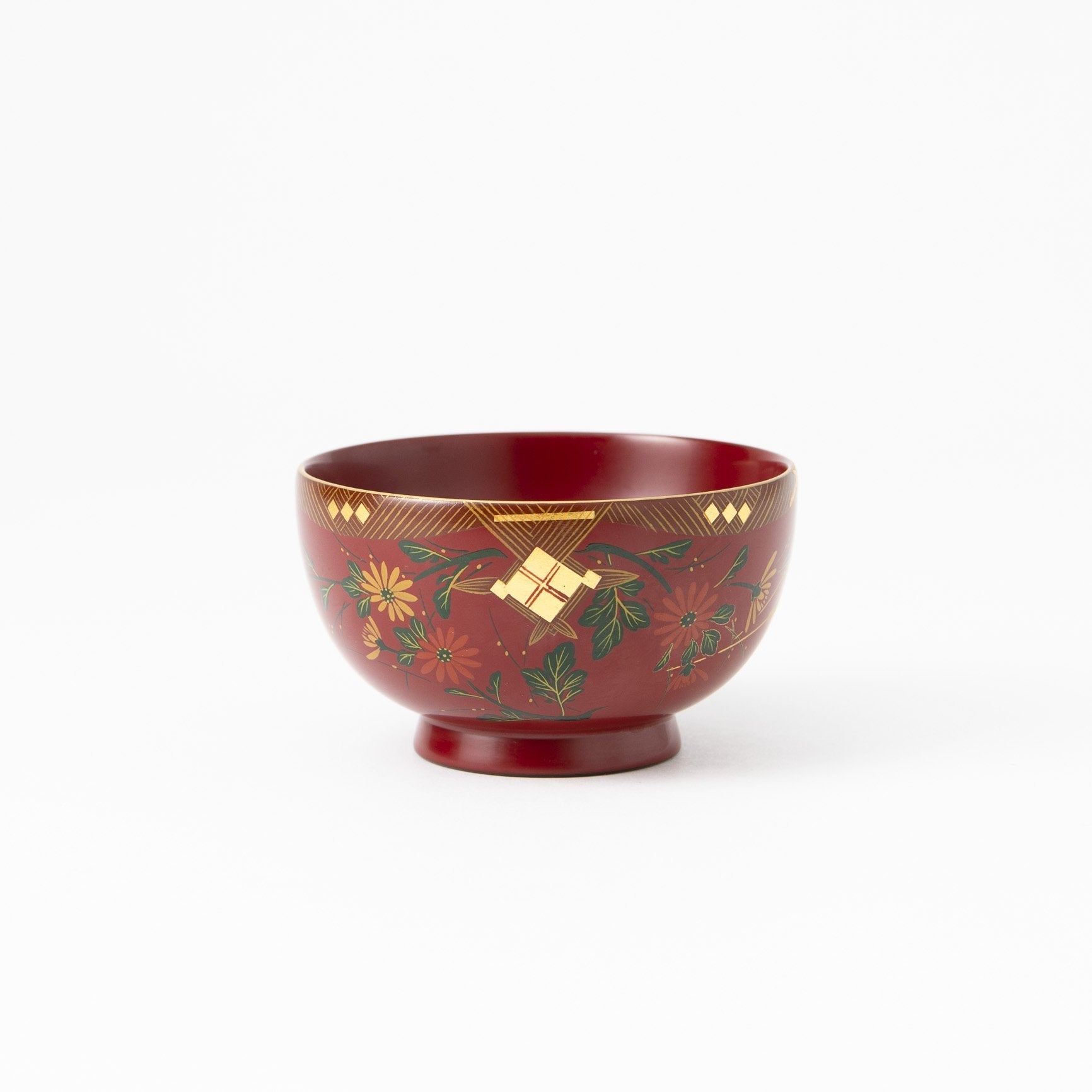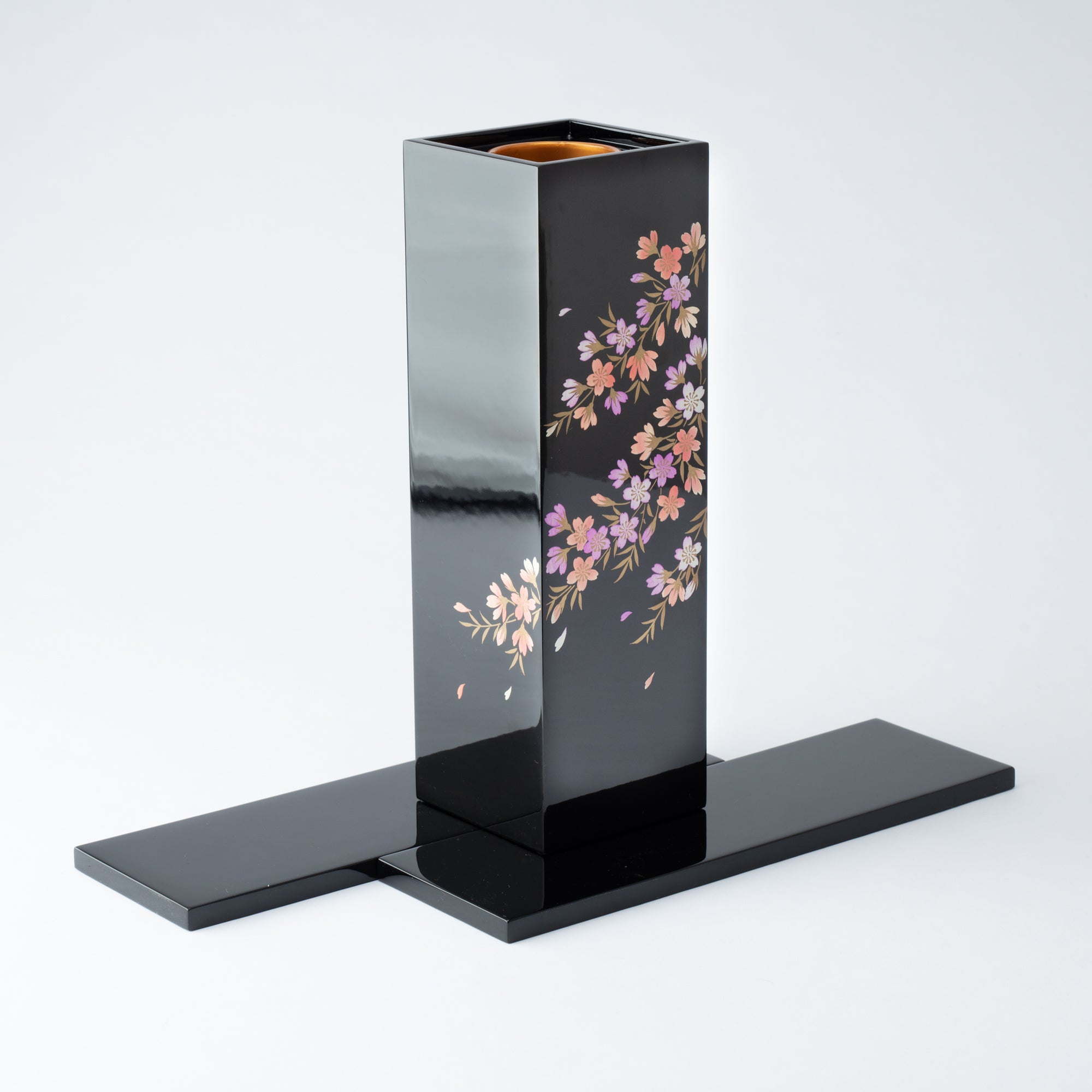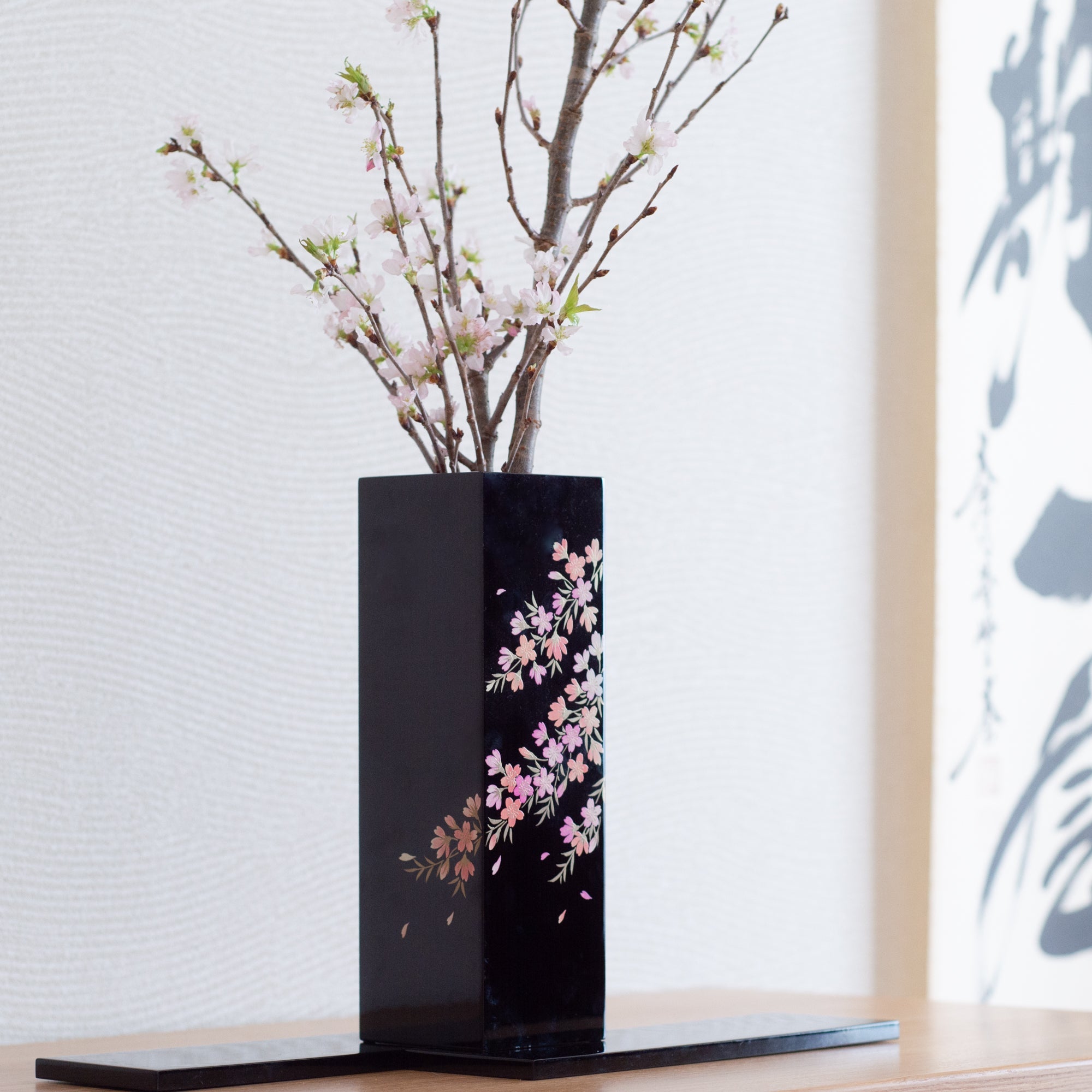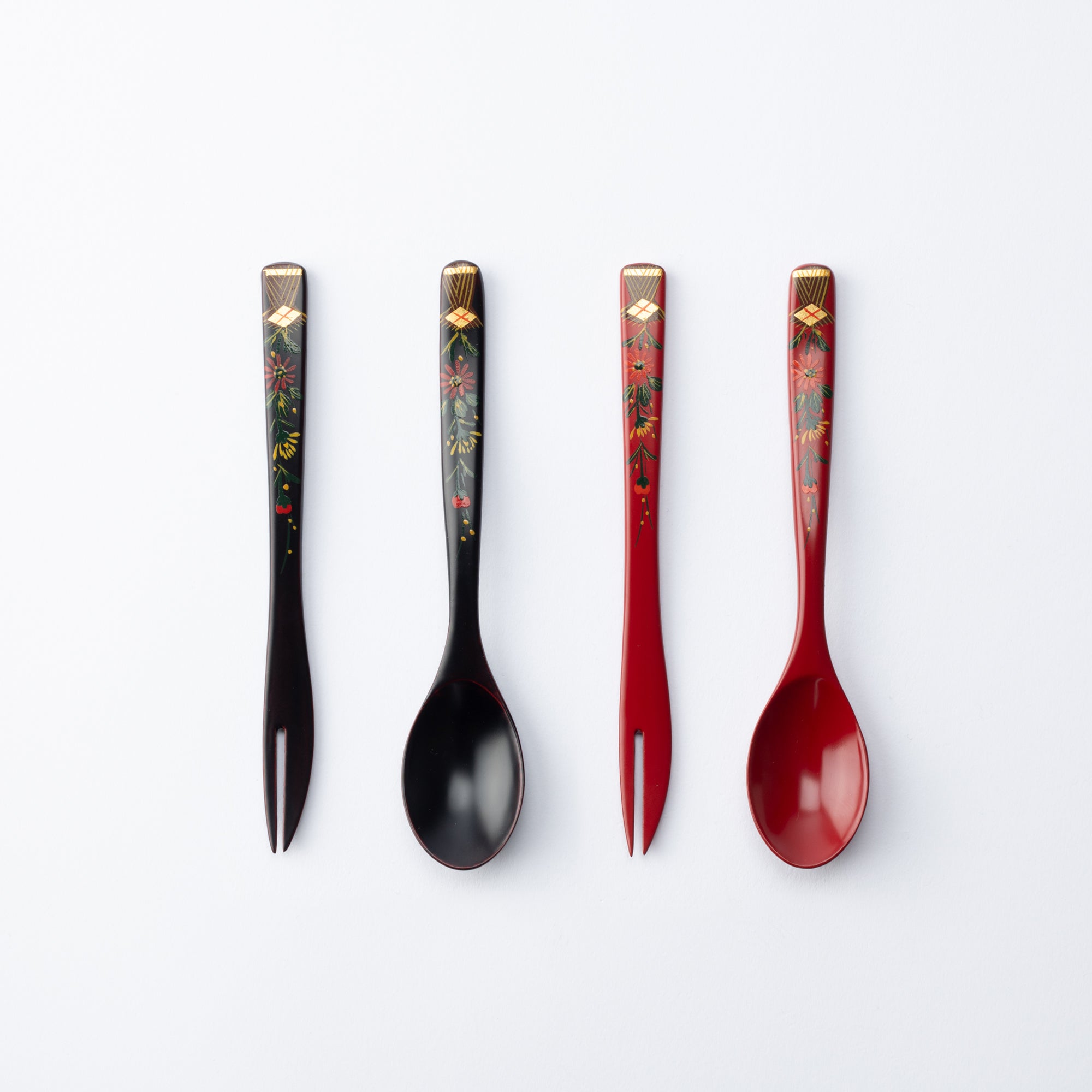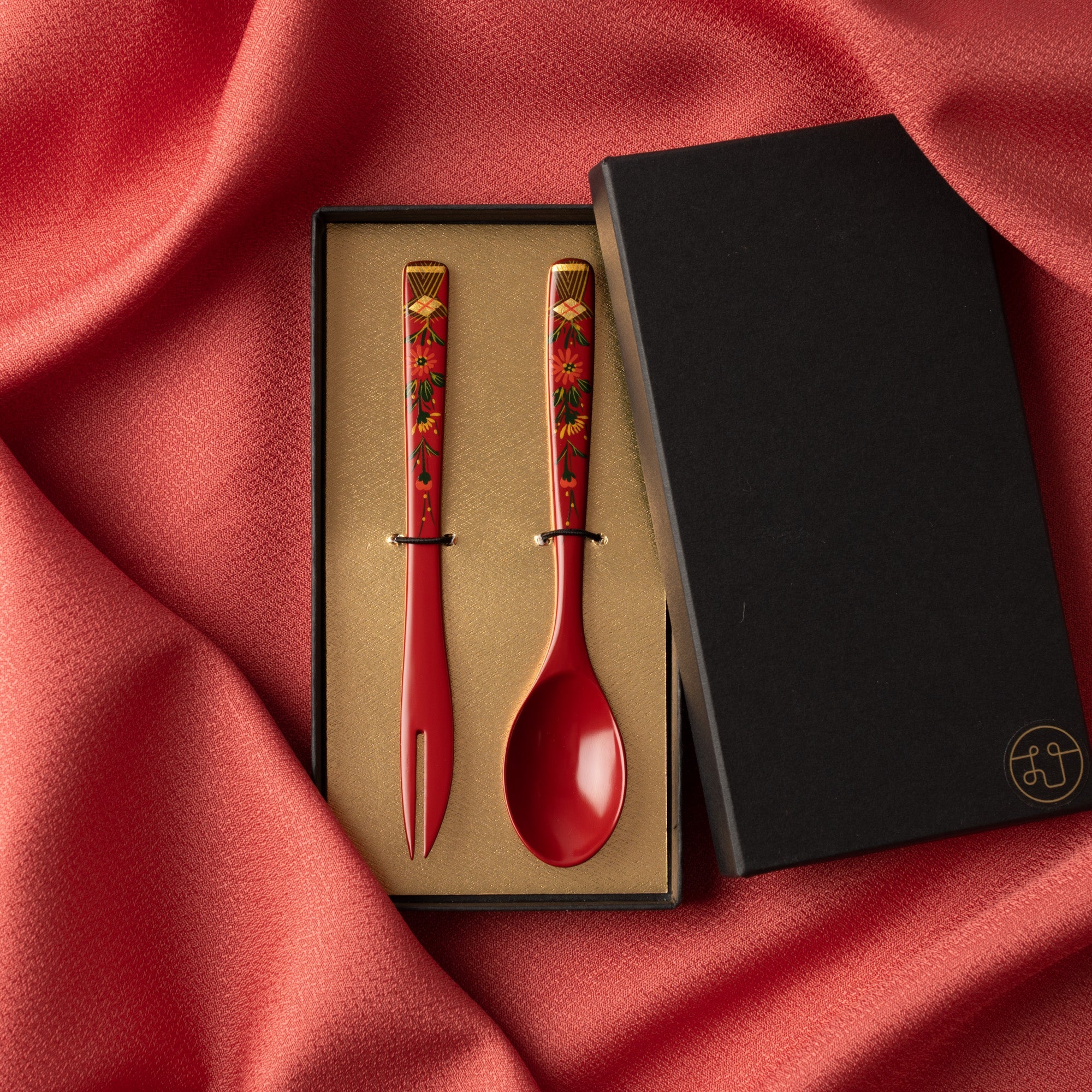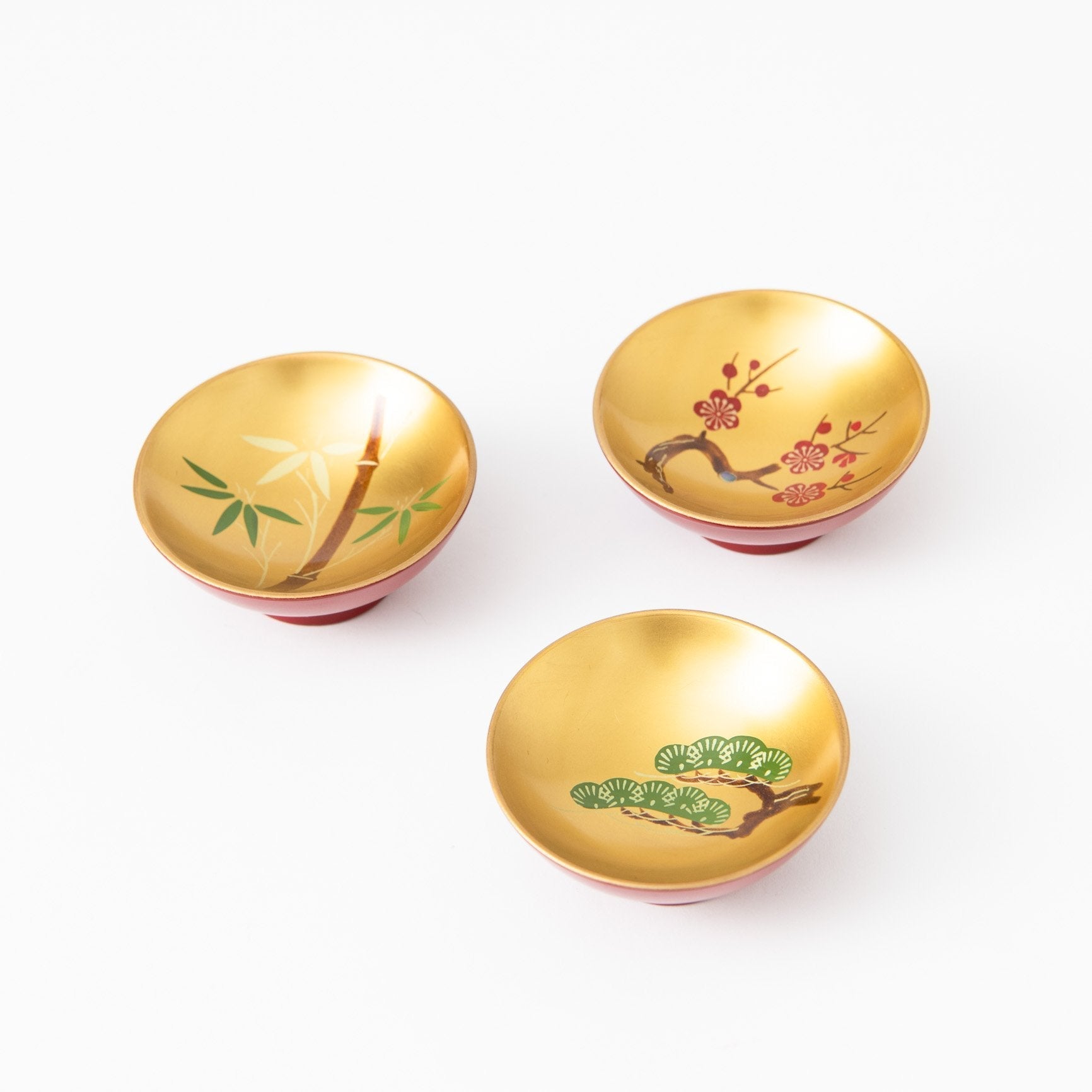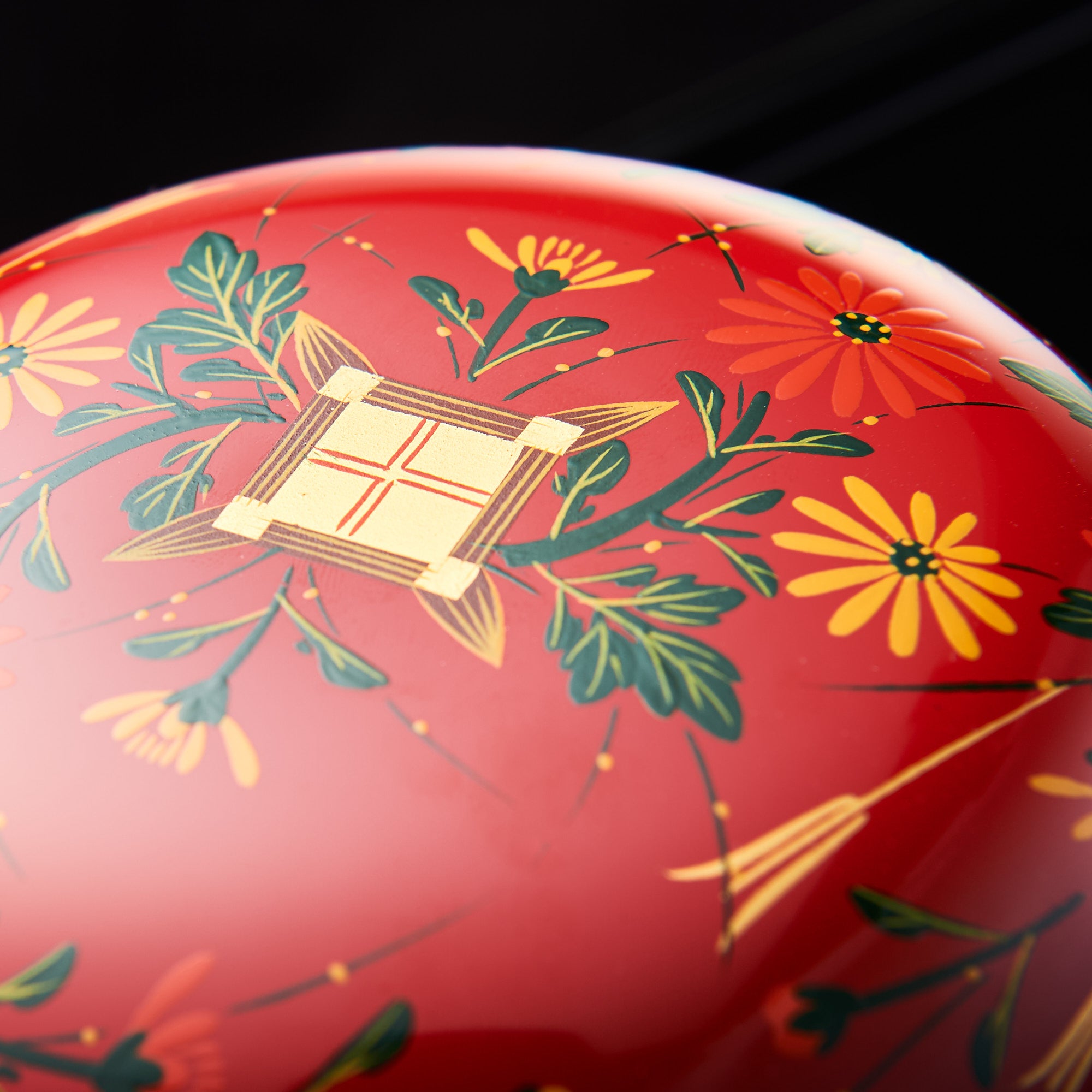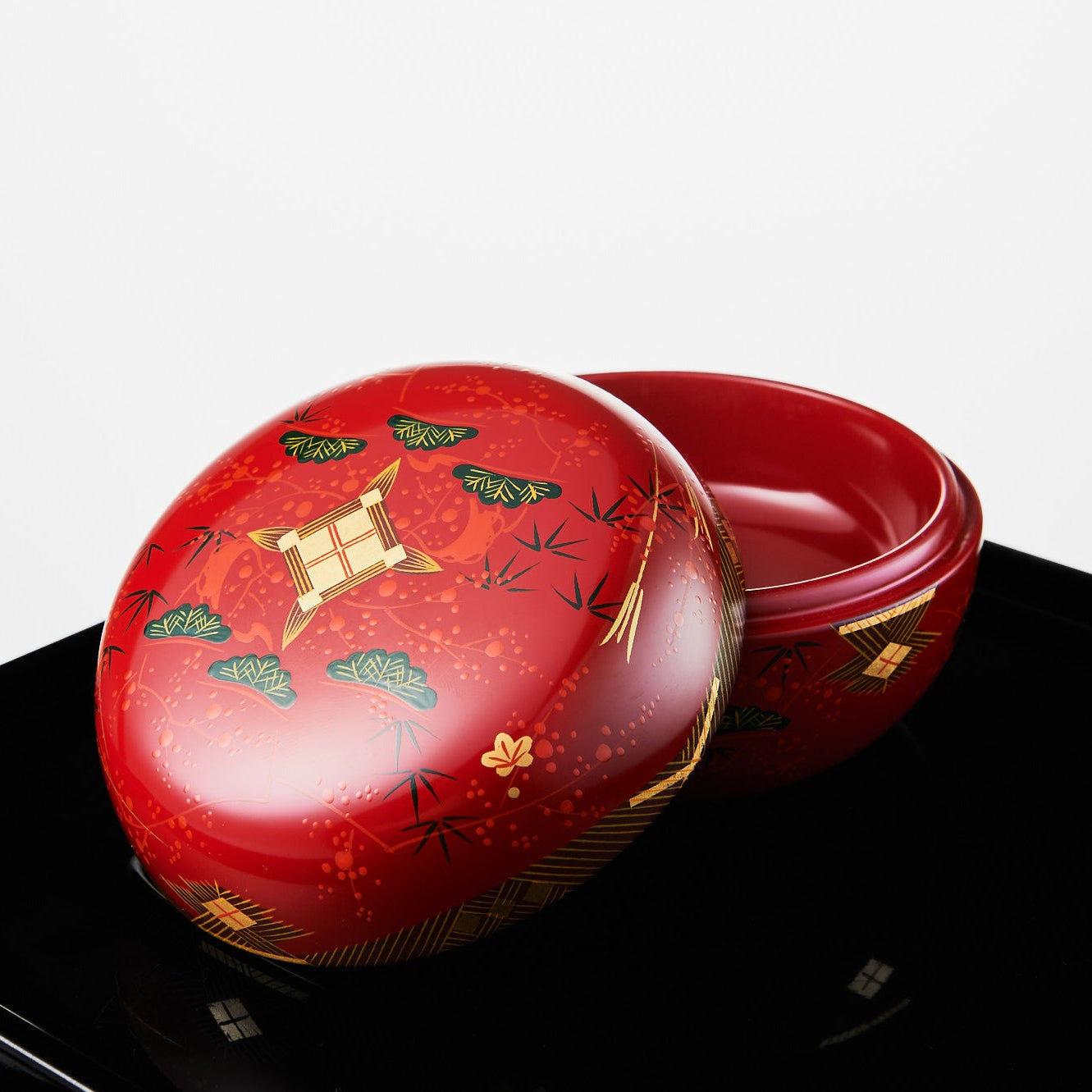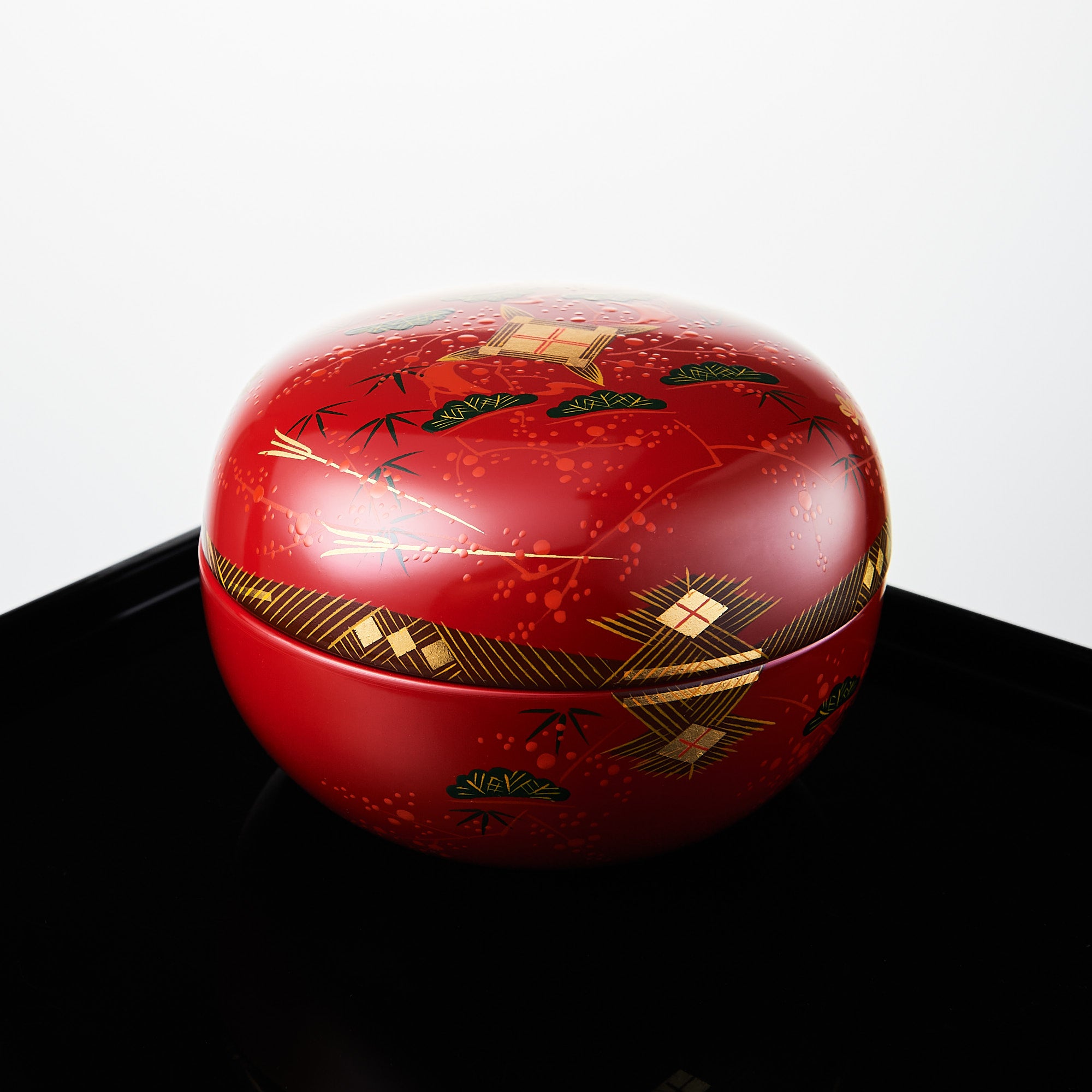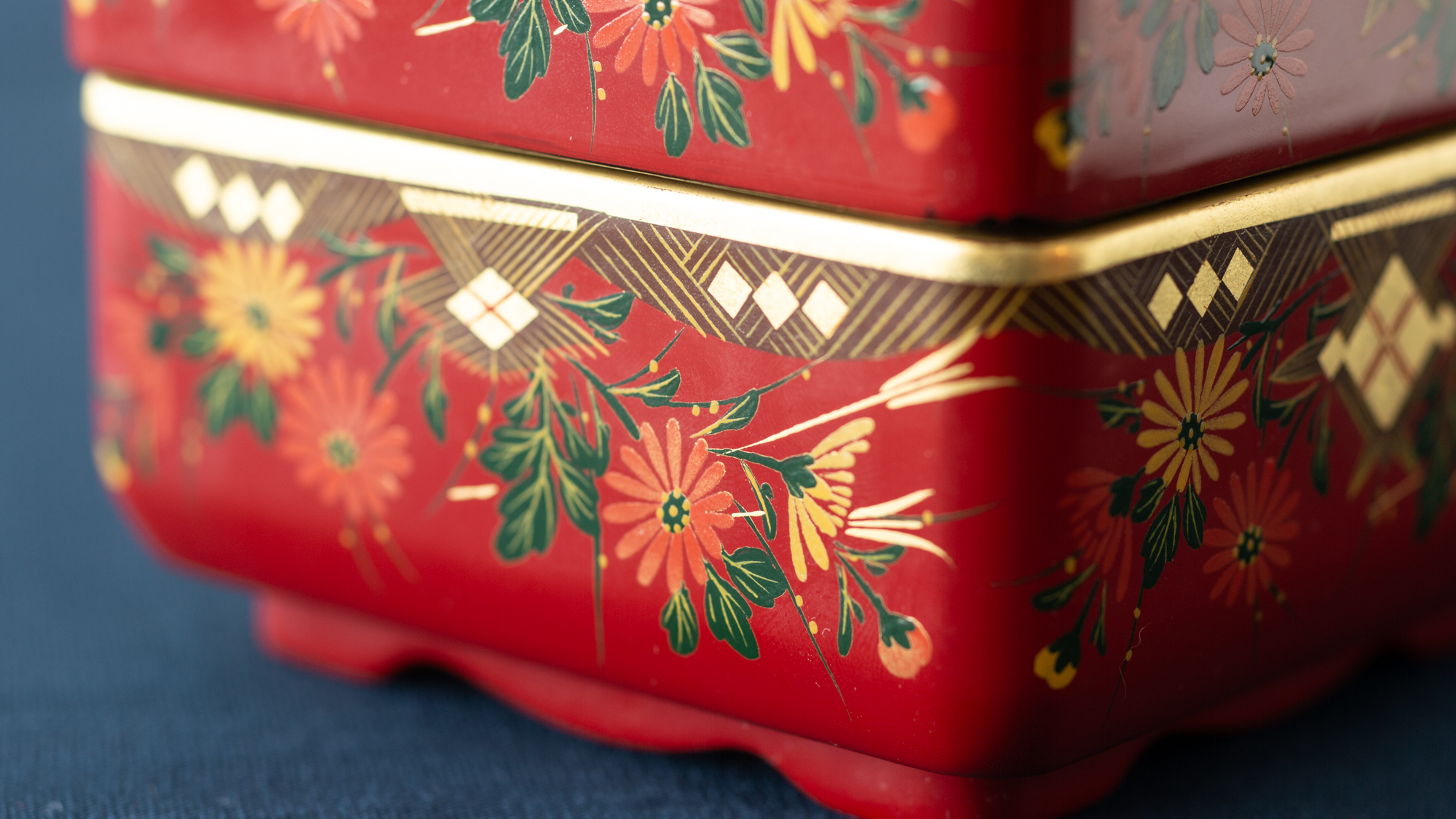
Lacado Aizu
La laca de Aizu es una artesanía tradicional originaria de la región de Aizu, en el oeste de Fukushima. Ubicada en una cuenca rodeada de cordilleras, el clima húmedo de la región proporciona las condiciones ideales para trabajar la laca. La laca de Aizu es conocida por sus motivos auspiciosos y sus refinadas técnicas decorativas, que incluyen Aizu-e, con vibrantes patrones florales japoneses y maki-e, que utiliza polvo de oro para crear diseños intrincados.
Firmemente arraigada en más de 400 años de tradición, la laca de Aizu continúa evolucionando adoptando técnicas modernas y compartiendo su belleza atemporal con el mundo de hoy.
La historia de la laca de Aizu se remonta al período Muromachi (1336-1573 d. C.), cuando un poderoso clan local promovió el cultivo de árboles de laca en la región. En 1590, Gamo Ujisato se convirtió en señor de Aizu e invitó a hábiles artesanos —incluyendo lacadores, ebanistas y artistas de maki-e— de su provincia natal de Omi (actual prefectura de Shiga), impulsando así el desarrollo de la laca como industria local.
En el siglo XVIII, se introdujeron técnicas decorativas como el maki-e desde Kioto, y la laca de Aizu se popularizó, llegando a exportarse a países como China y los Países Bajos. Aunque la industria sufrió graves daños durante la Guerra Boshin de 1868, se recuperó a finales del siglo XIX y se restableció como uno de los principales centros de producción de laca de Japón.
Con una historia que abarca más de 400 años, la laca de Aizu continúa transmitiéndose de generación en generación y sigue siendo un símbolo de artesanía perdurable.
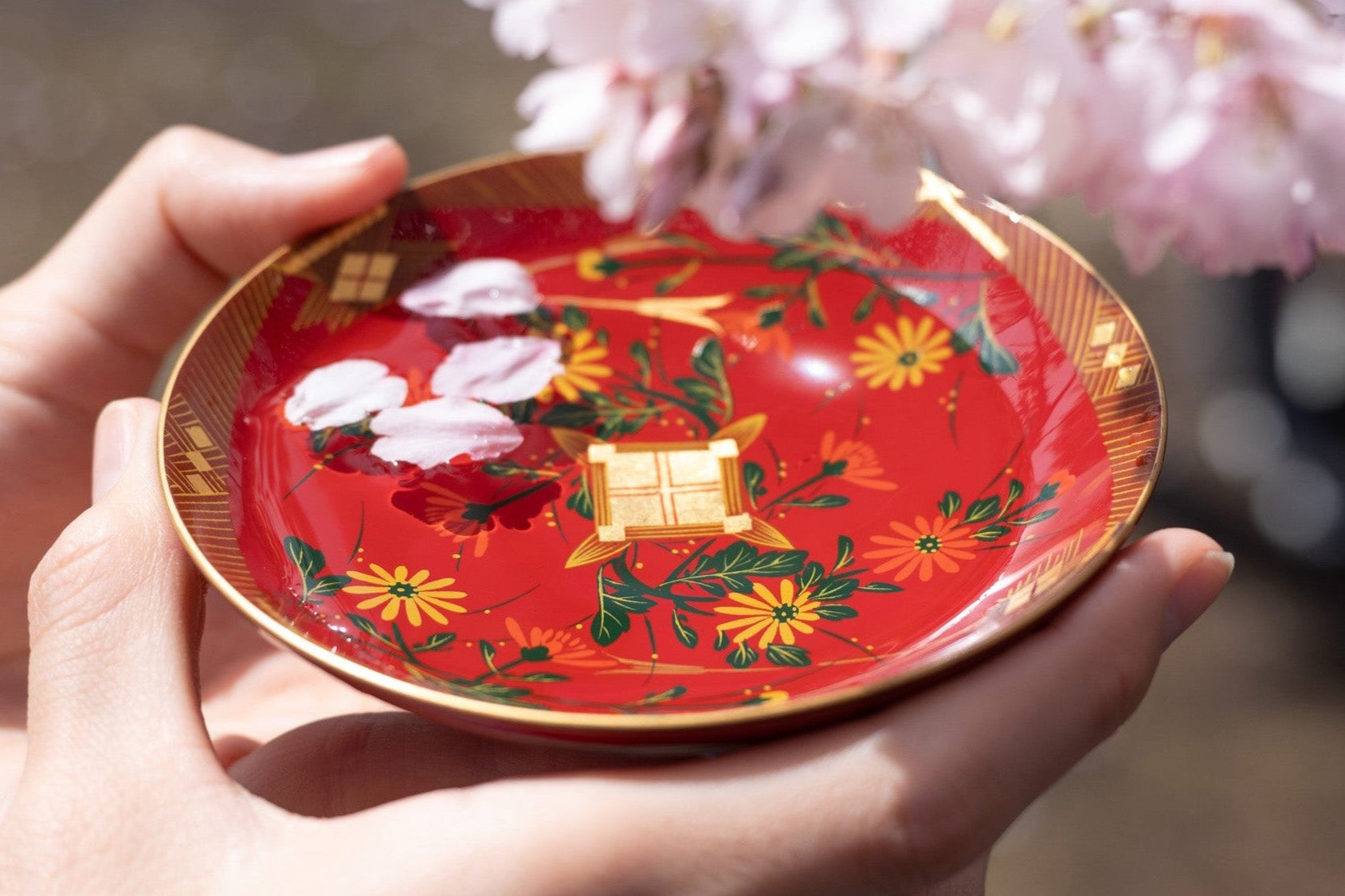
Hana-nuri utiliza un tipo de laca llamada yūyu-urushi, que consiste en laca mezclada con aceite secante. Esta mezcla realza el brillo y facilita su aplicación. Sin embargo, aplicar la laca uniformemente con una brocha es extremadamente difícil y requiere habilidades avanzadas de artesanos experimentados. El proceso de recubrimiento consta de tres capas: la capa base, la capa intermedia y la capa superior.
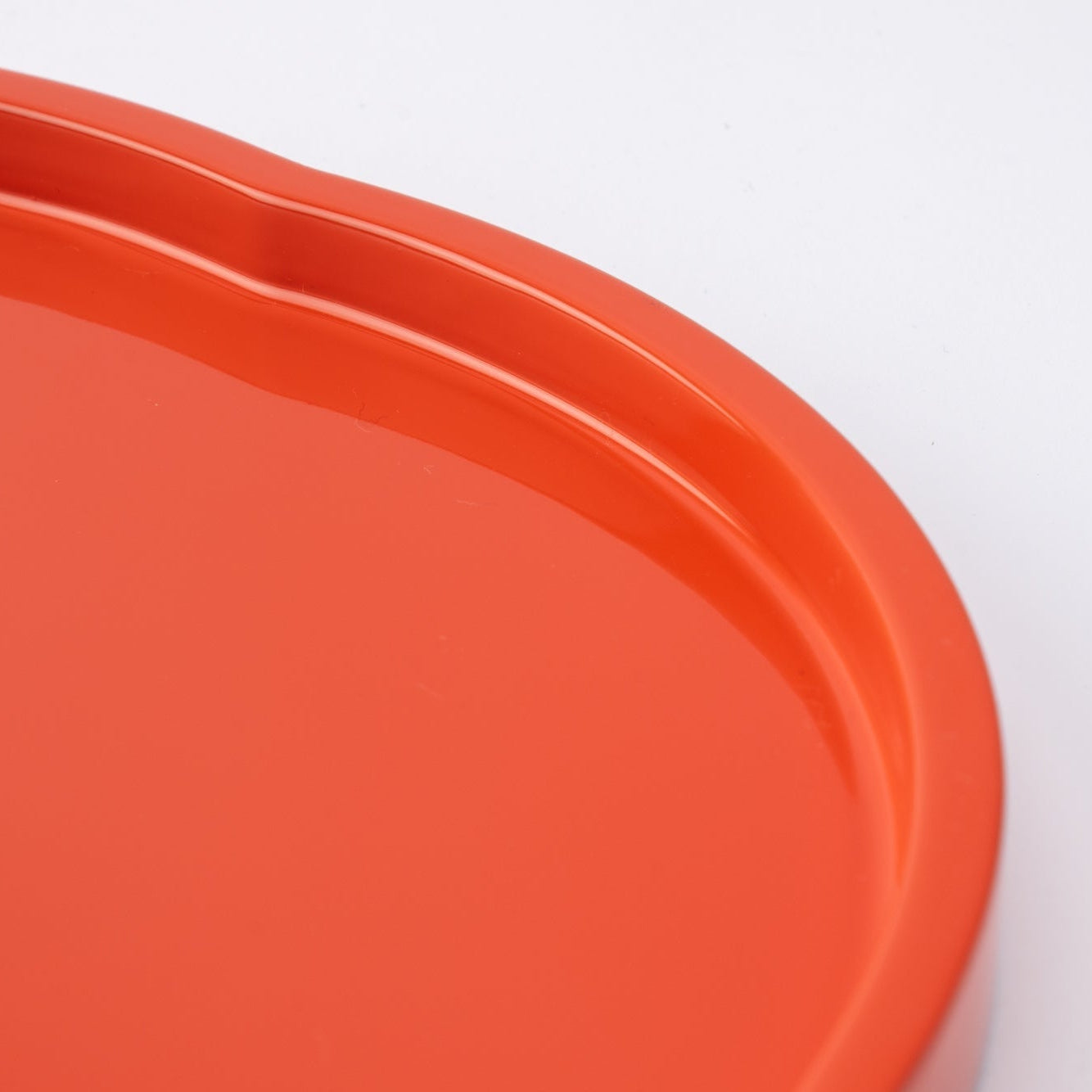
Urushi-e Es una técnica en la que se aplica laca de color (iro-urushi) se aplica directamente con un pincel para crear patrones decorativos. La laca de color se elabora mezclando pigmentos como rojo, amarillo o azul. Debido a las propiedades naturales de la laca, la disponibilidad de colores es algo limitada, dando como resultado tonos tranquilos y tenues como el negro, el rojo, el amarillo, el verde y el marrón. El característico Aizu-e combina elementos auspiciosos como el pino, el bambú, las flores de ciruelo y flechas decorativas.
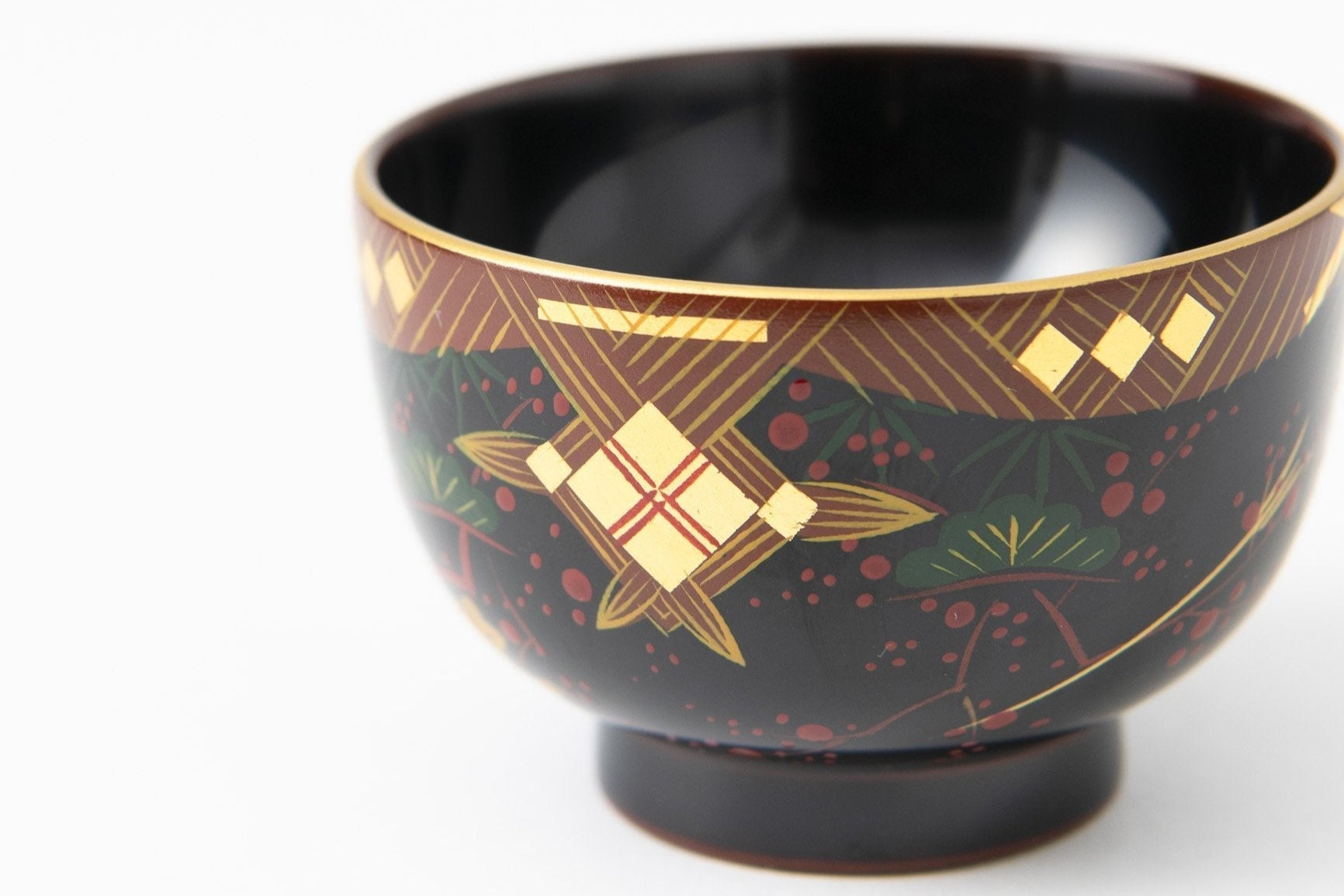
Chinkin Implica tallar patrones en una superficie lacada utilizando una cuchilla especial llamada chinkin-toSe incrusta pan de oro, pan de plata o polvo de oro finamente molido en las ranuras talladas. Tras retirar el exceso de metal de las zonas no talladas, el diseño permanece incrustado en la superficie. Dado que el chinkin de Aizu utiliza un tallado más superficial que en otras regiones, el resultado es una impresión más suave y delicada.
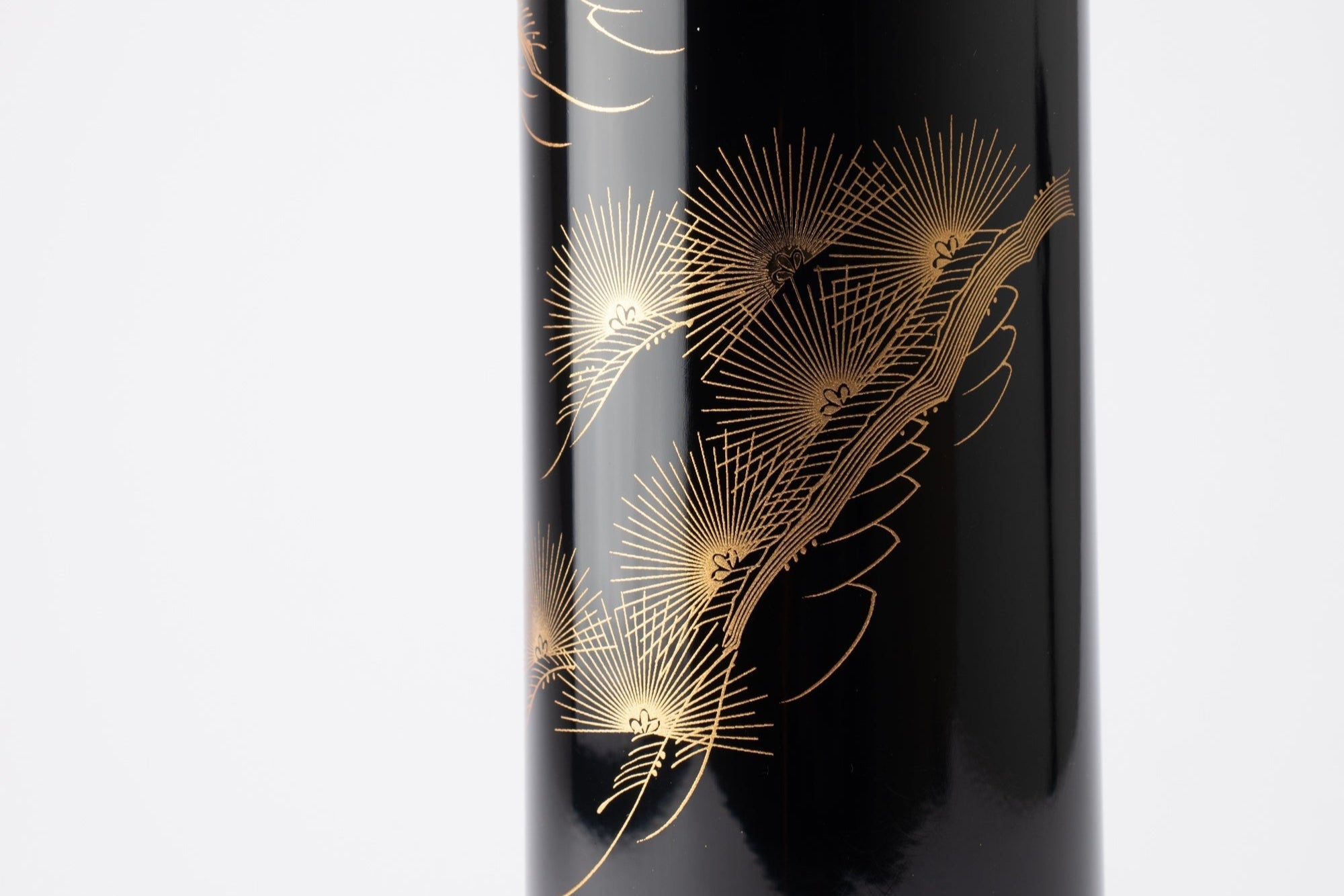
El maki-e es una técnica decorativa en la que se pinta un diseño con laca y luego se espolvorea con oro o polvo de color, utilizando la laca como adhesivo. Entre los diversos tipos de maki-e, la laca de Aizu es especialmente conocida por... keshifun Maki-e. En este método, el diseño se dibuja con un pincel impregnado de laca y, luego, supervisando cuidadosamente el proceso de secado, se aplica con cuidado el polvo de oro más fino (keshifun) con guata de algodón. Esto da como resultado un acabado suave y mate de elegante sutileza.
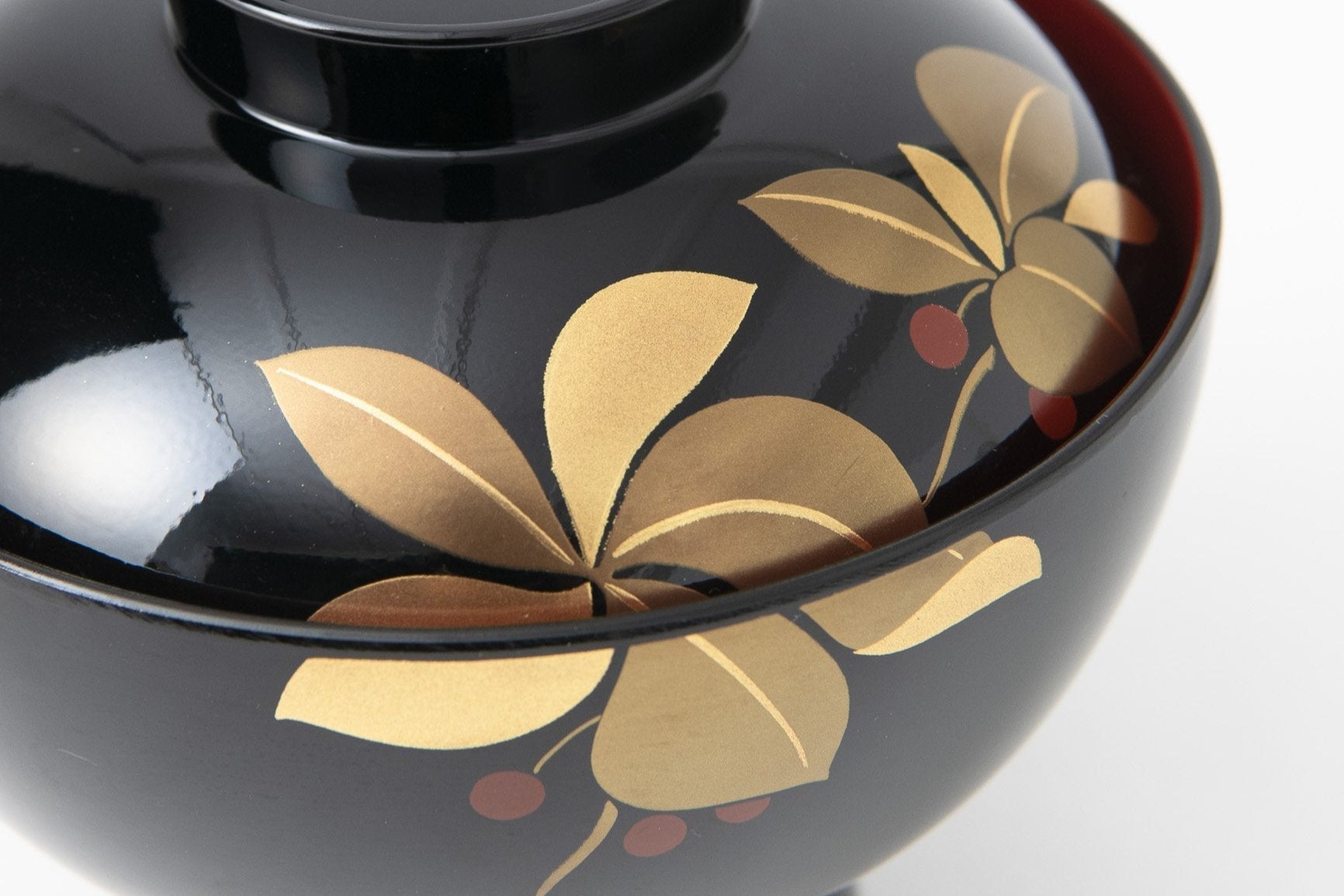
Proceso de producción
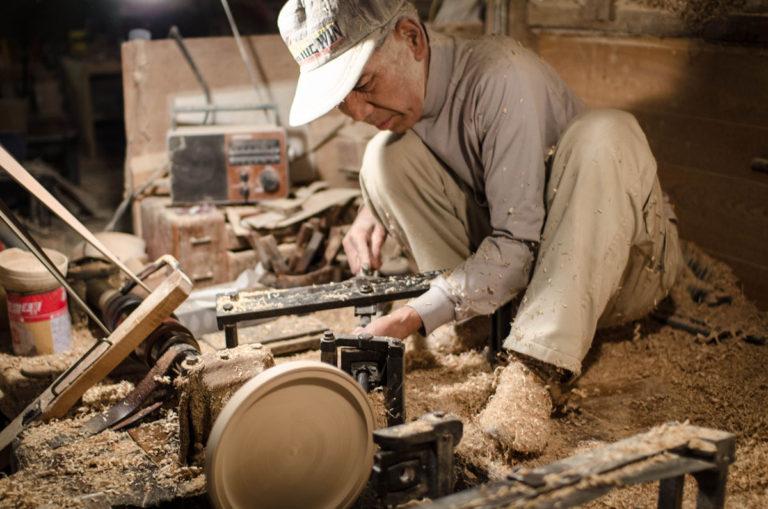
Fabricación de la base de madera
El lacado tradicional comienza con la cuidadosa preparación de una base de madera, seguida de la aplicación de laca y técnicas decorativas. Los árboles utilizados como materia prima se cultivan durante décadas o incluso siglos. Tras la tala, la madera se seca durante varios años, a veces décadas, para alcanzar su calidad óptima. Los carpinteros expertos determinan el momento ideal para utilizar la madera, realzando sus mejores cualidades en cada pieza que crean.
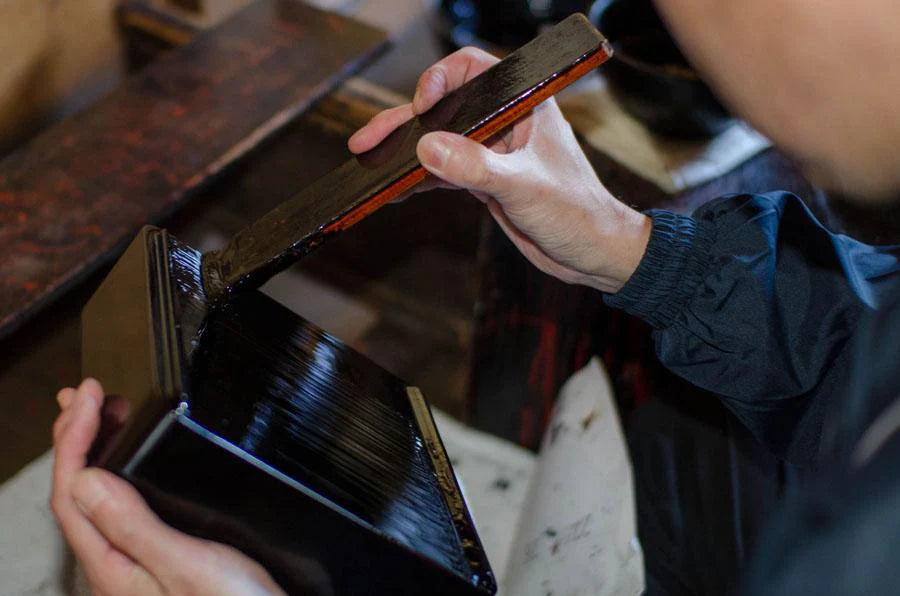
Revestimiento
La función del lacador es aplicar capas de laca a la base de madera moldeada, dándole una textura suave y refinada como si fuera un recipiente, a la vez que aumenta su durabilidad. La laca se endurece mediante una reacción química en la que el urushiol, uno de sus componentes principales, se une a la humedad del aire. Al refinar cuidadosamente la laca y aplicarla en múltiples capas, desde la capa base hasta el acabado final, se crea una textura cálida y distintiva.
Este proceso requiere un profundo conocimiento de las propiedades de la laca. Debido a su alta sensibilidad al polvo y a las partículas suspendidas en el aire, la humedad debe controlarse meticulosamente en todo momento. Por ello, el espacio de trabajo se mantiene estrictamente aislado, e incluso los miembros de la familia rara vez pueden entrar durante el proceso de recubrimiento.
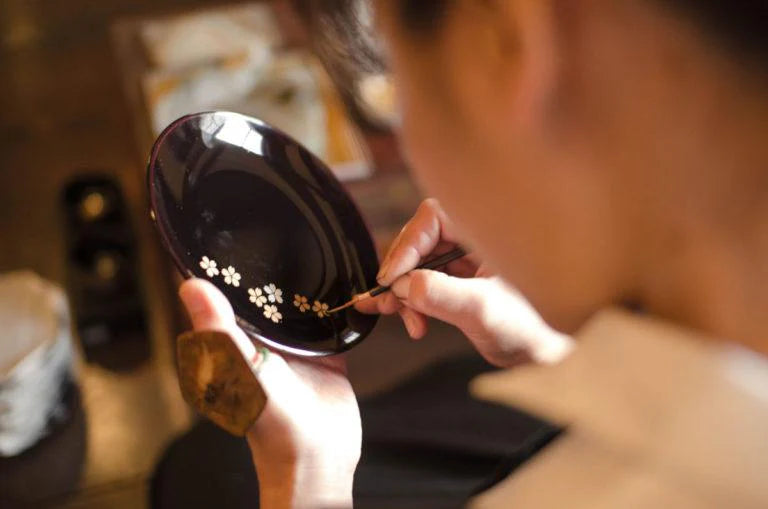
Decoración Maki-e
En esta técnica decorativa tradicional, se dibuja un patrón o imagen sobre la superficie lacada con un pincel fino. Mientras la laca aún está húmeda, se espolvorea suavemente polvo de oro o plata sobre el diseño. Una vez seco, el patrón se revela con detalles brillantes. El maki-e aprovecha la adhesividad natural de la laca, permitiendo que incluso las líneas más finas se recreen con precisión y gracia. A continuación, se aplica y pule una fina capa final de laca, completando la exquisita decoración maki-e.
Creadores
Artículos relacionados
Filtros


